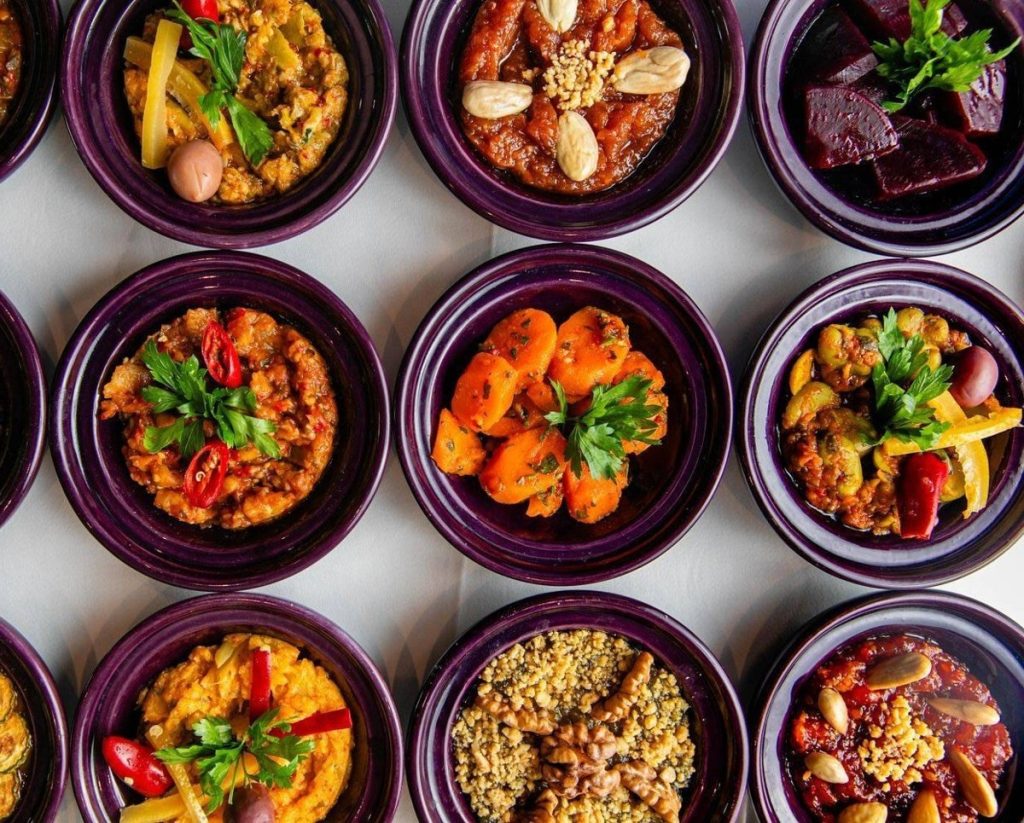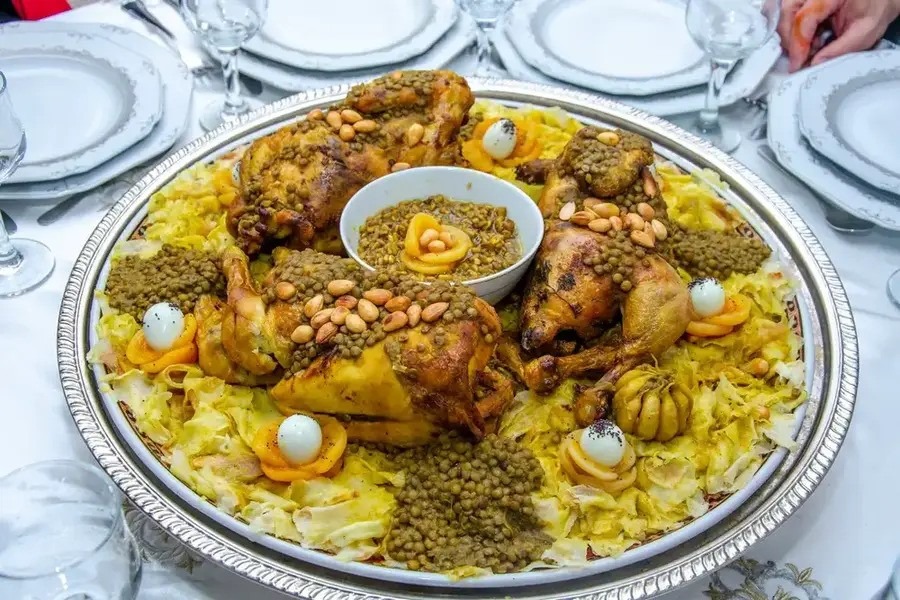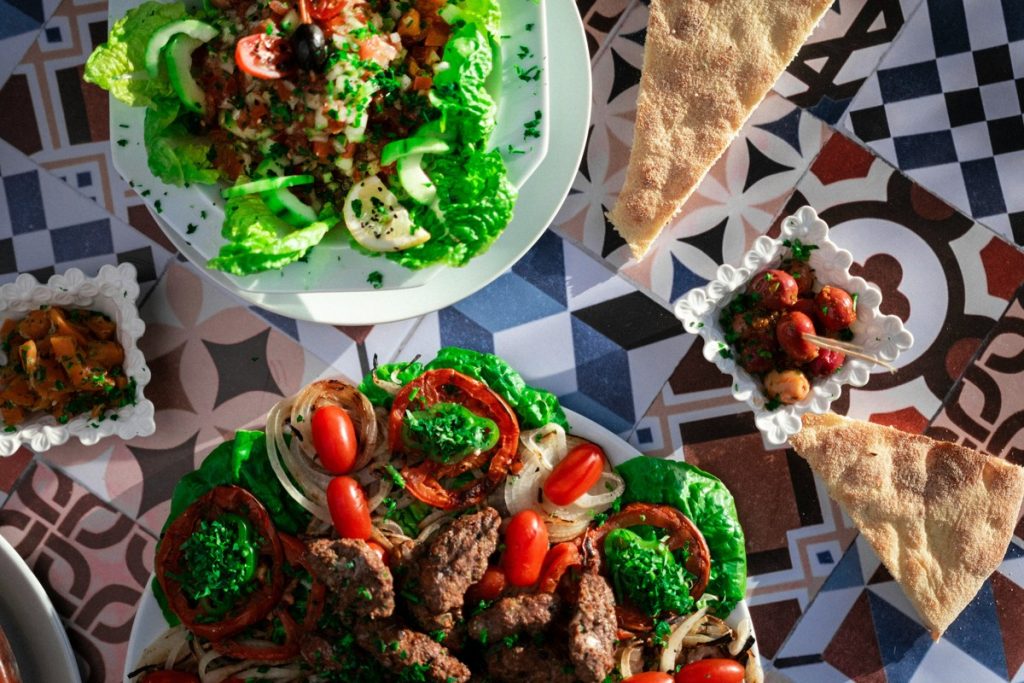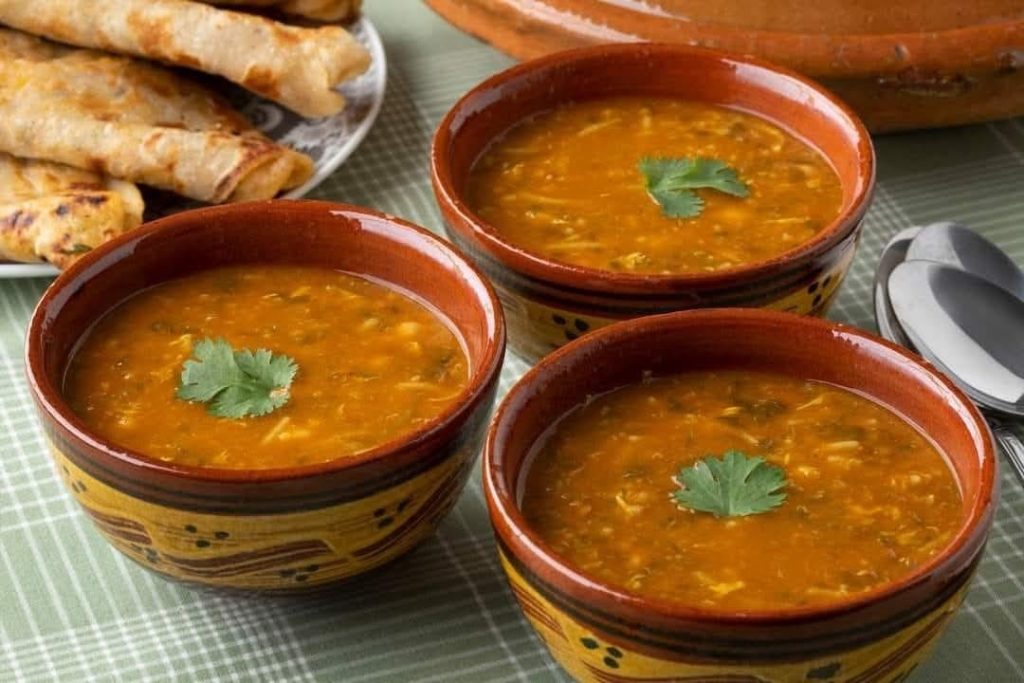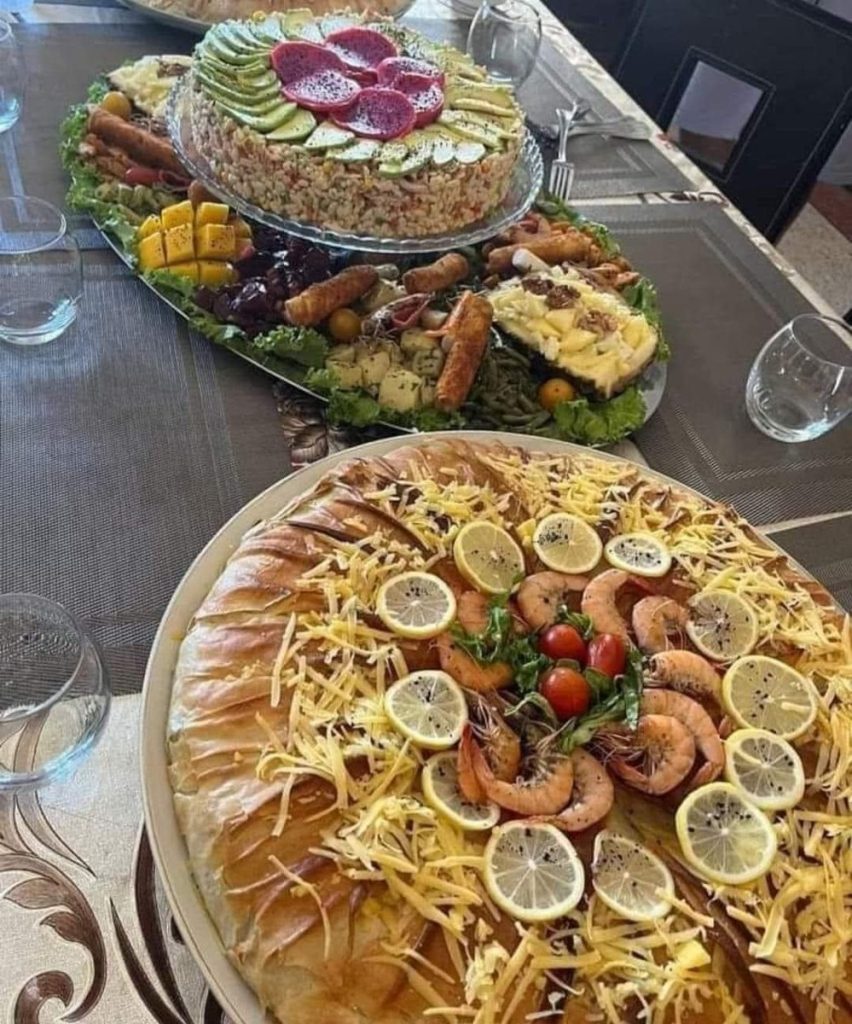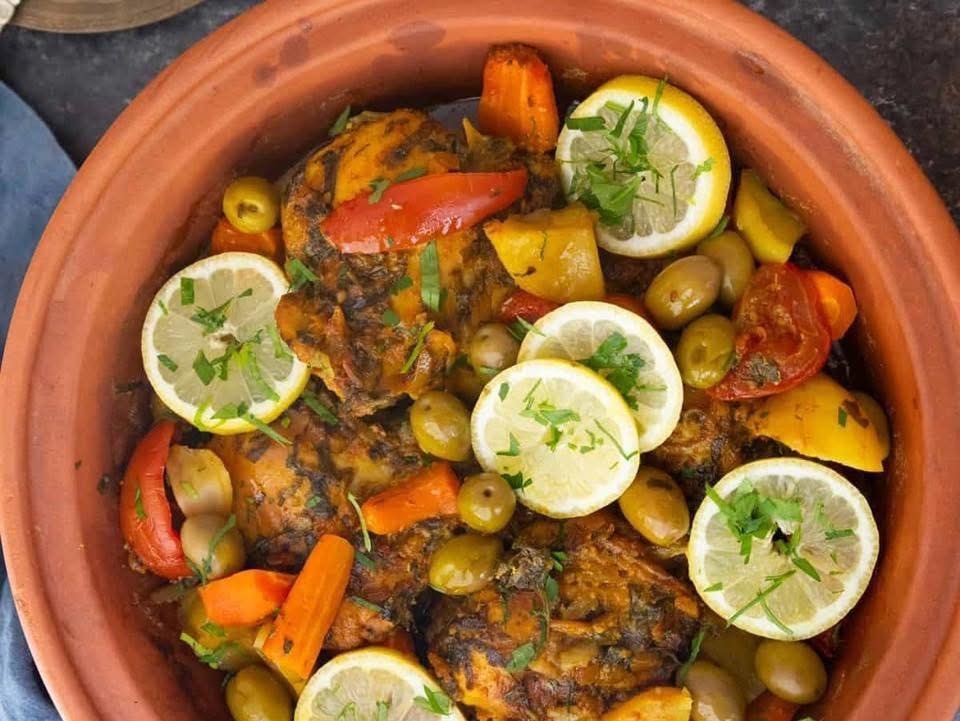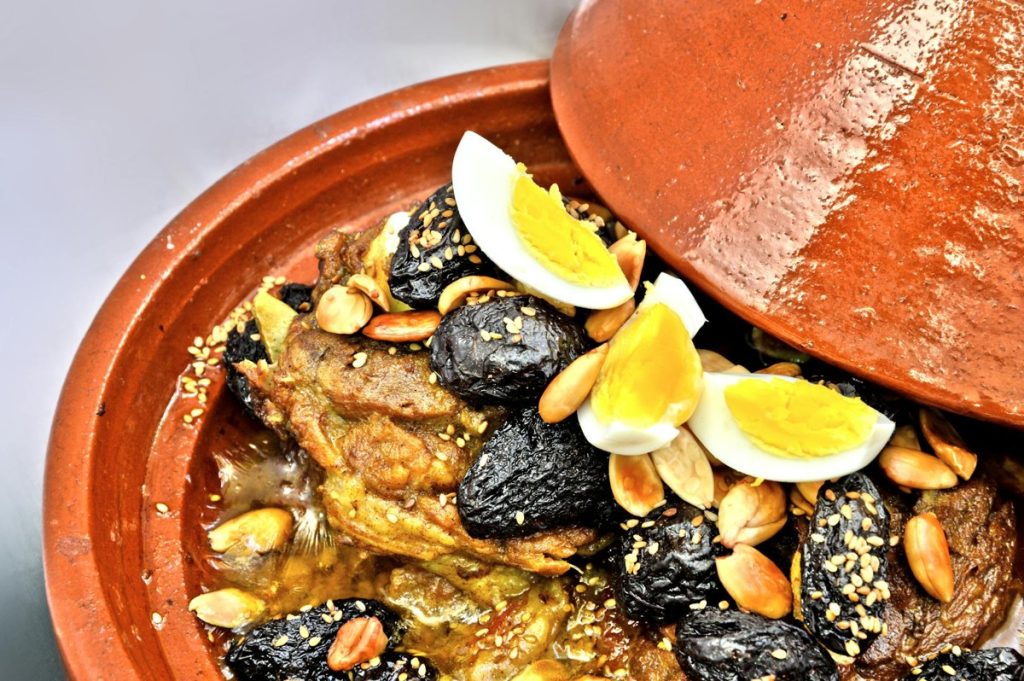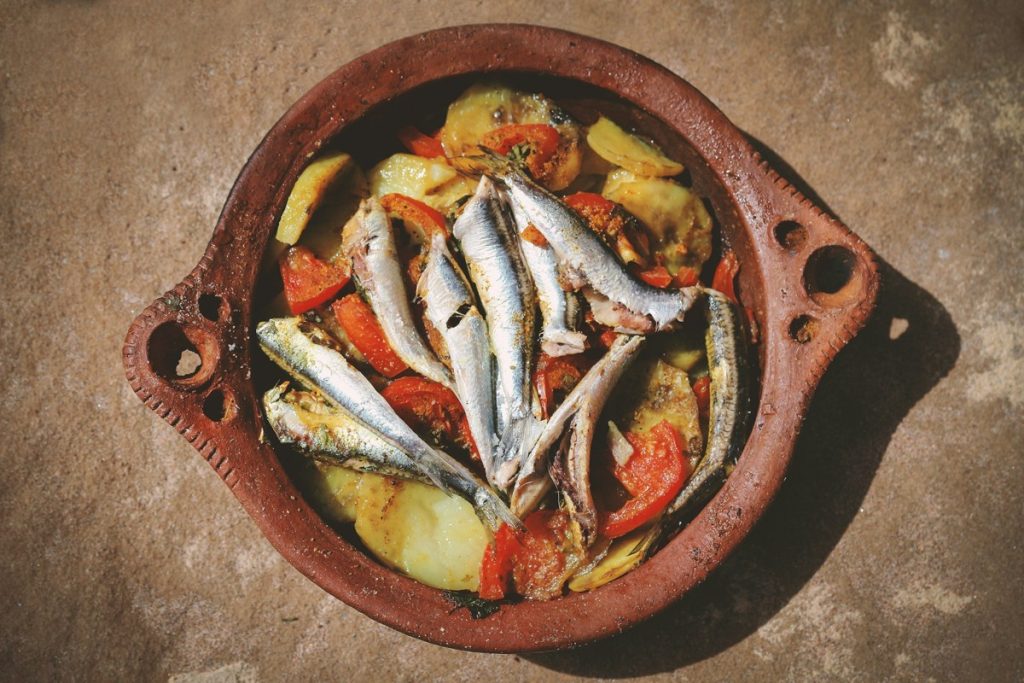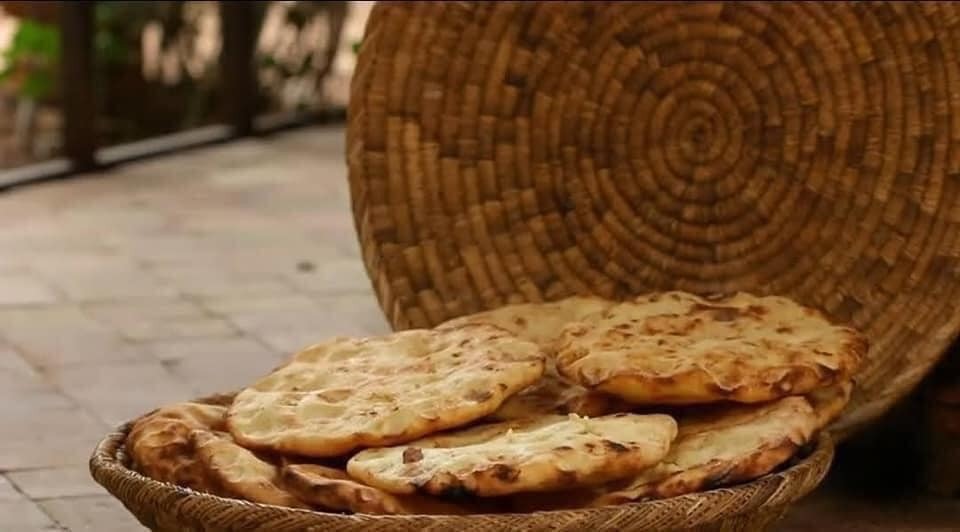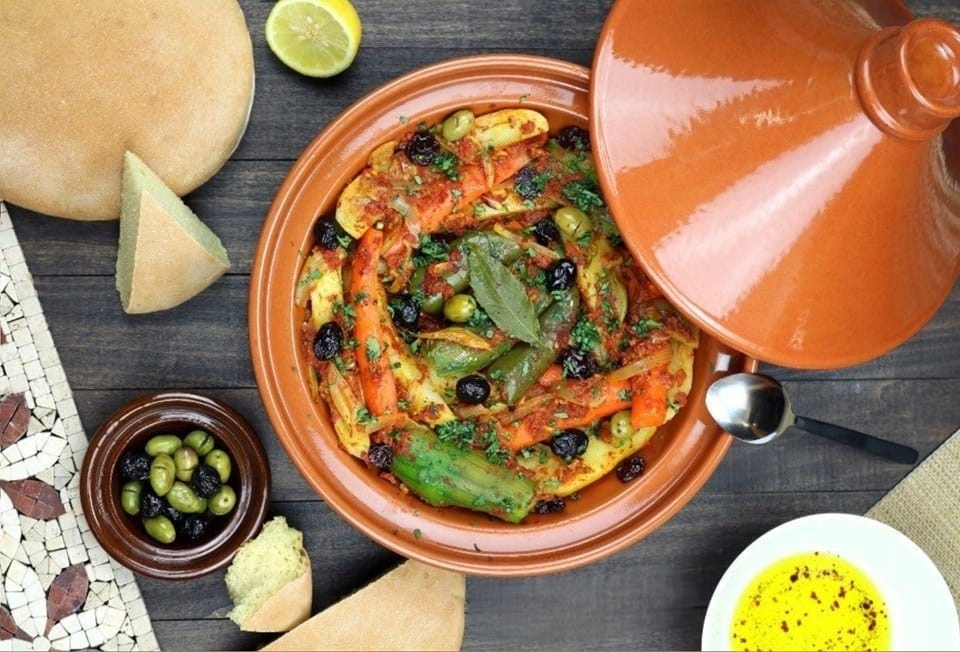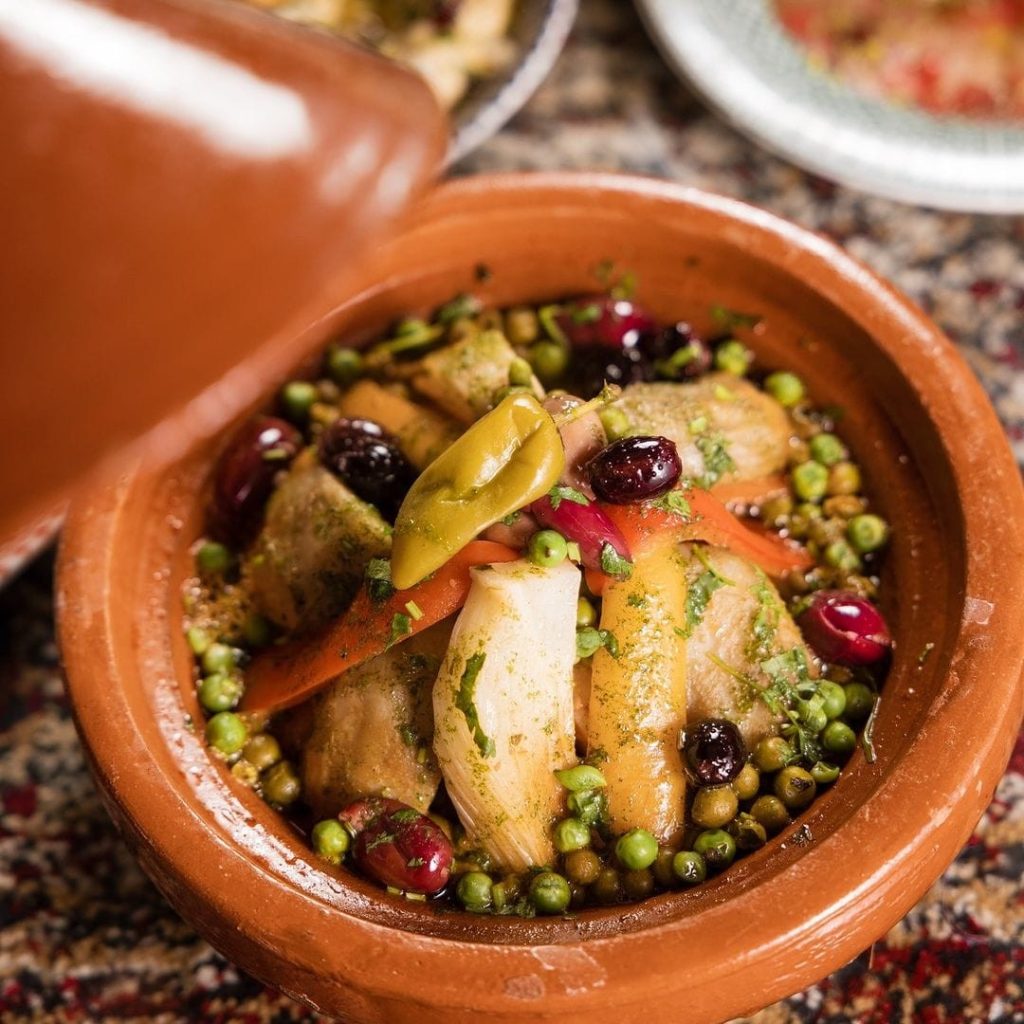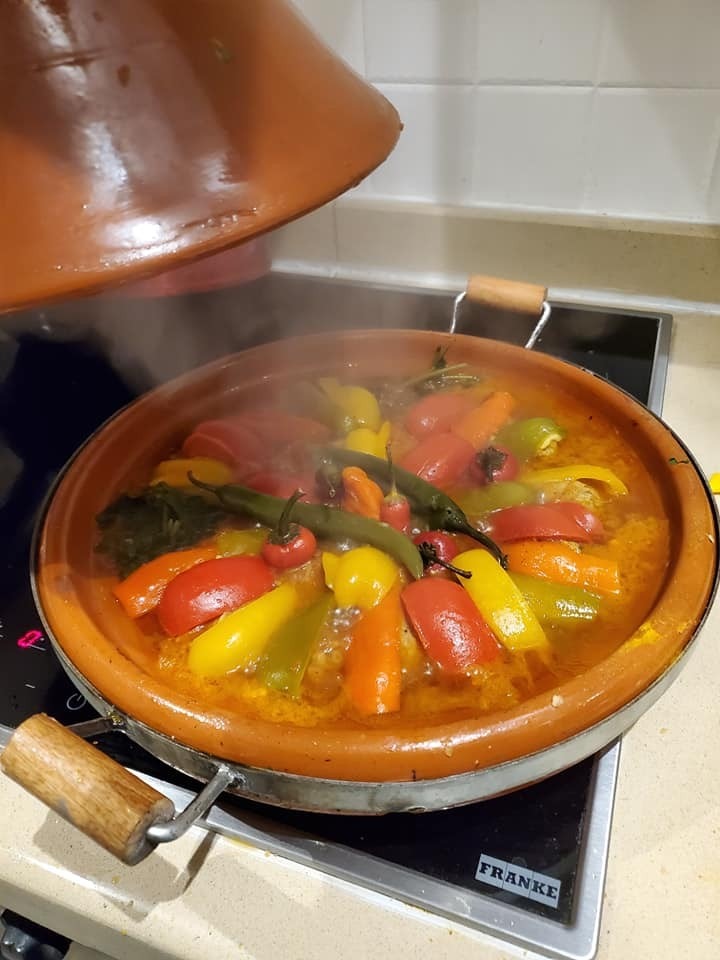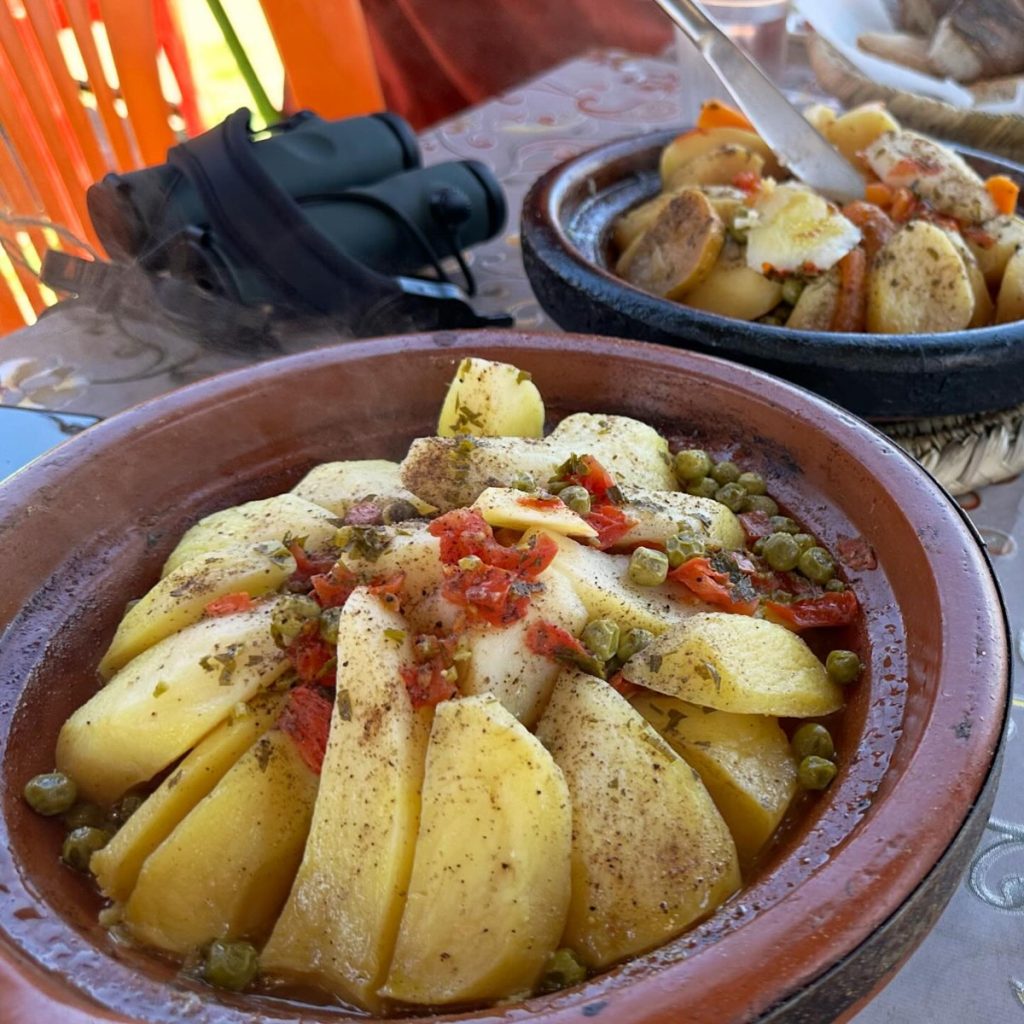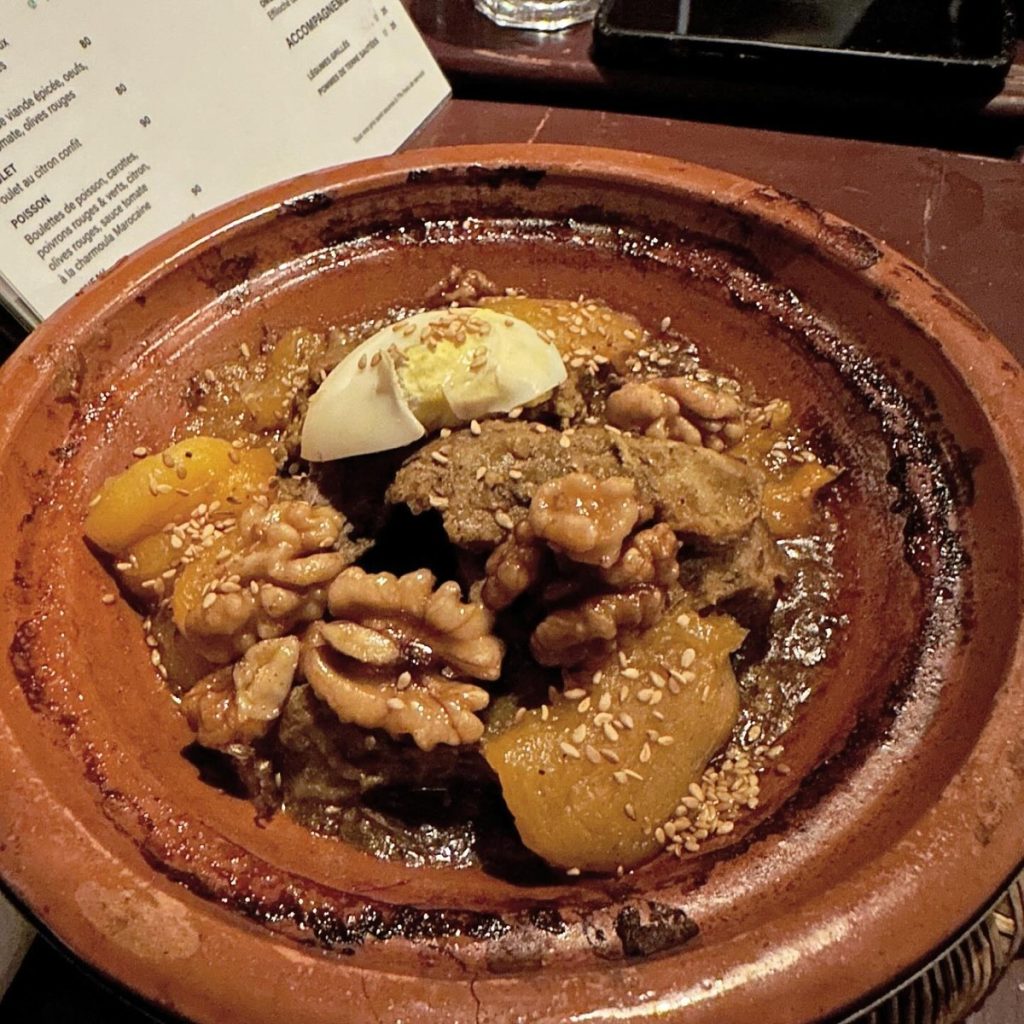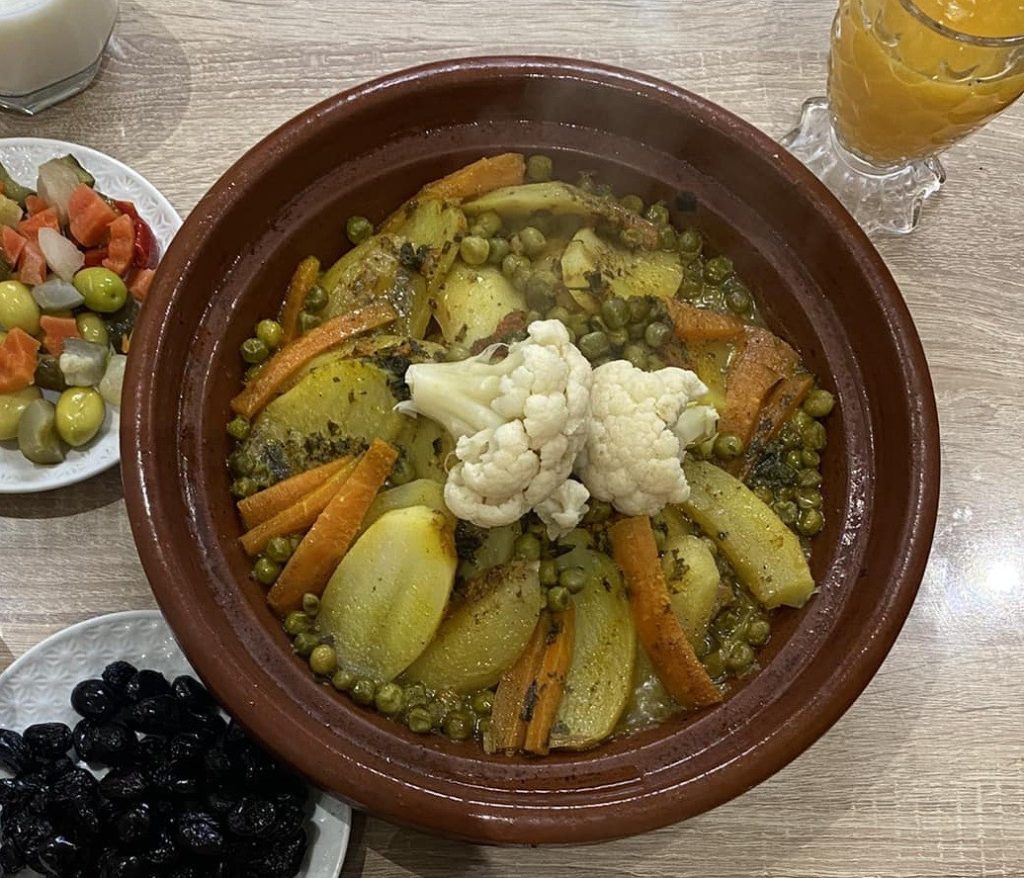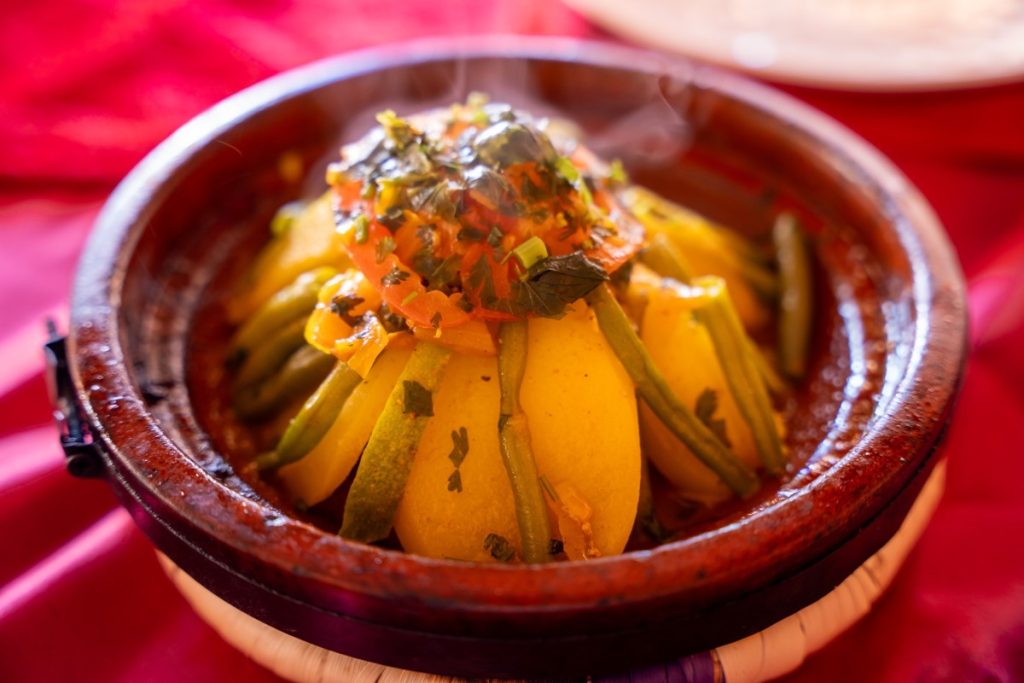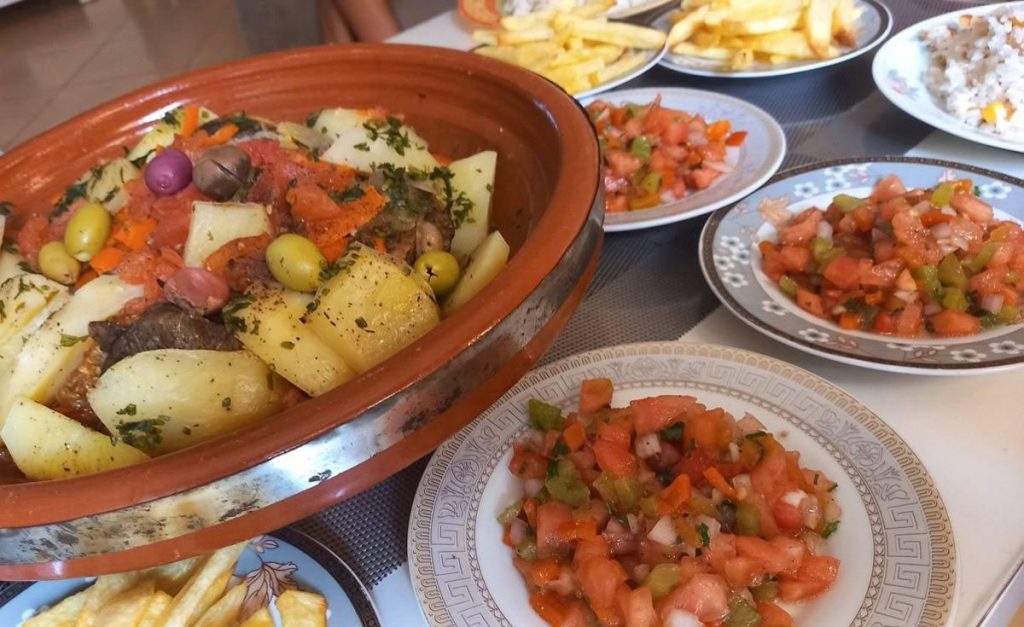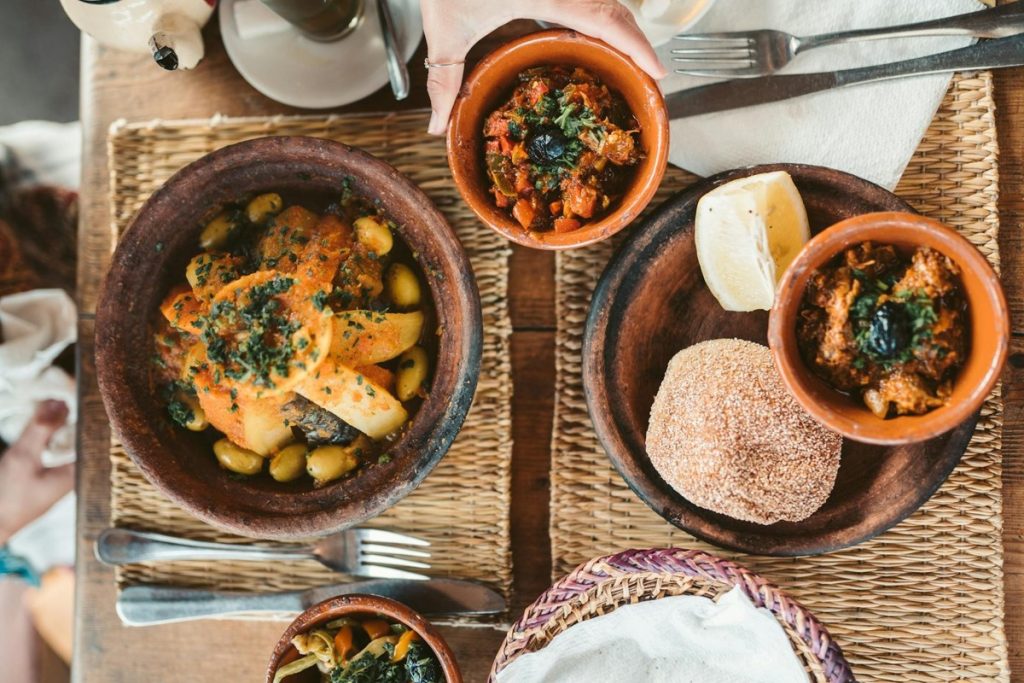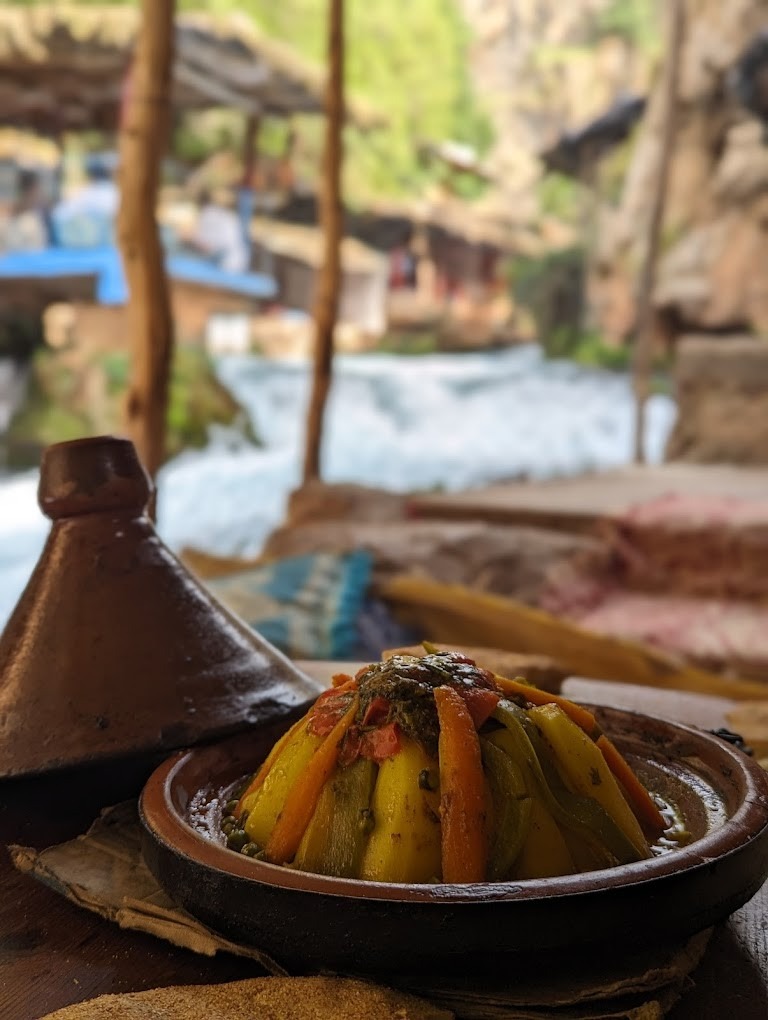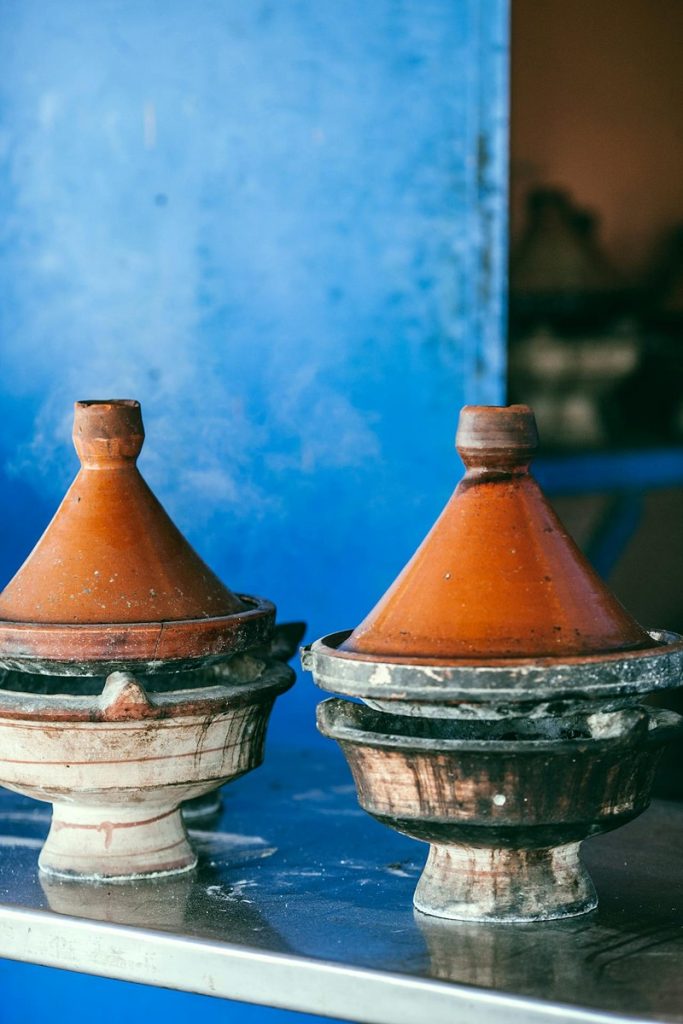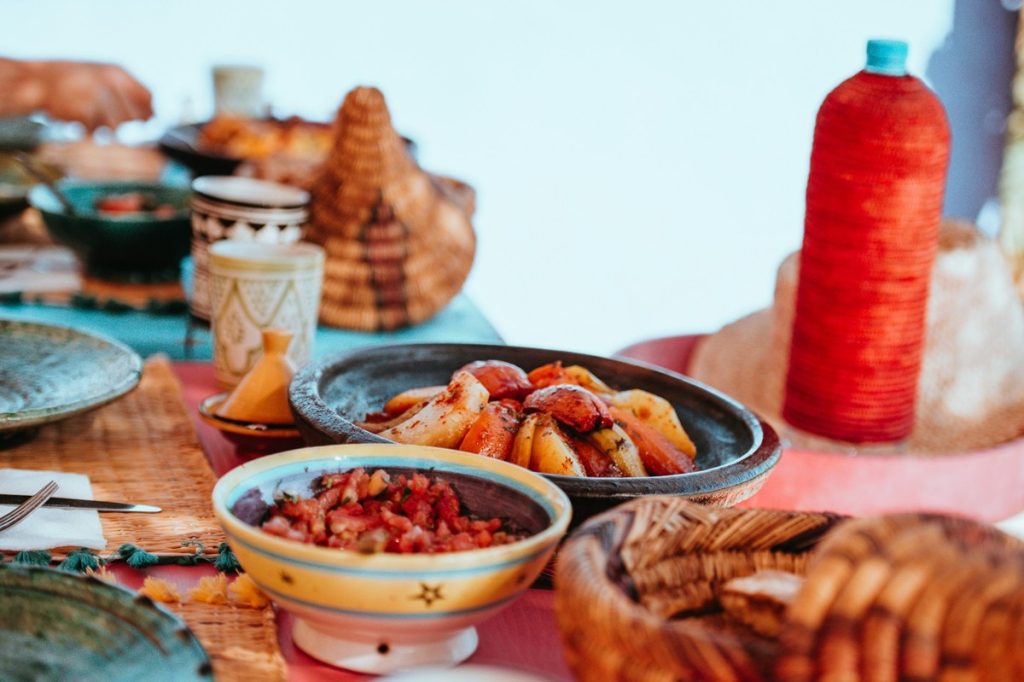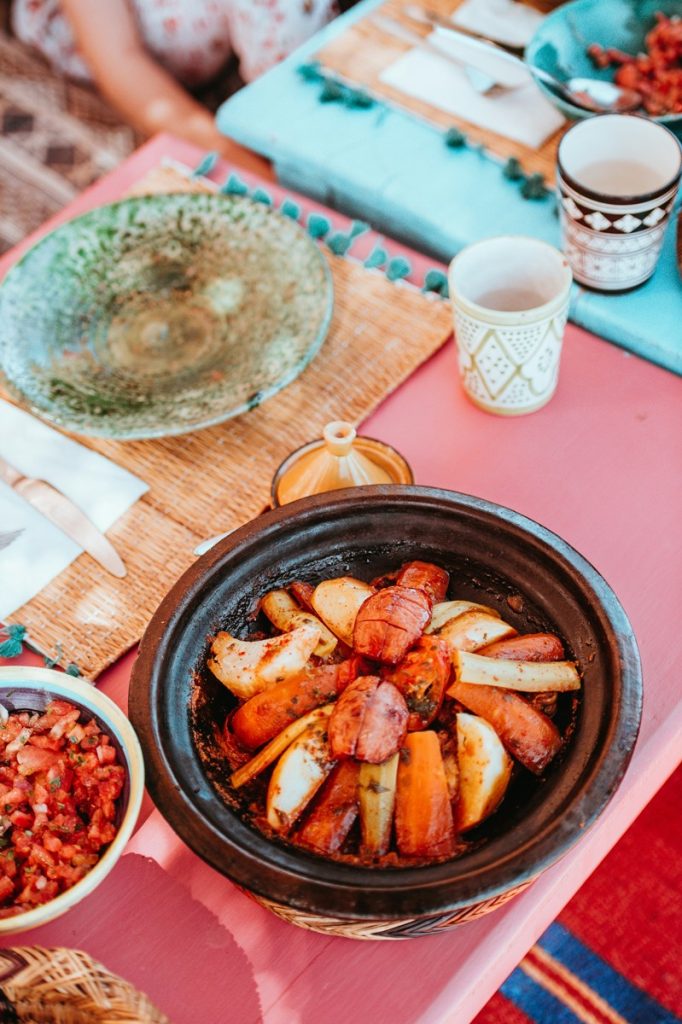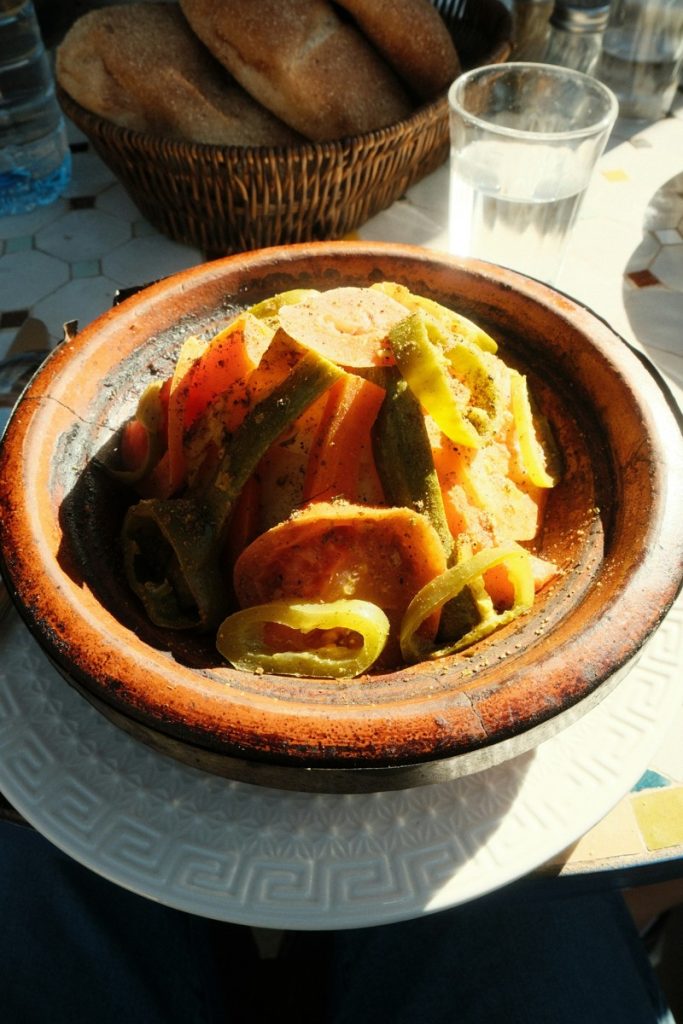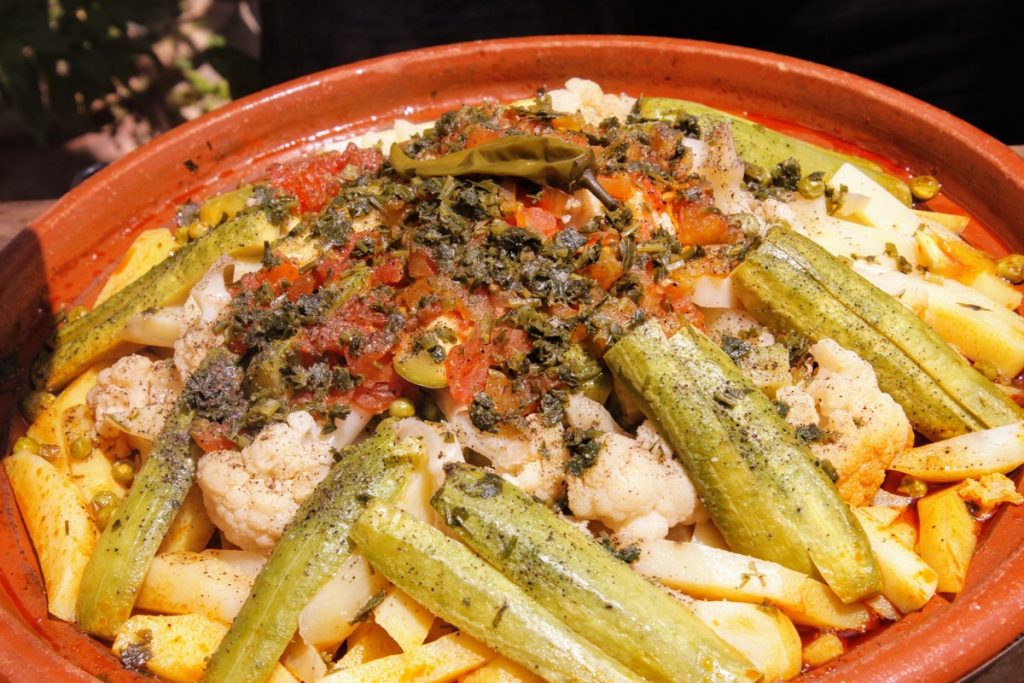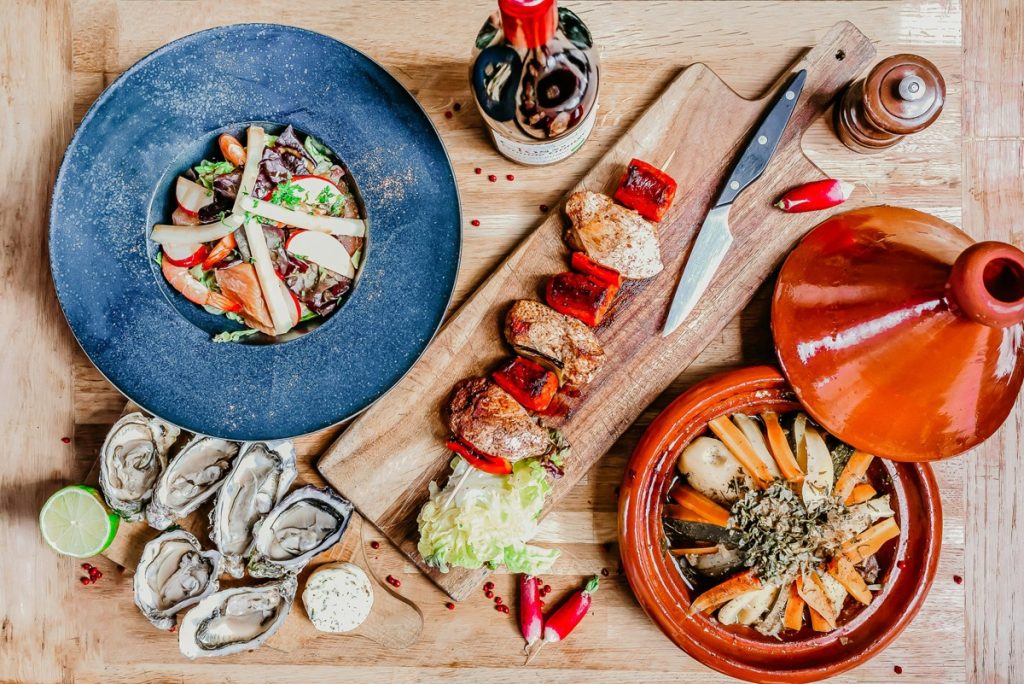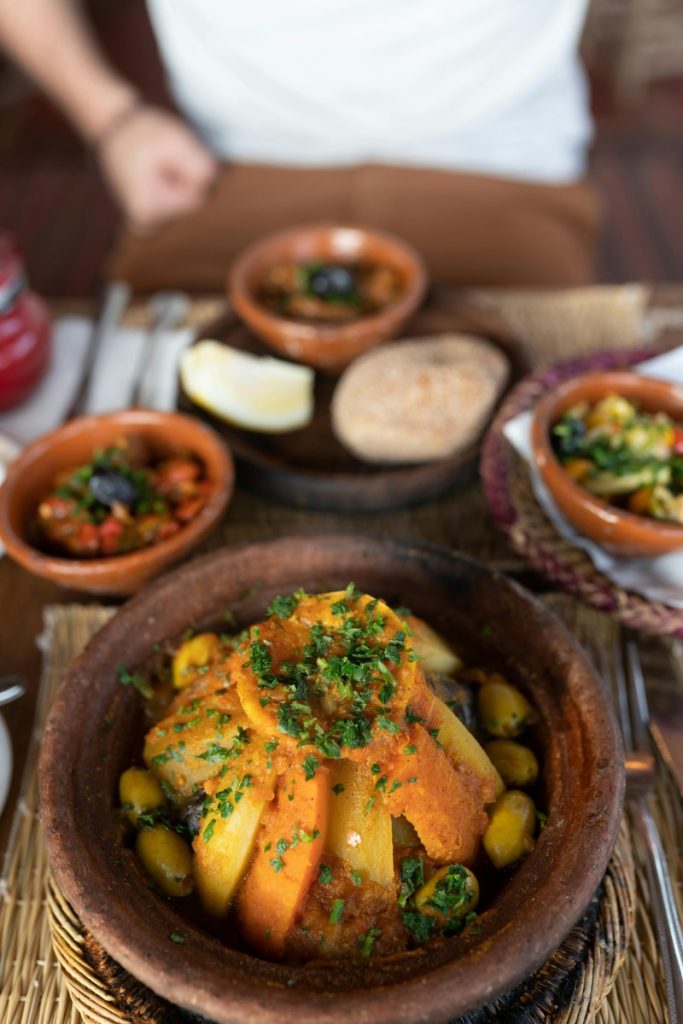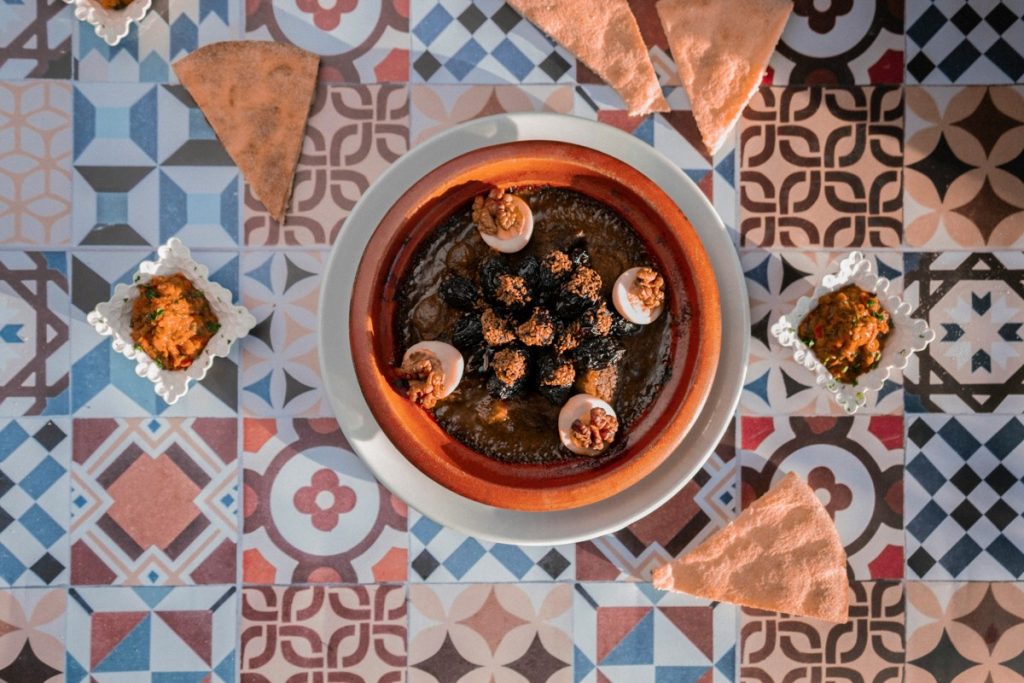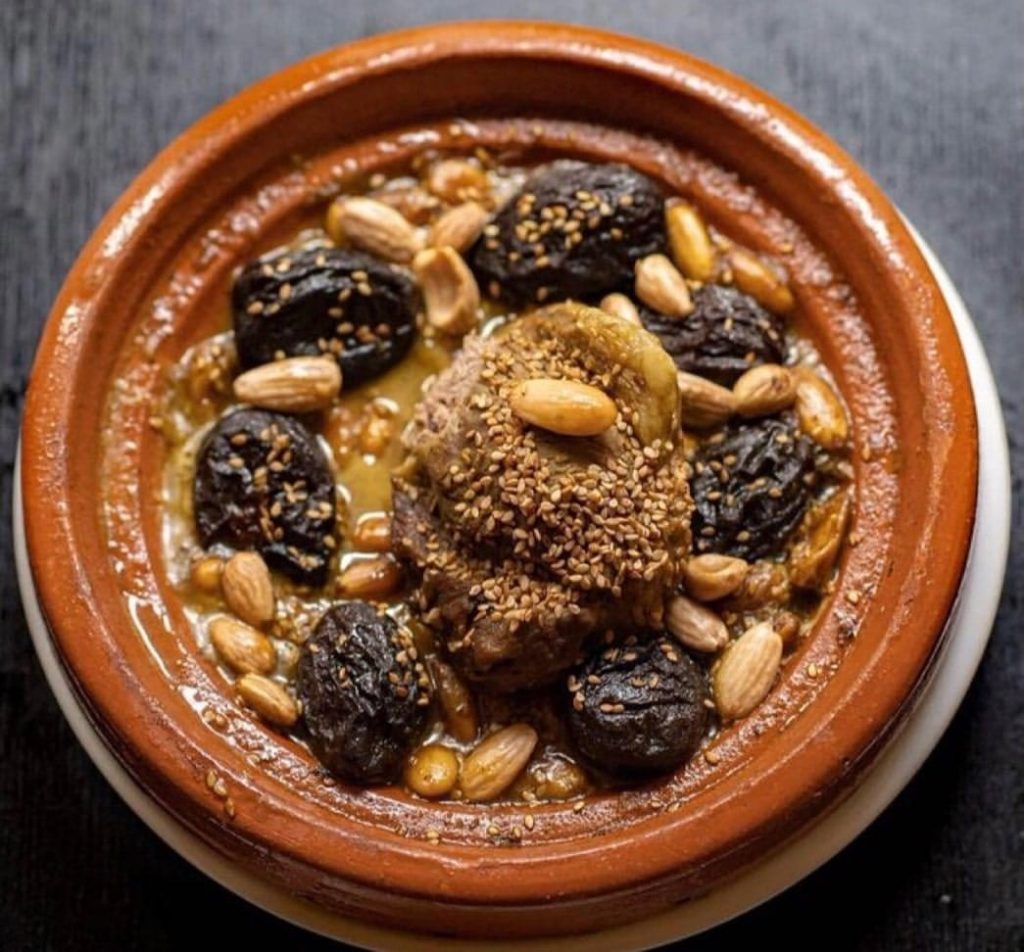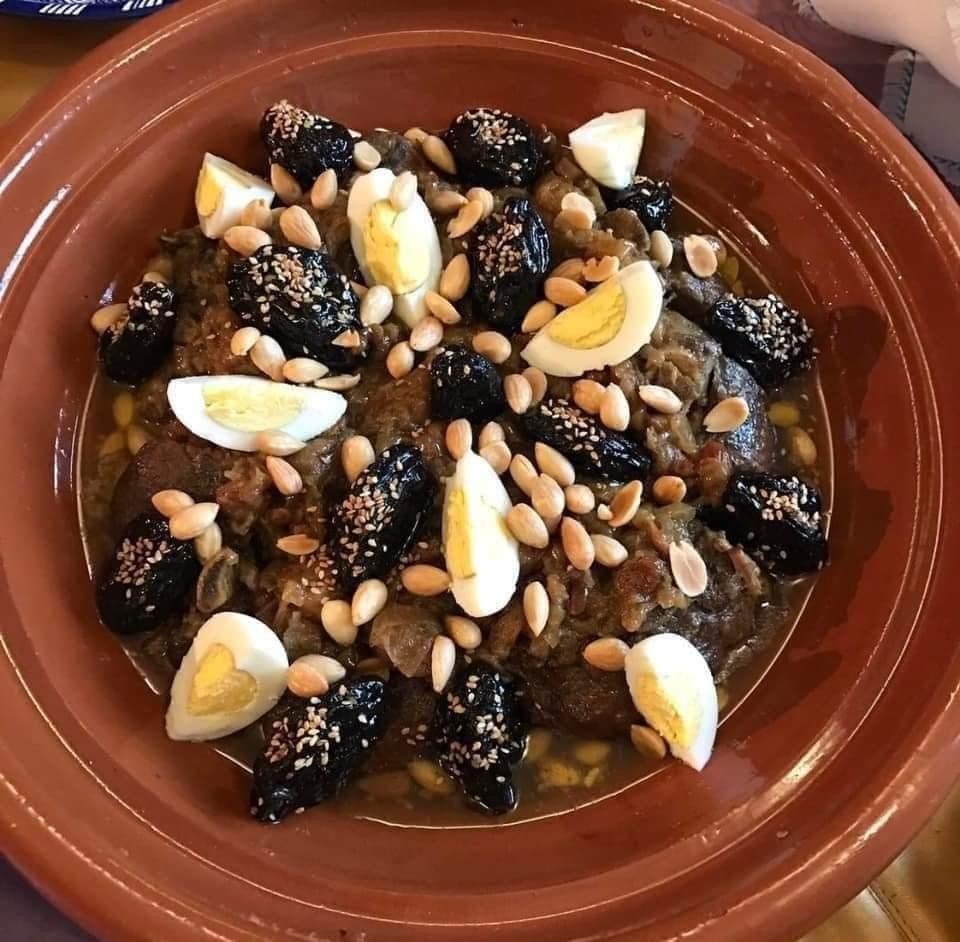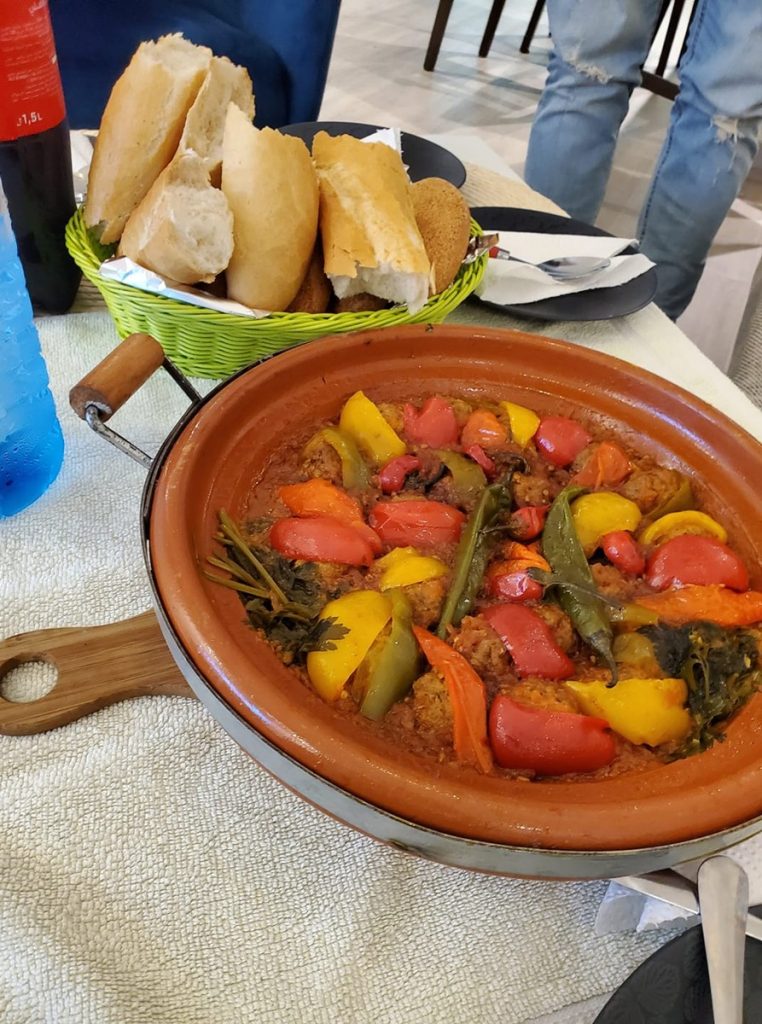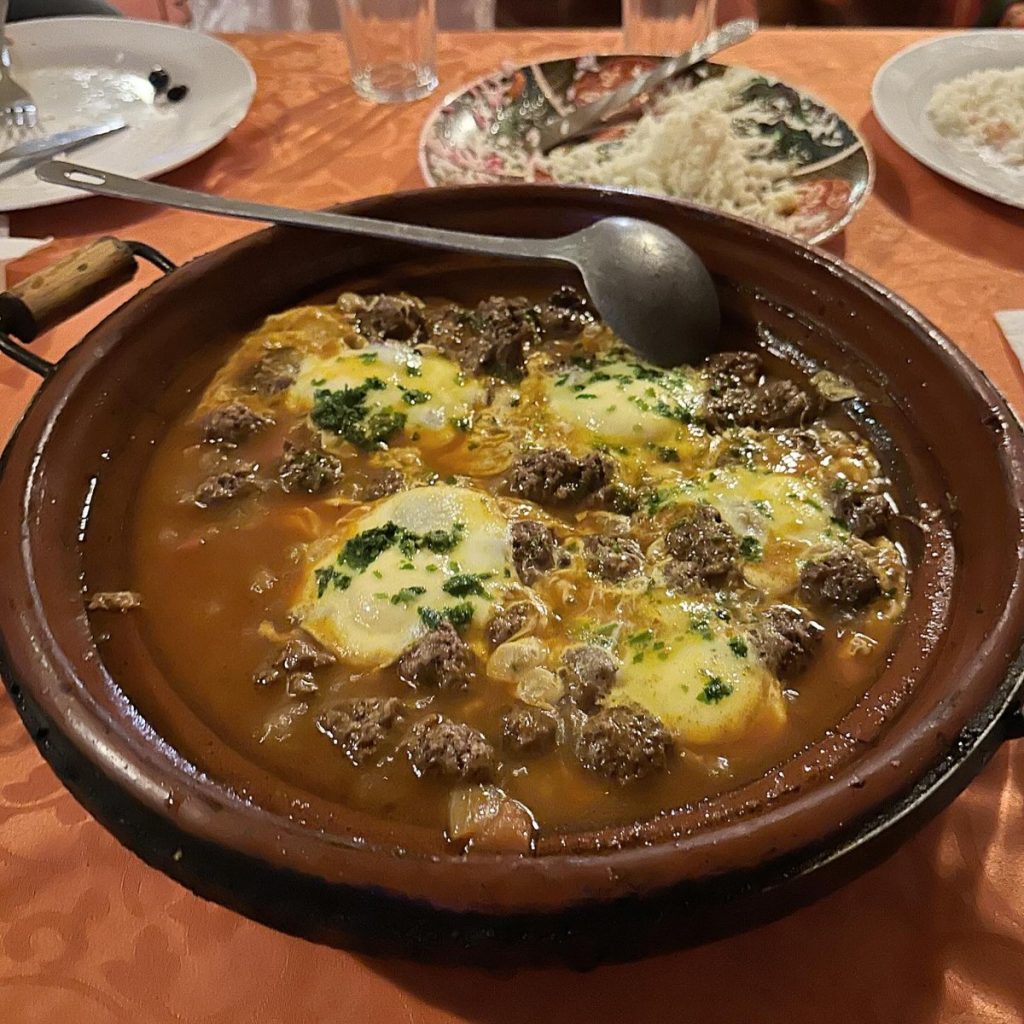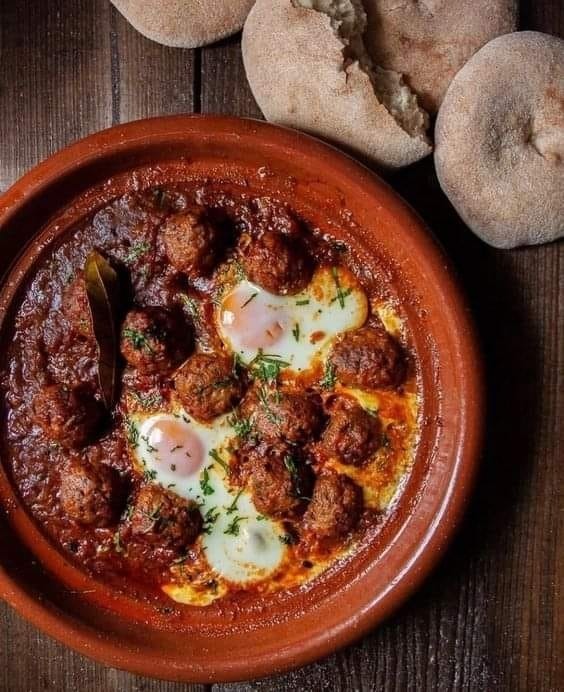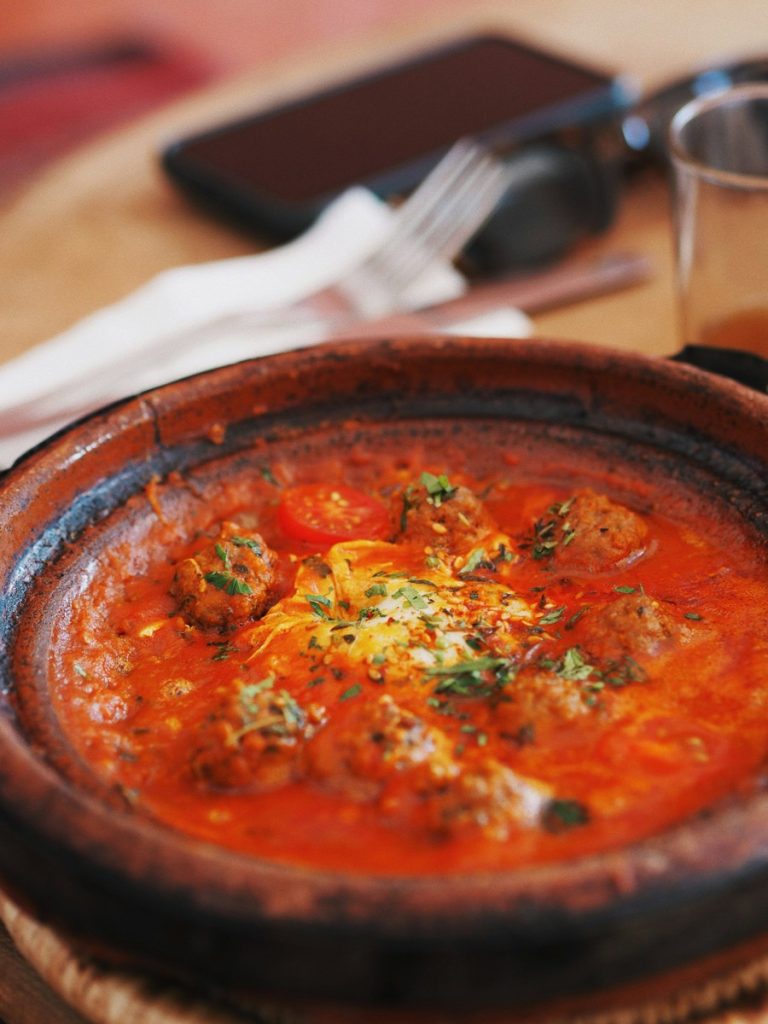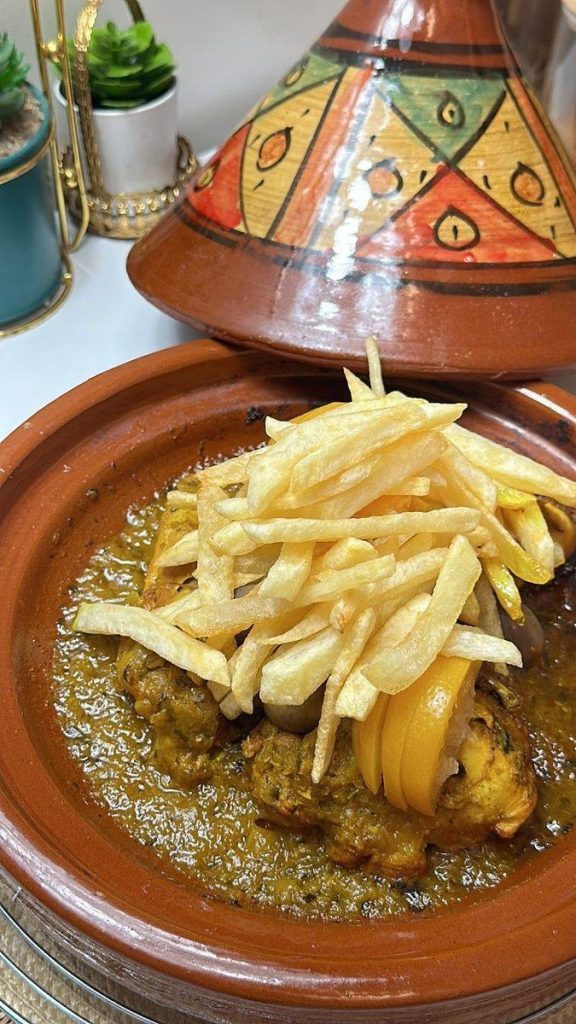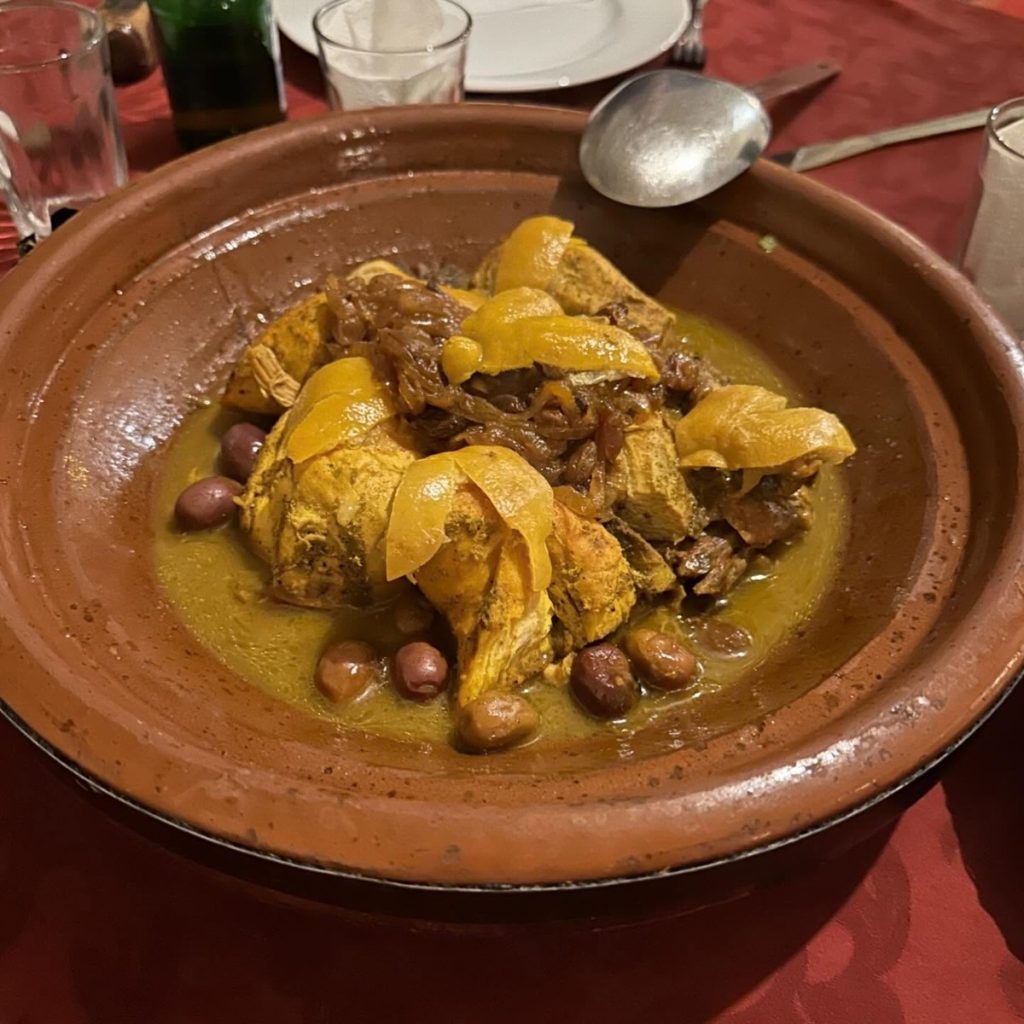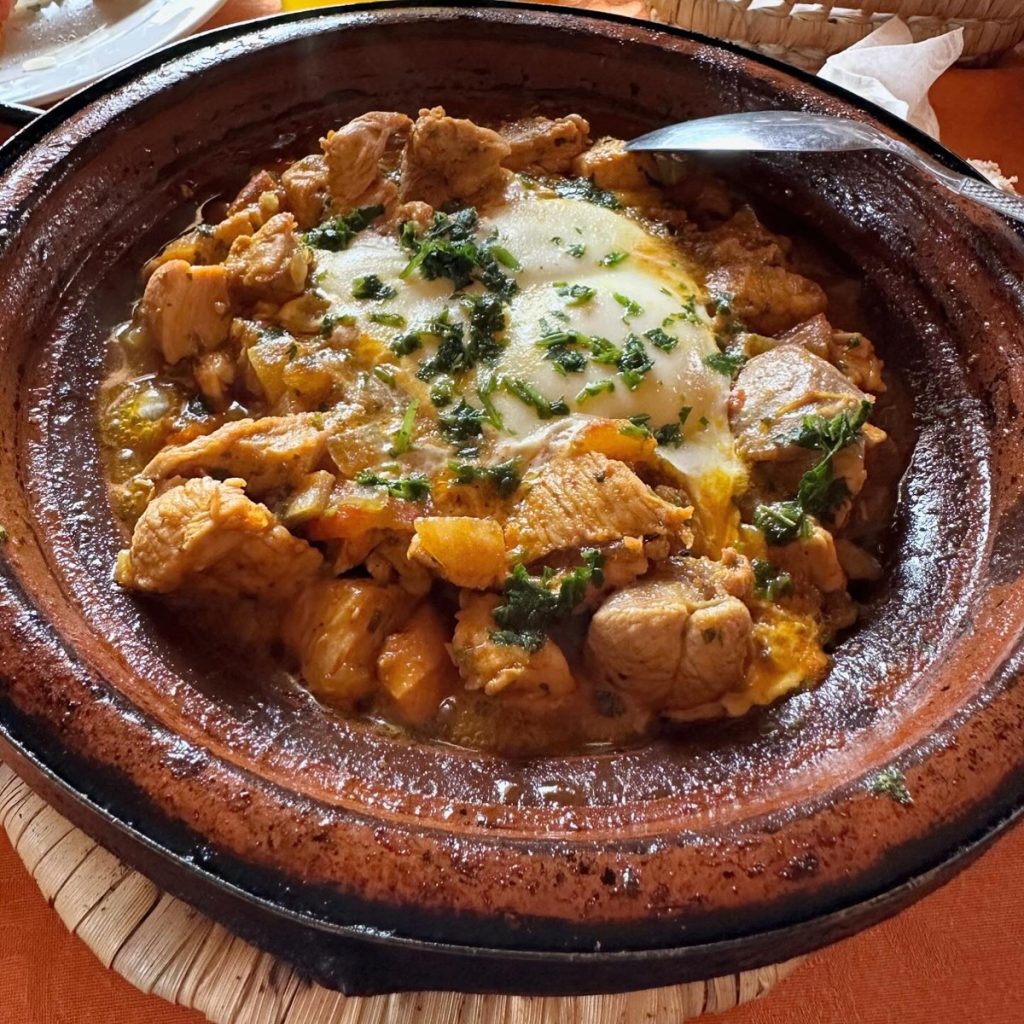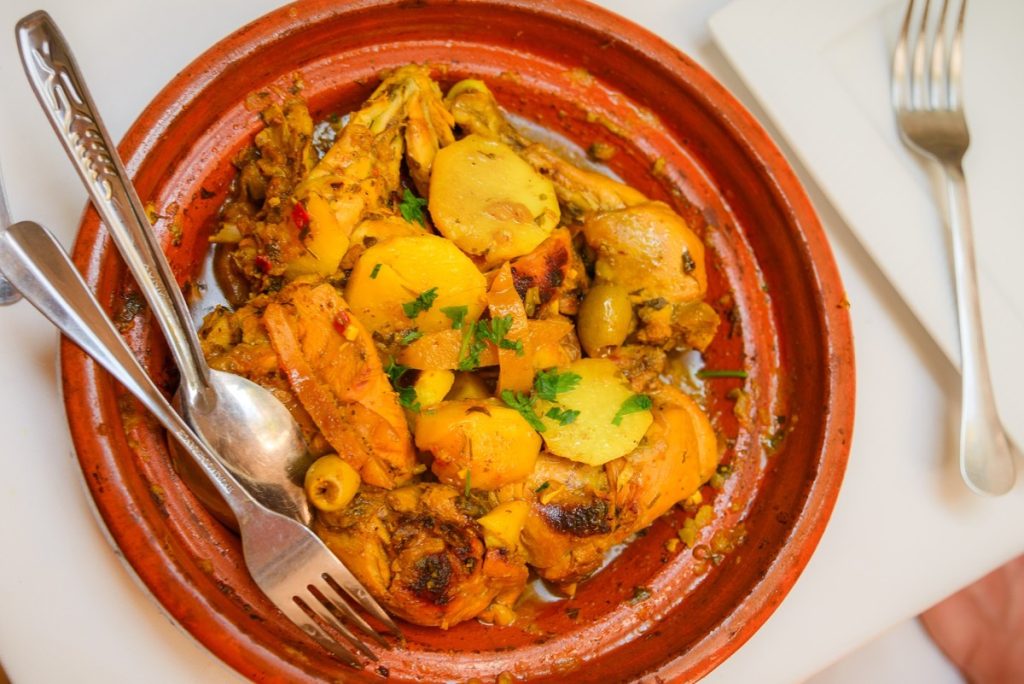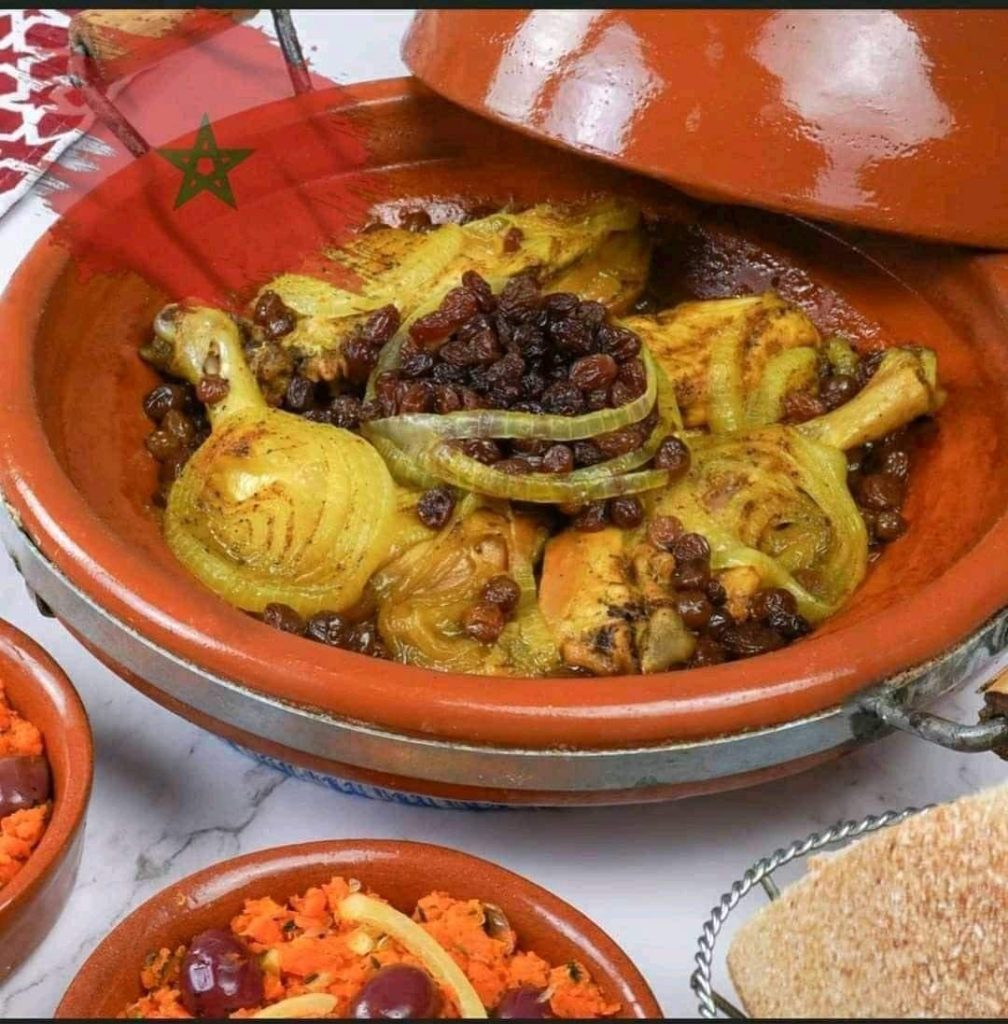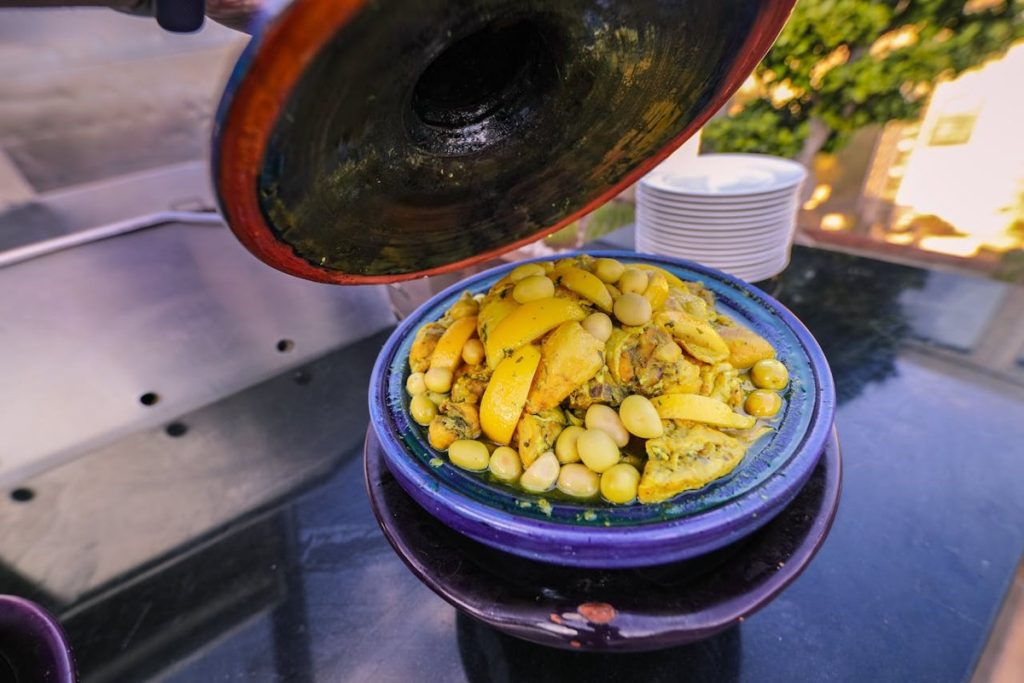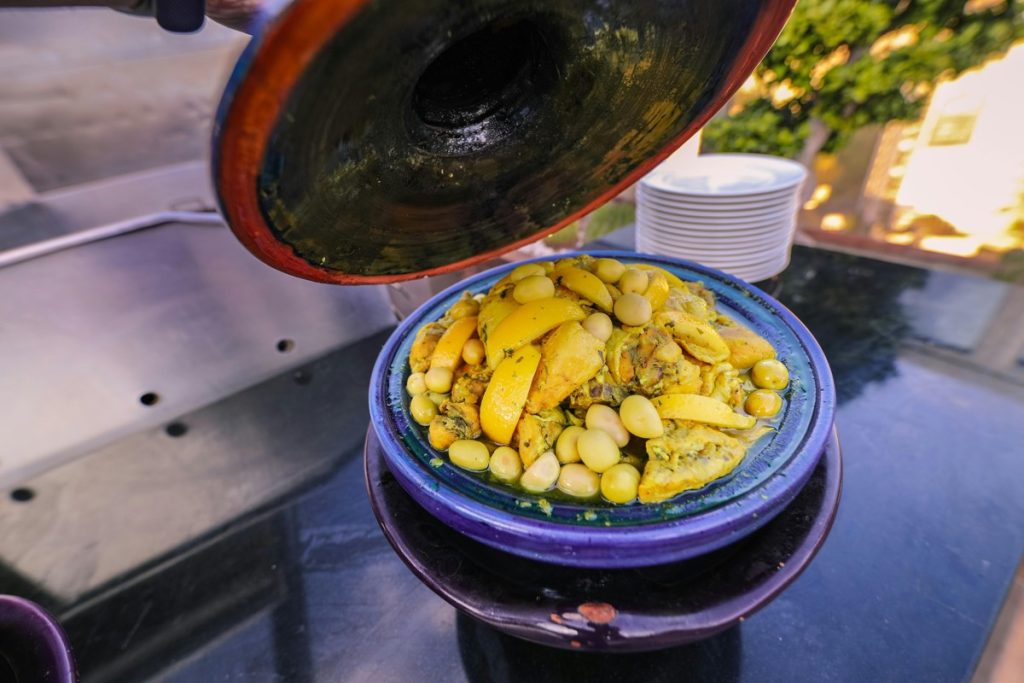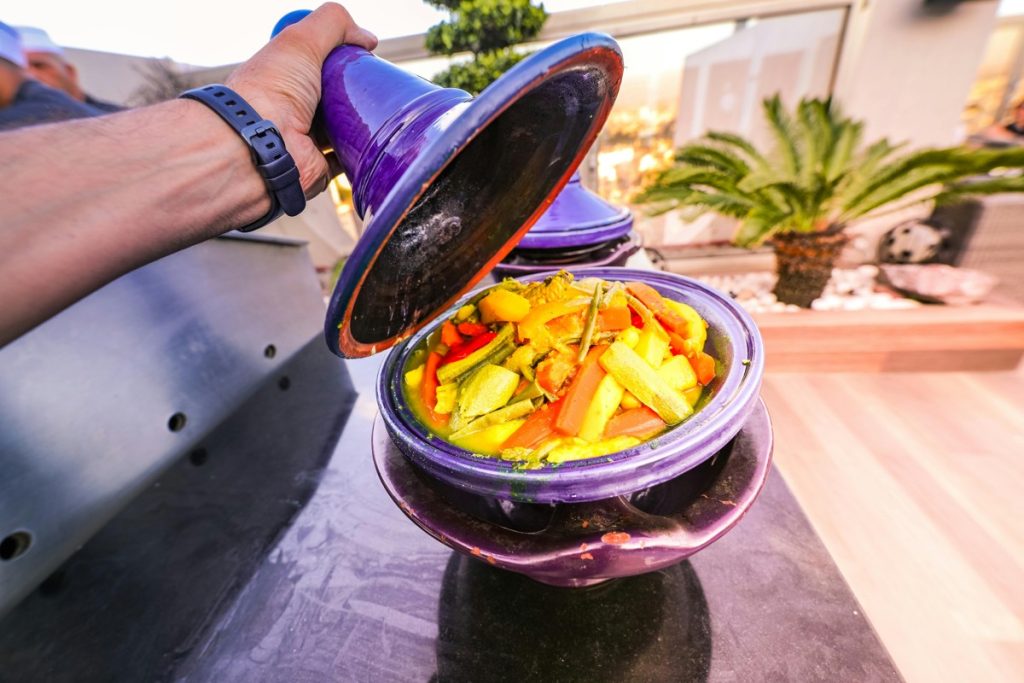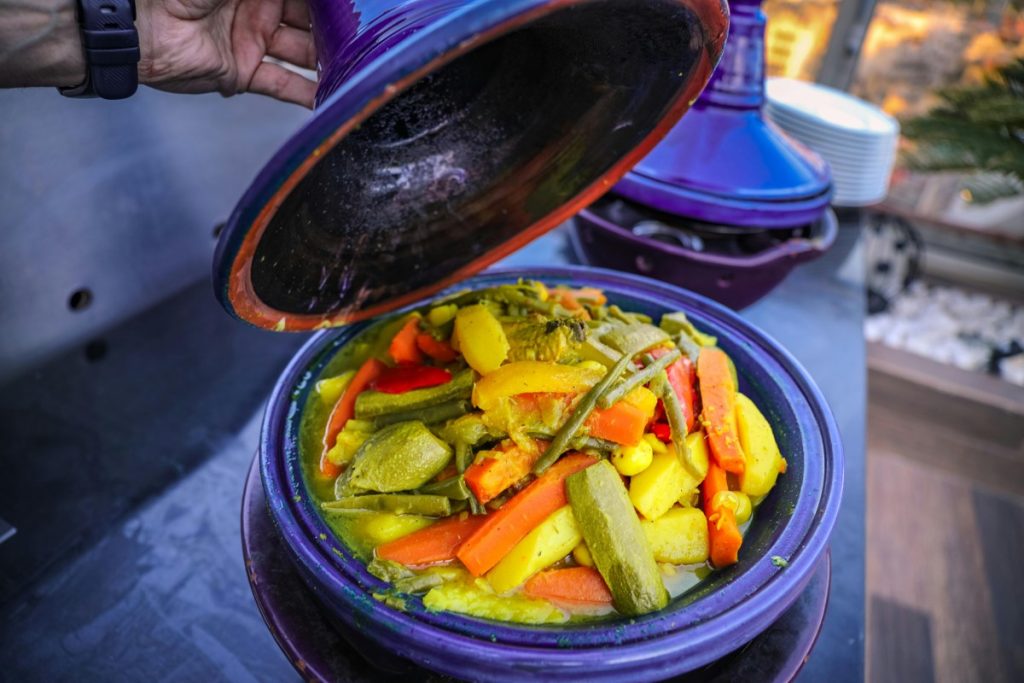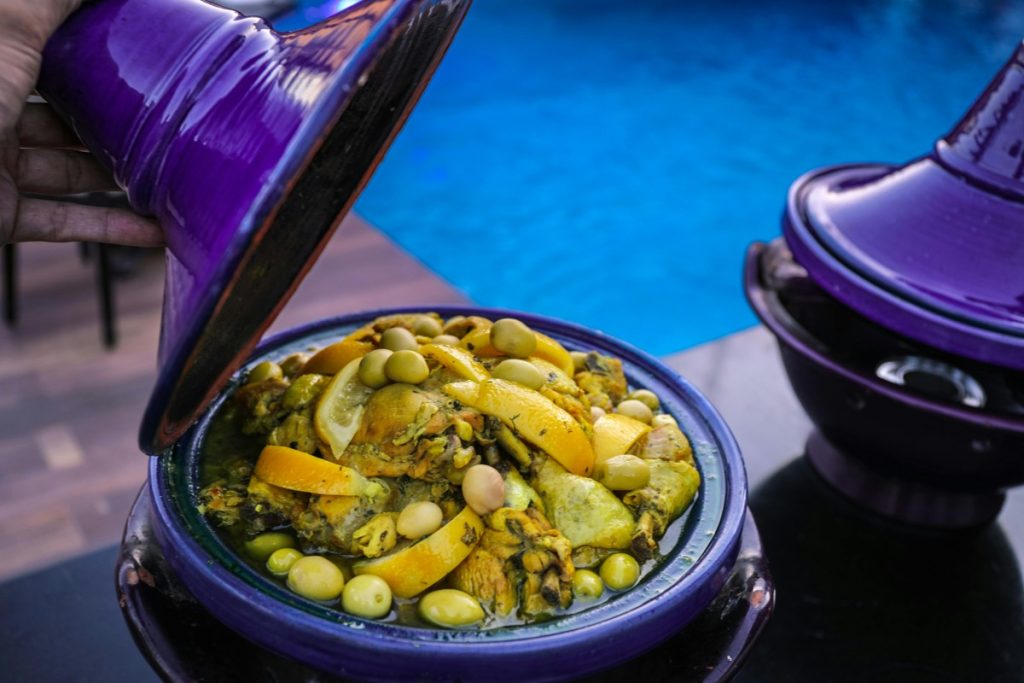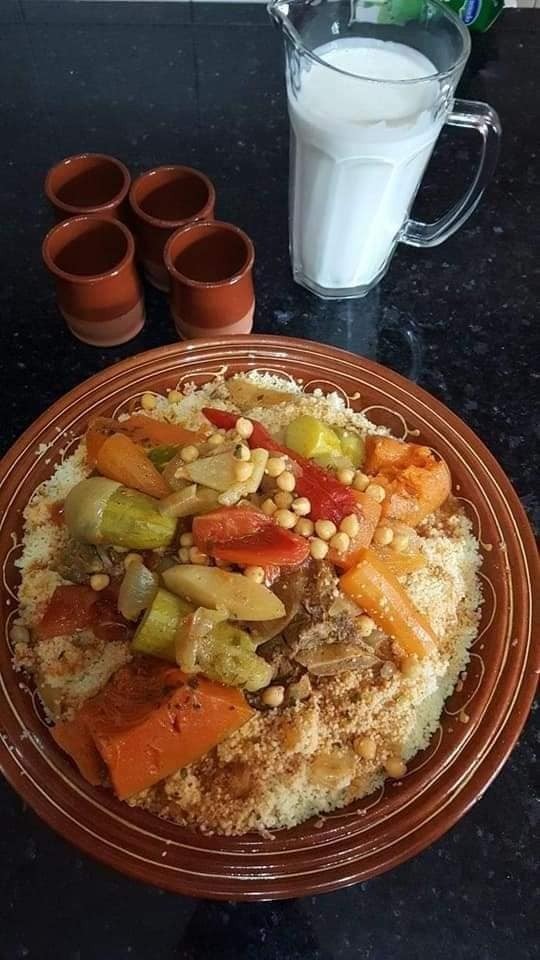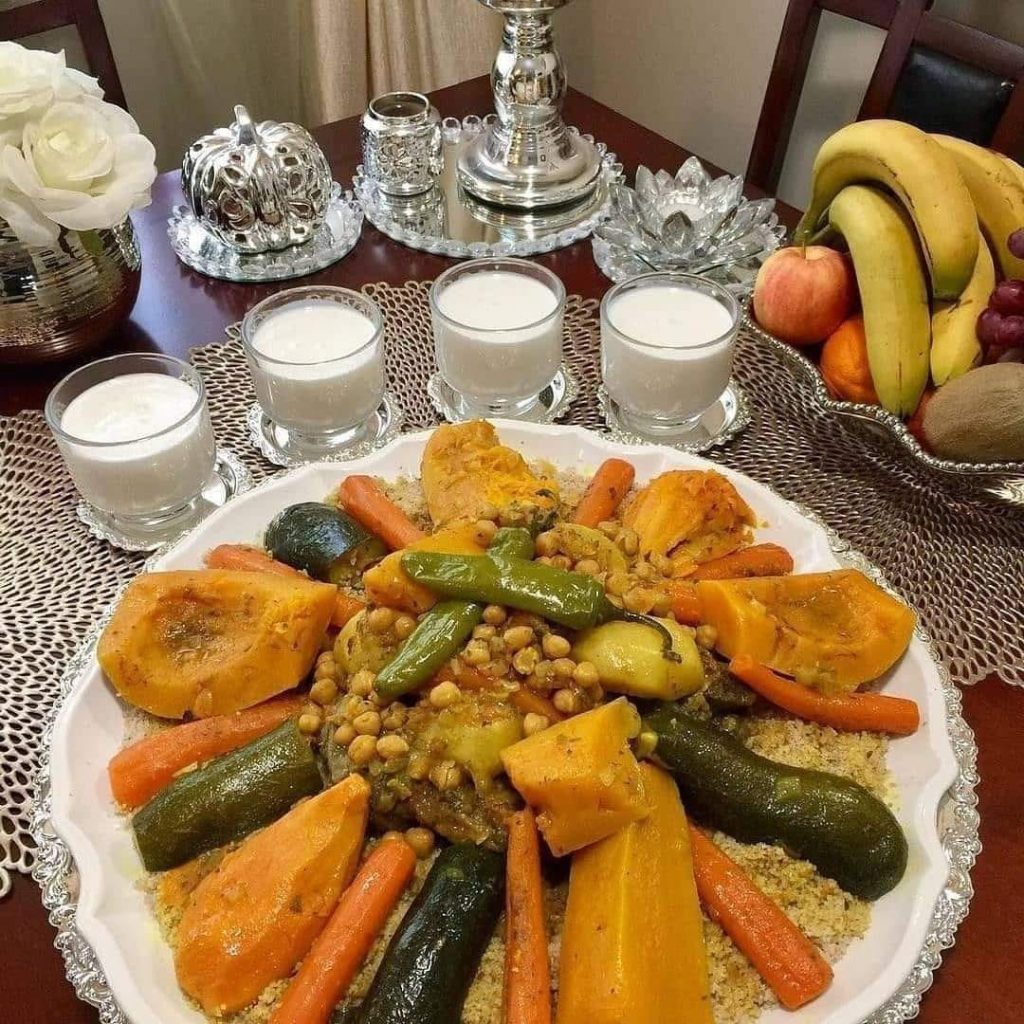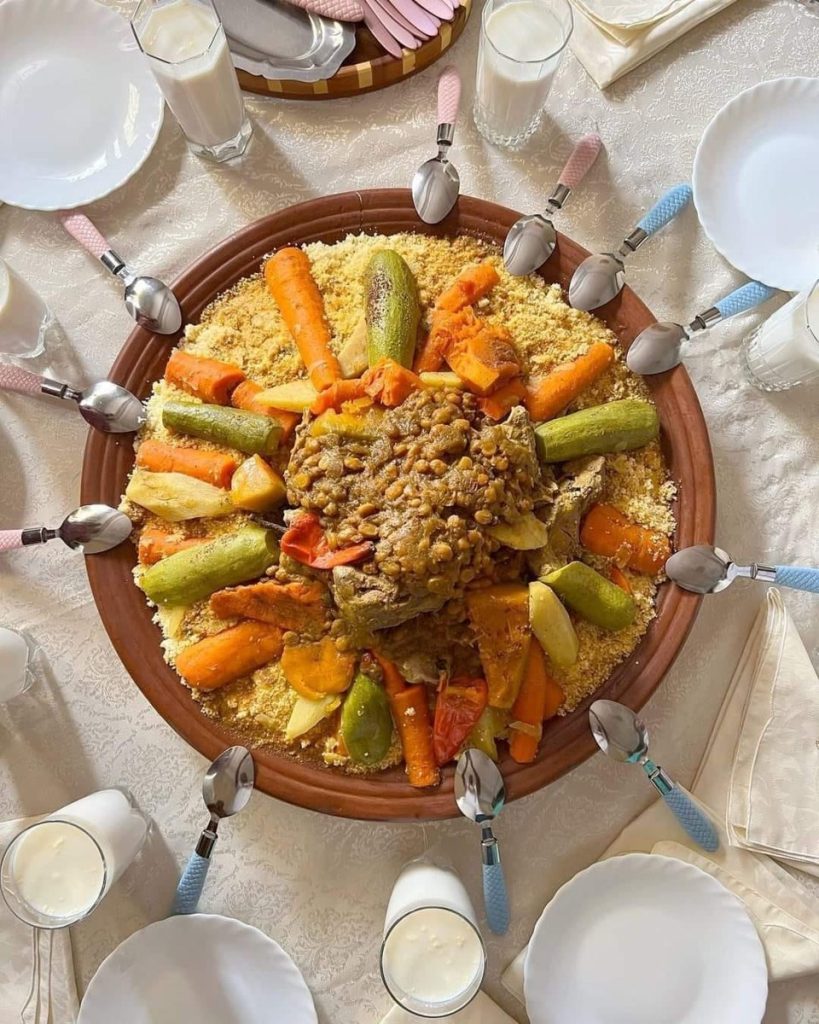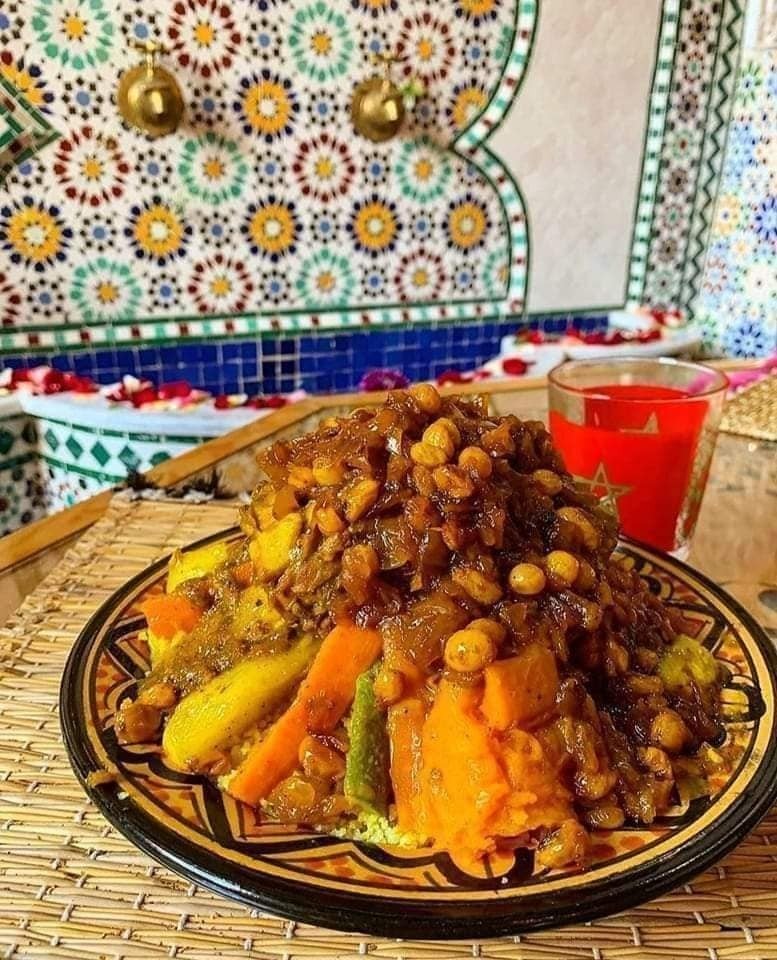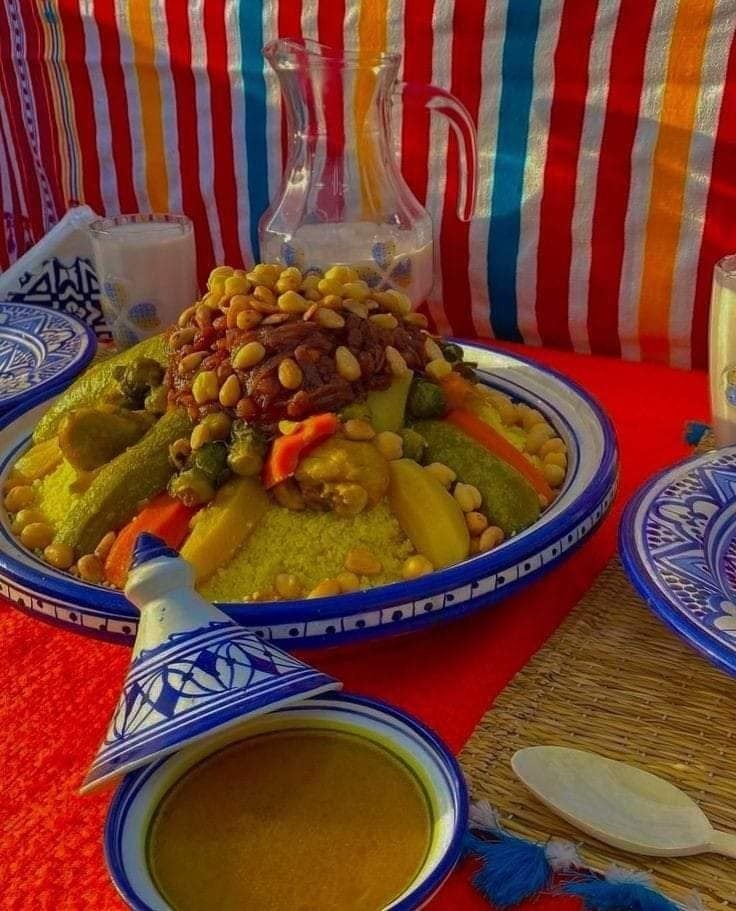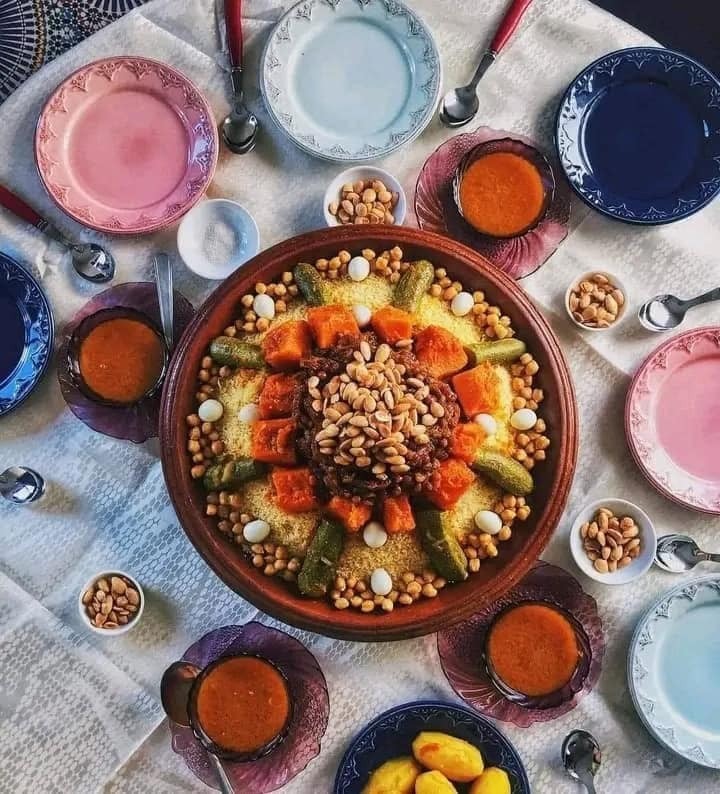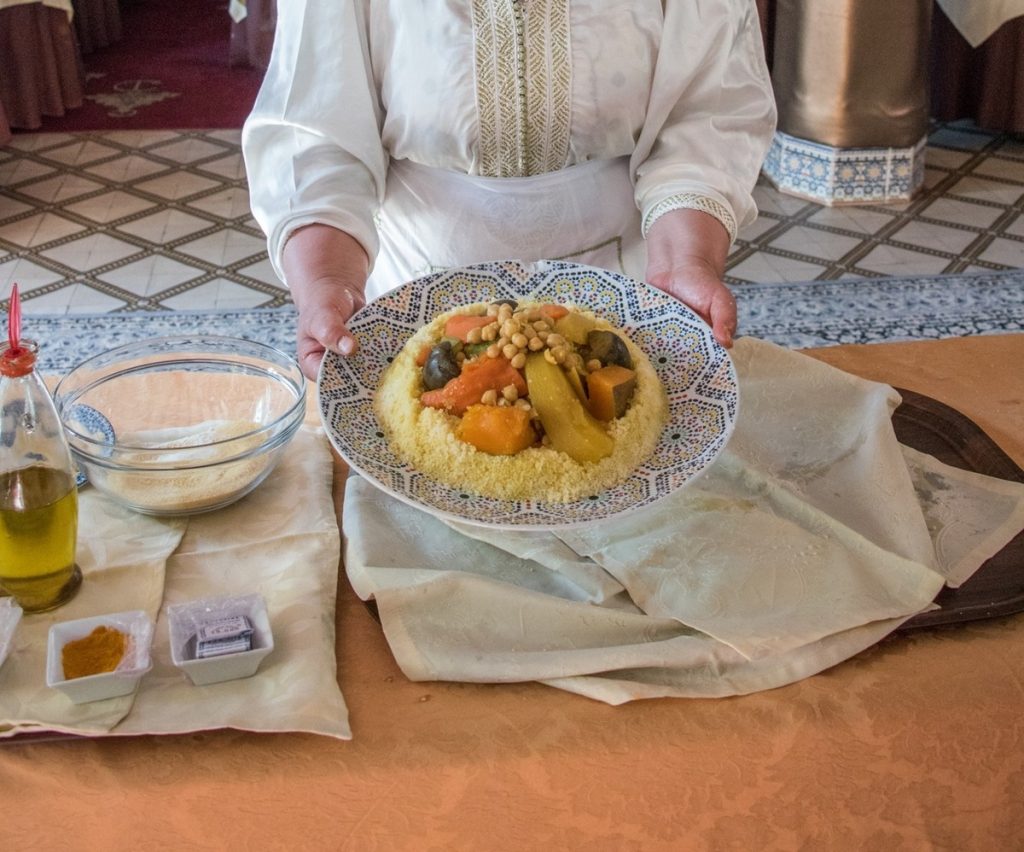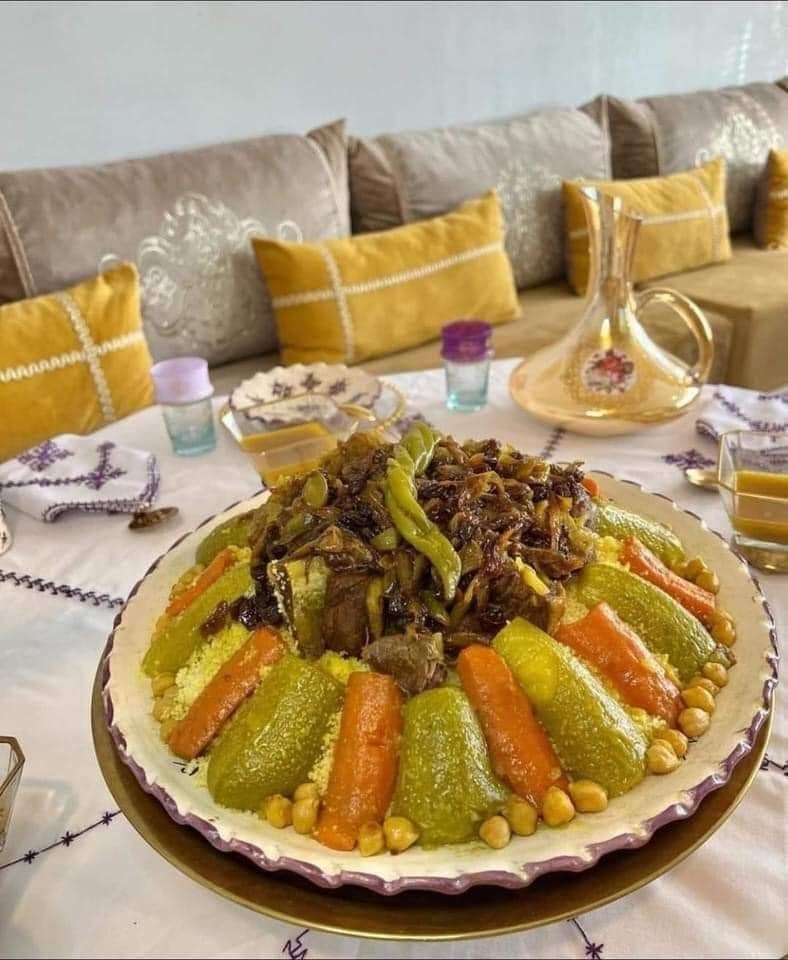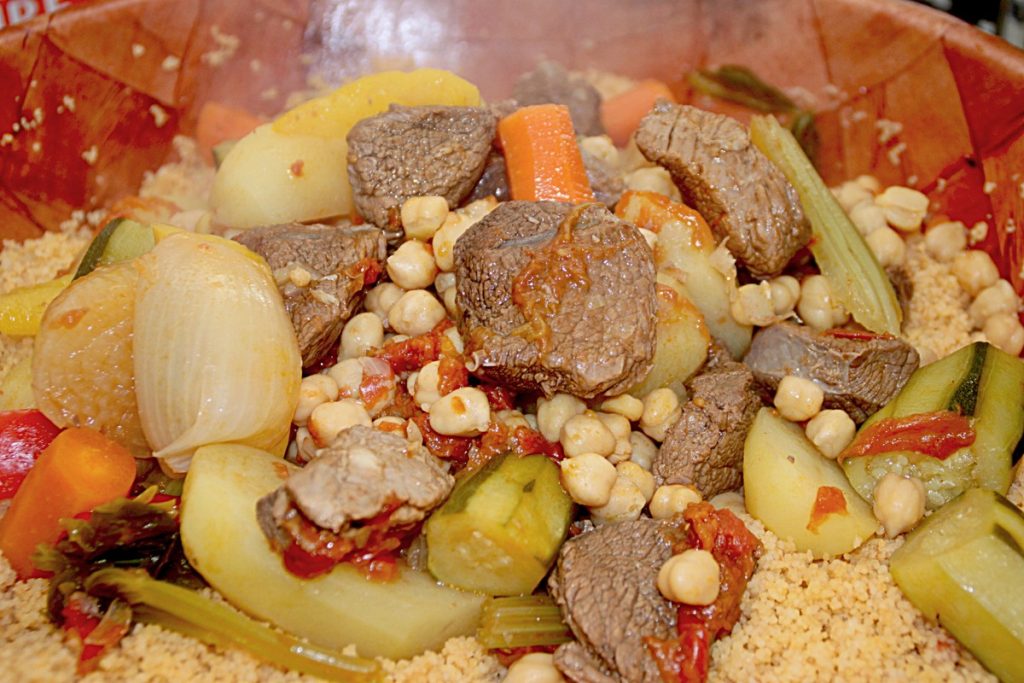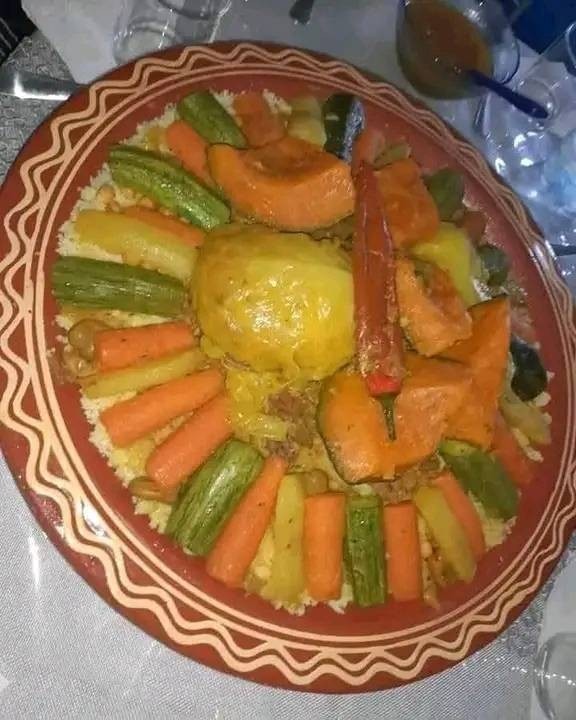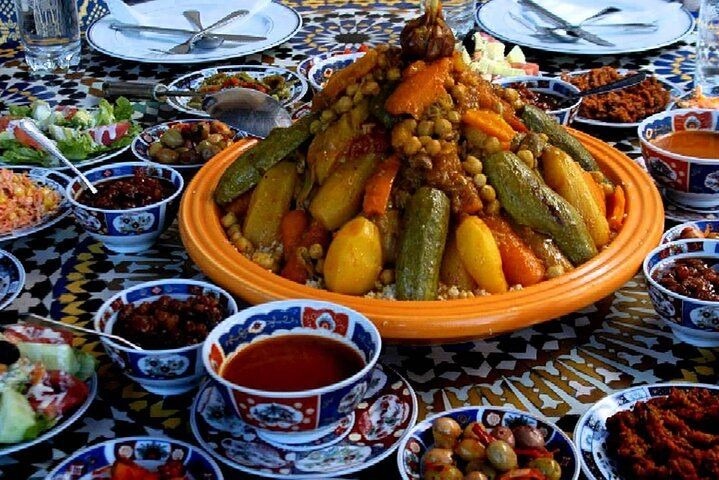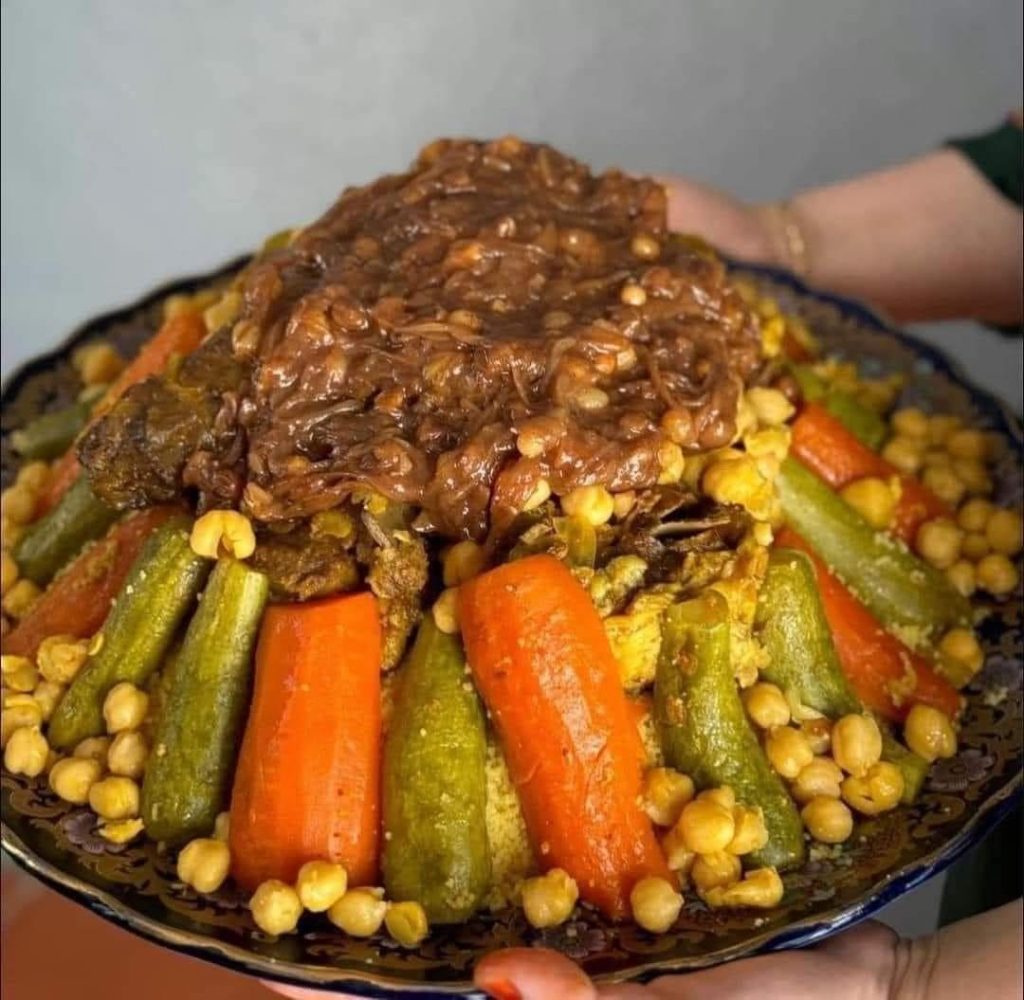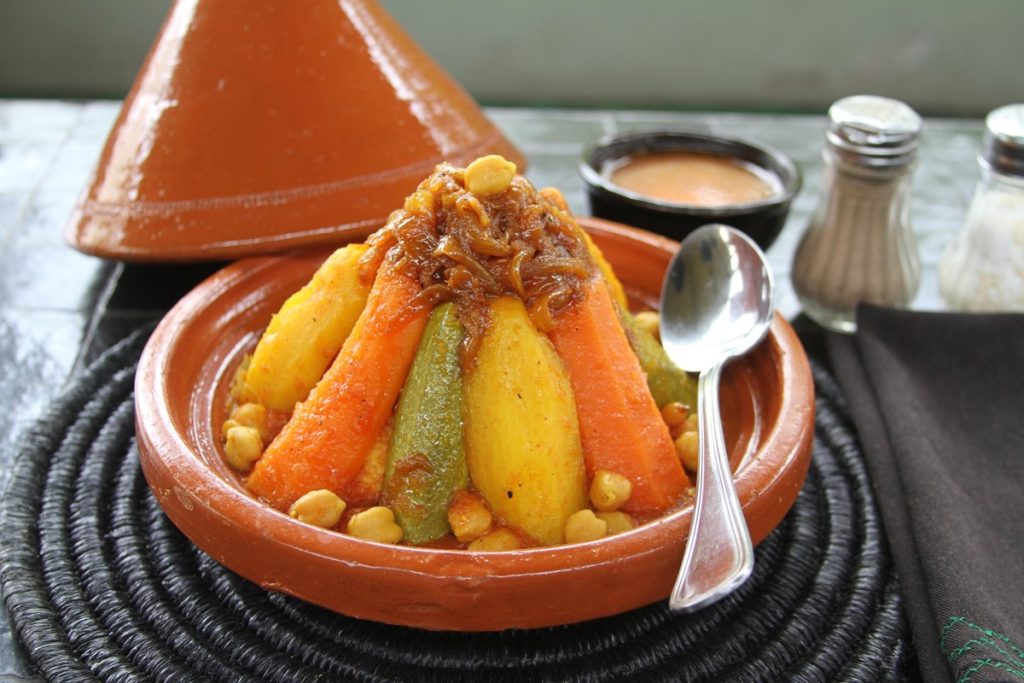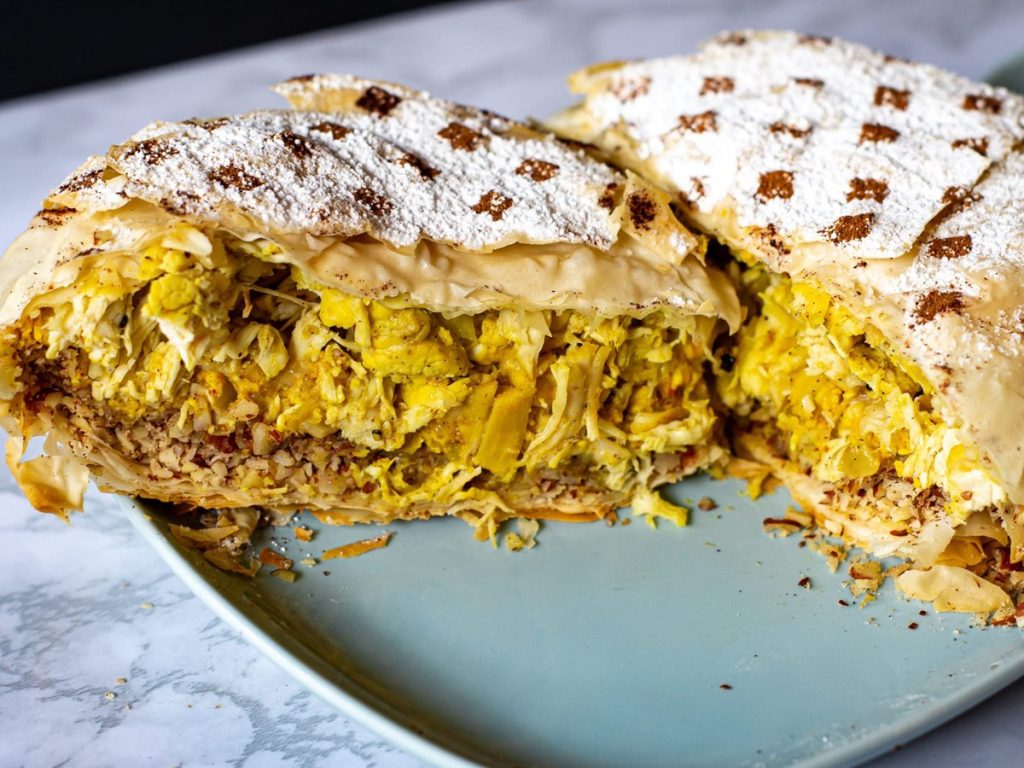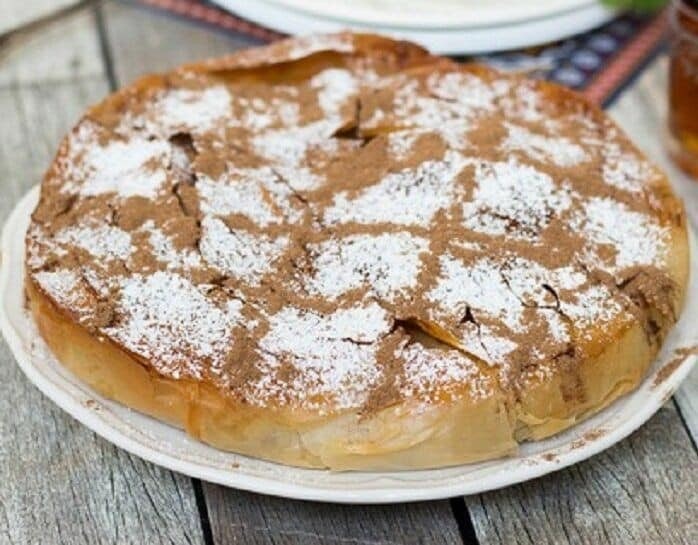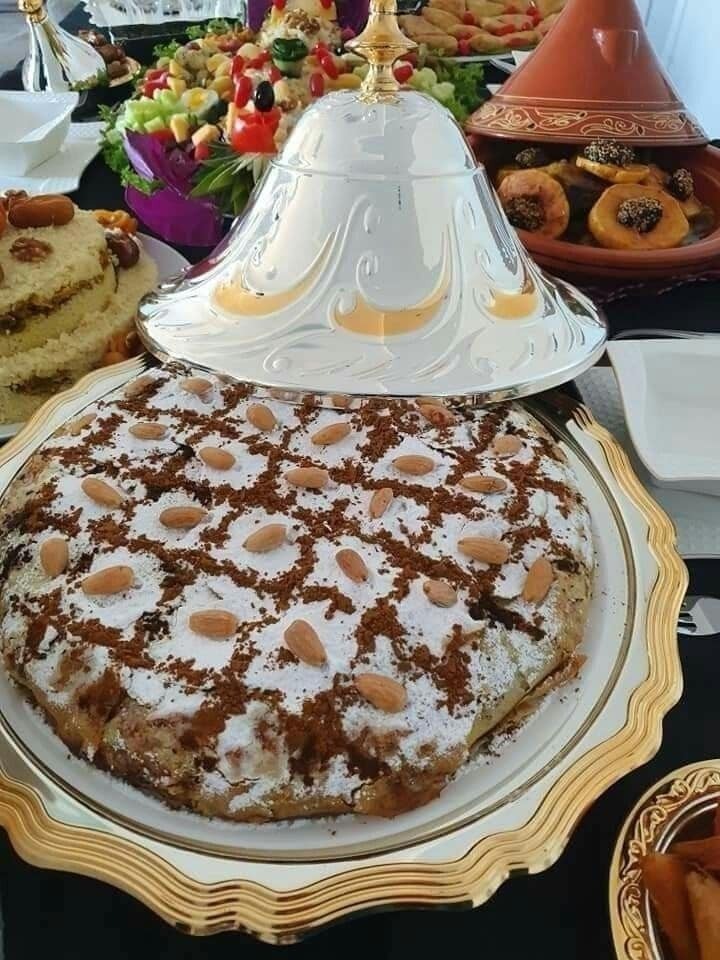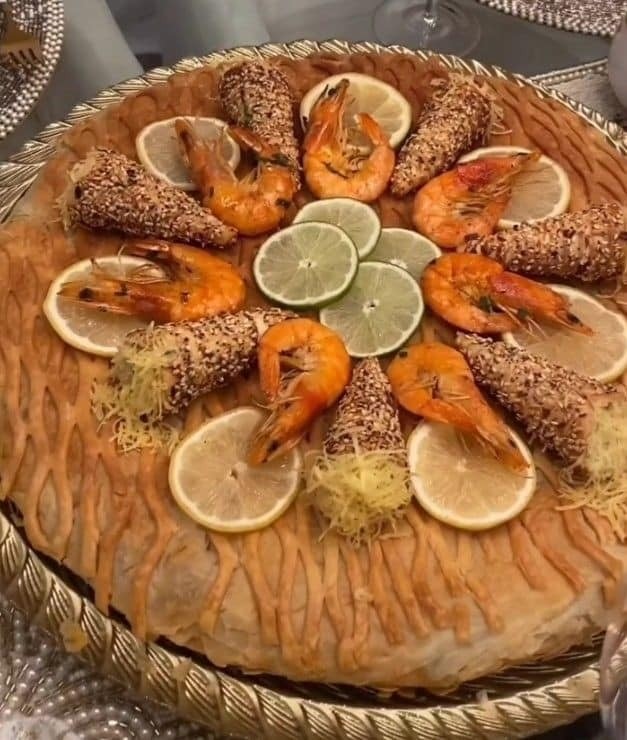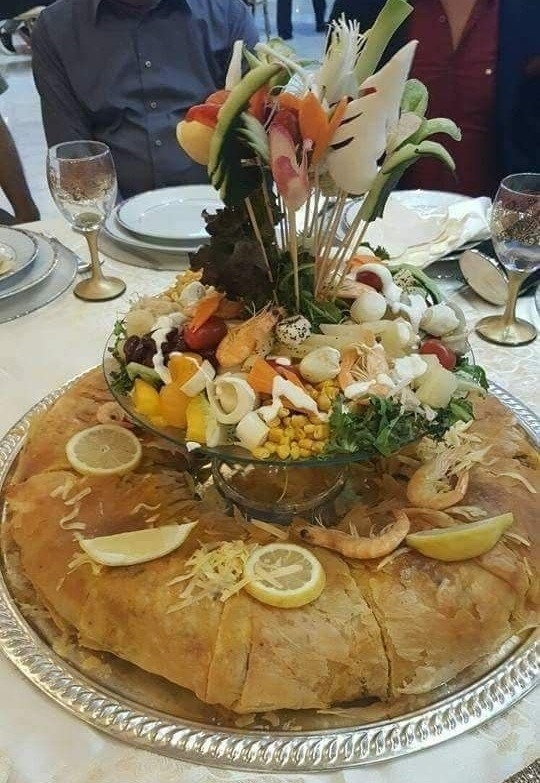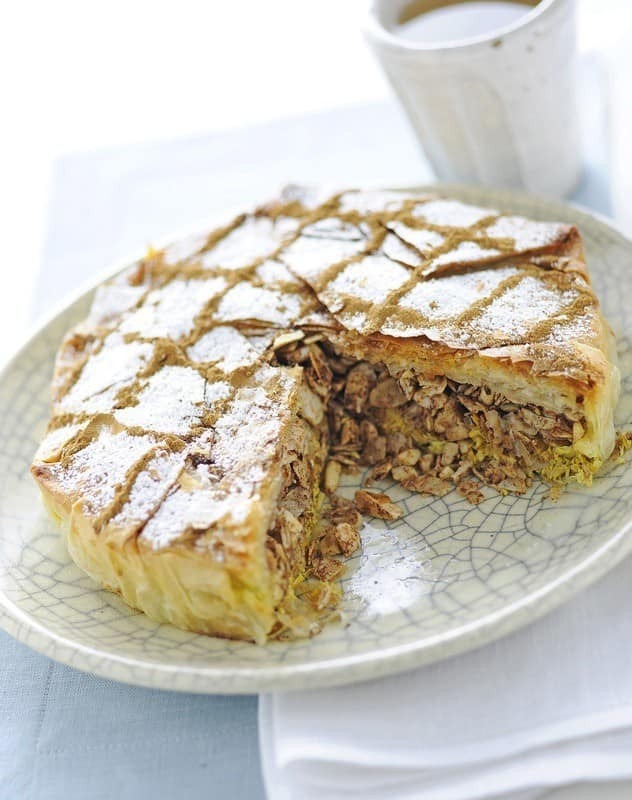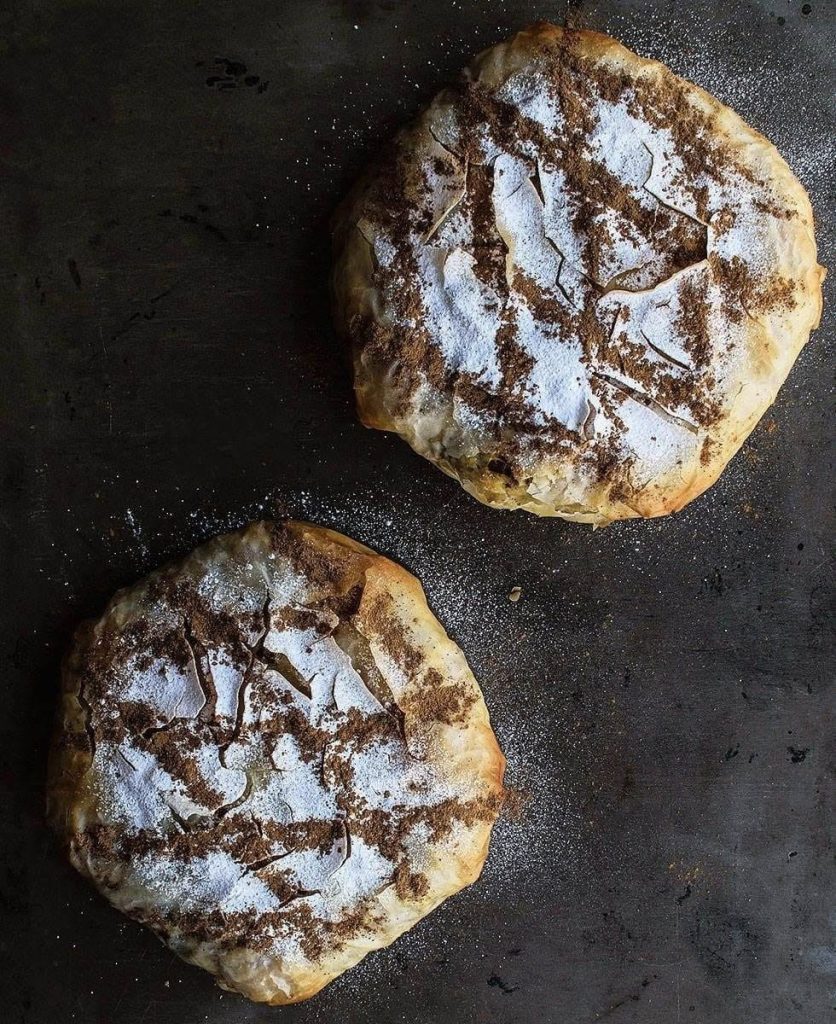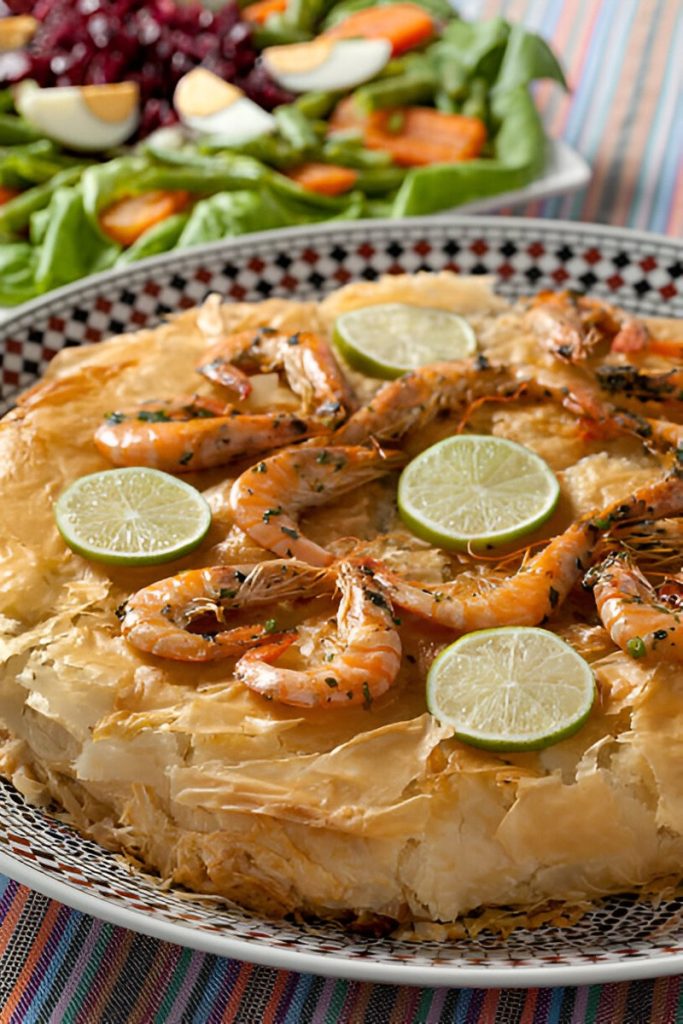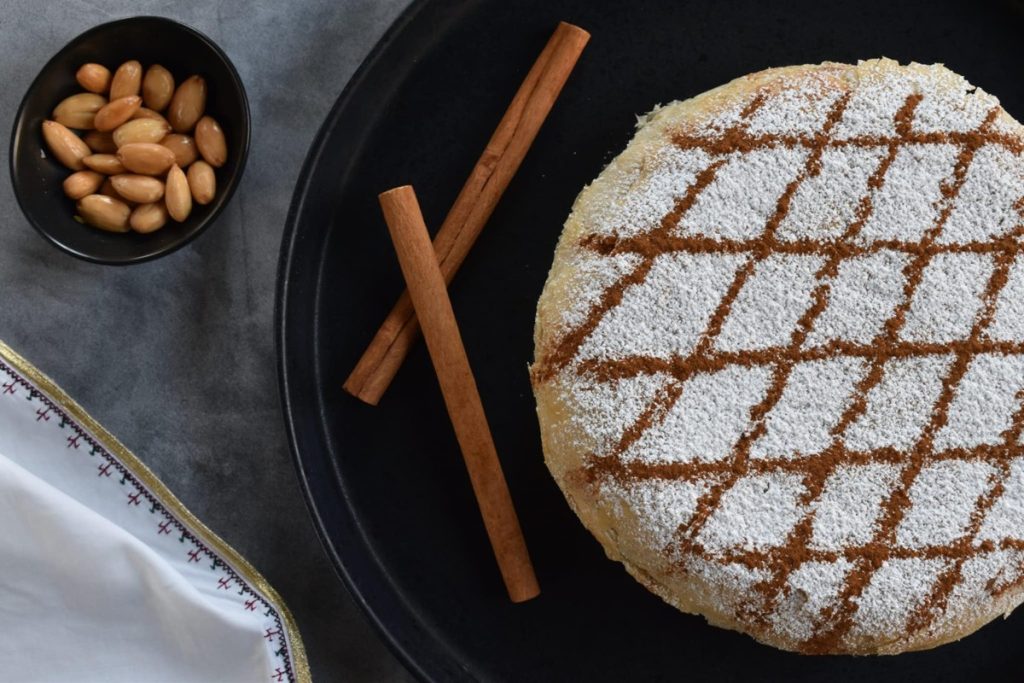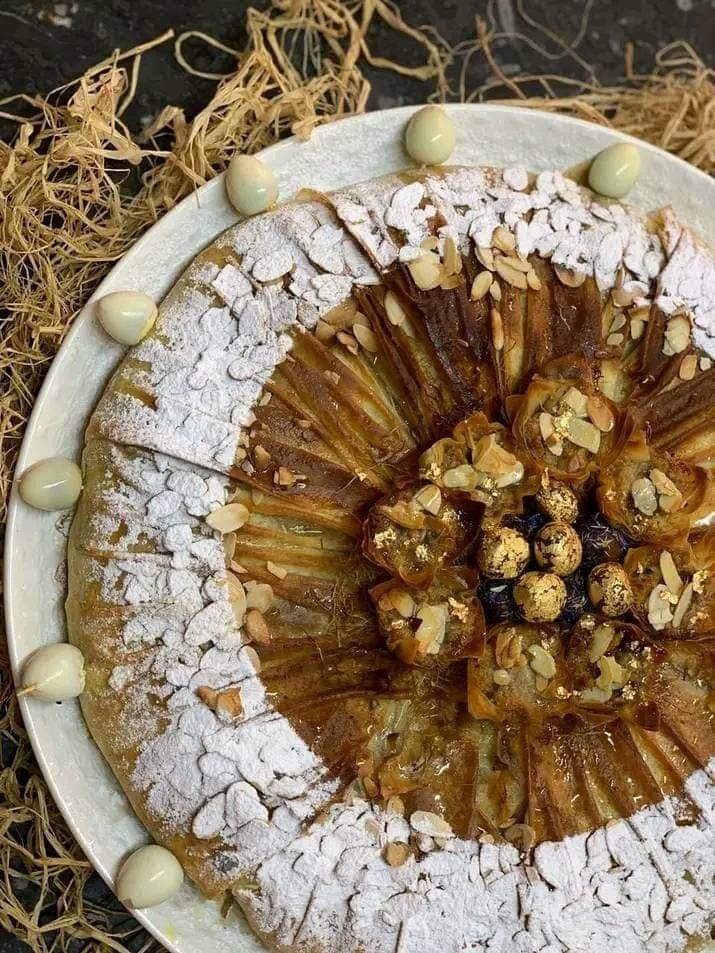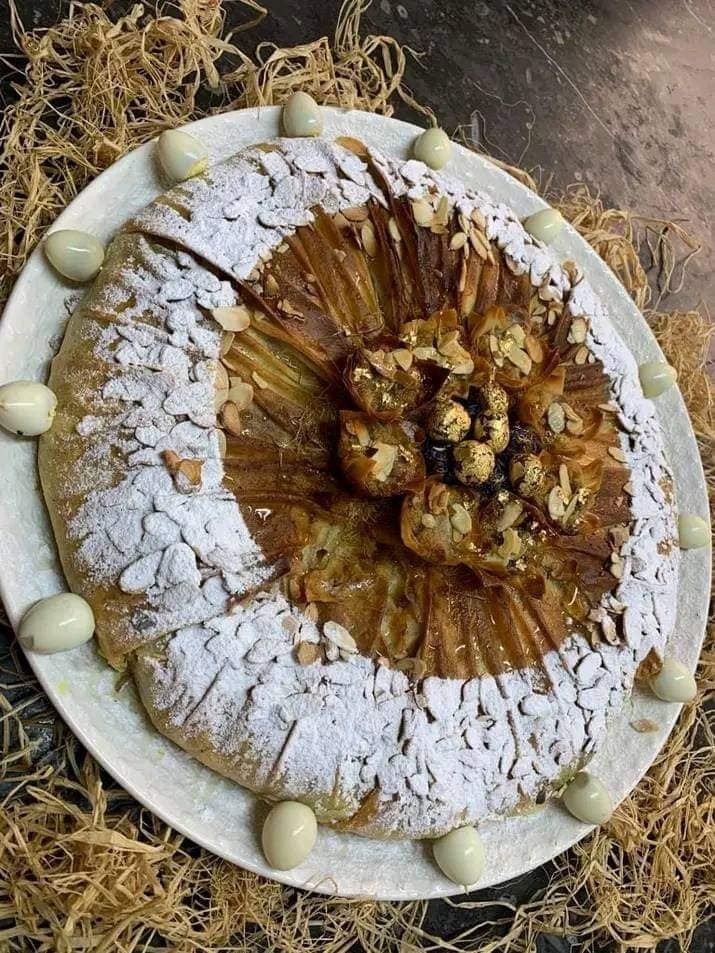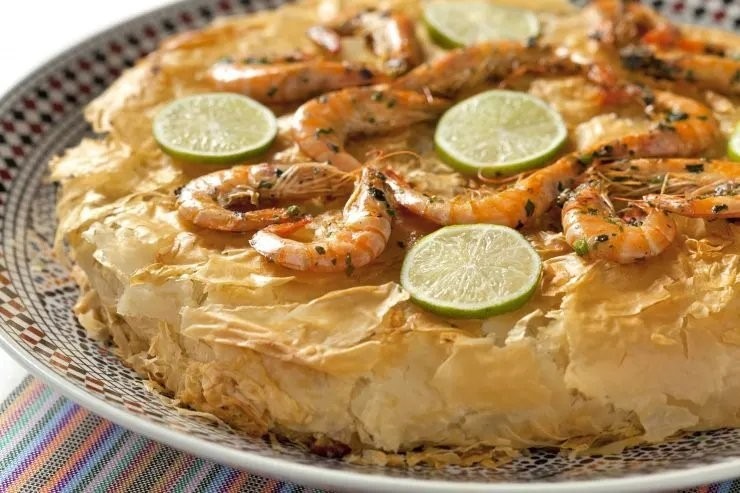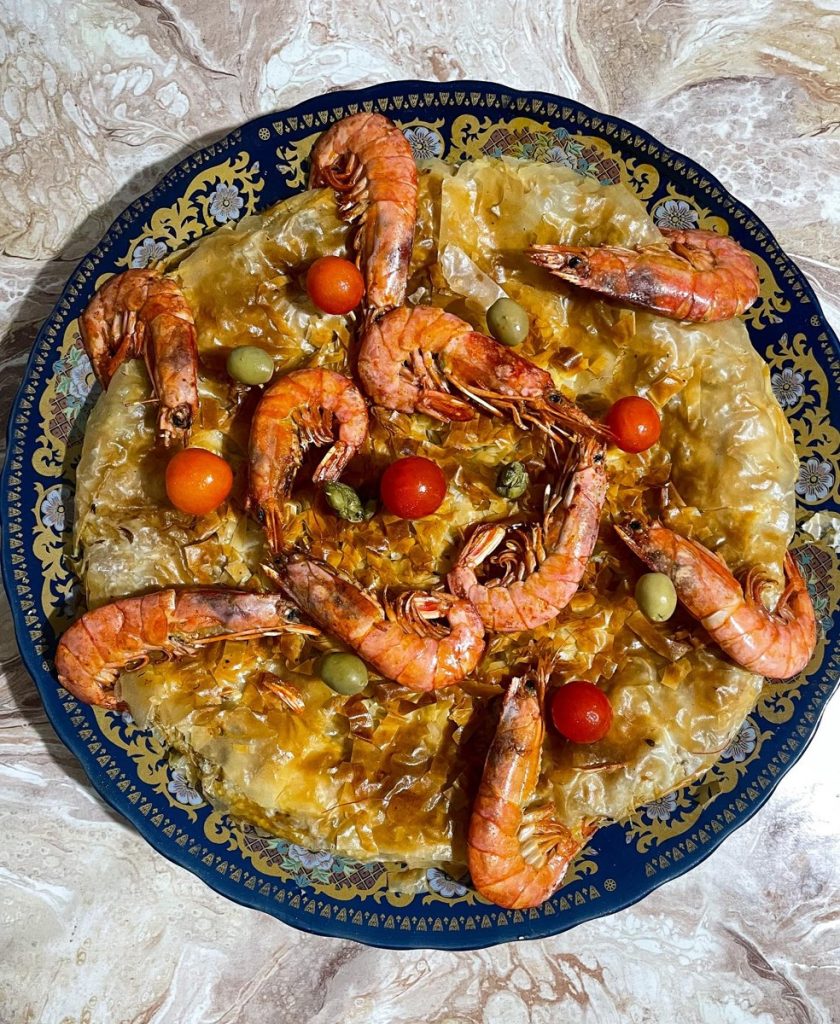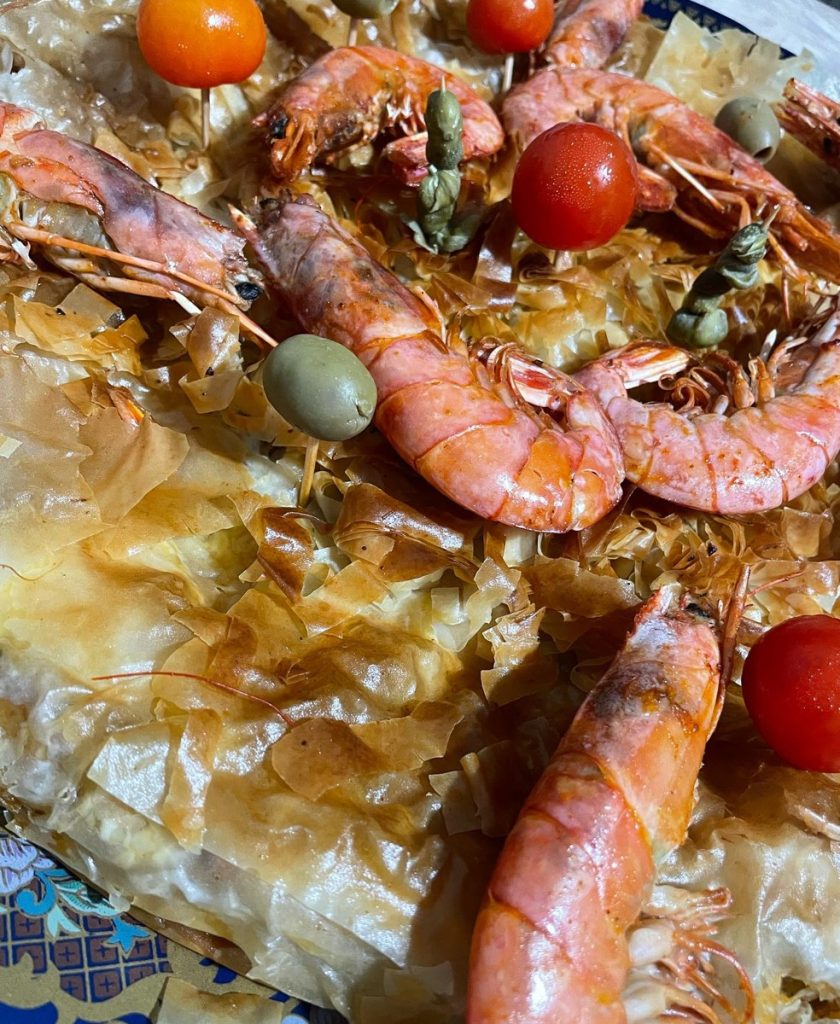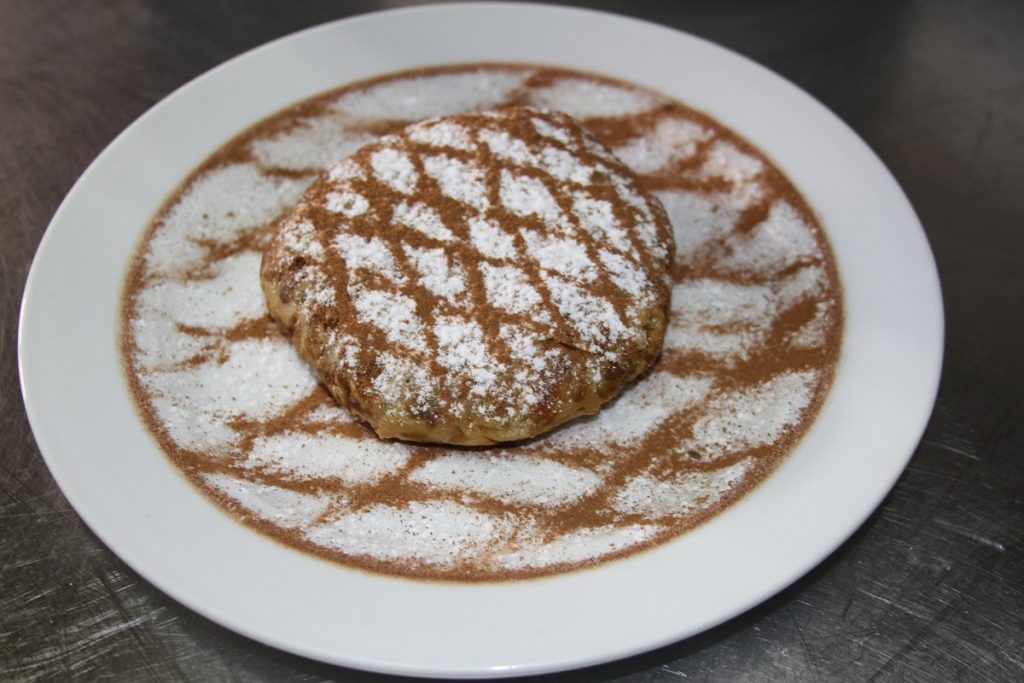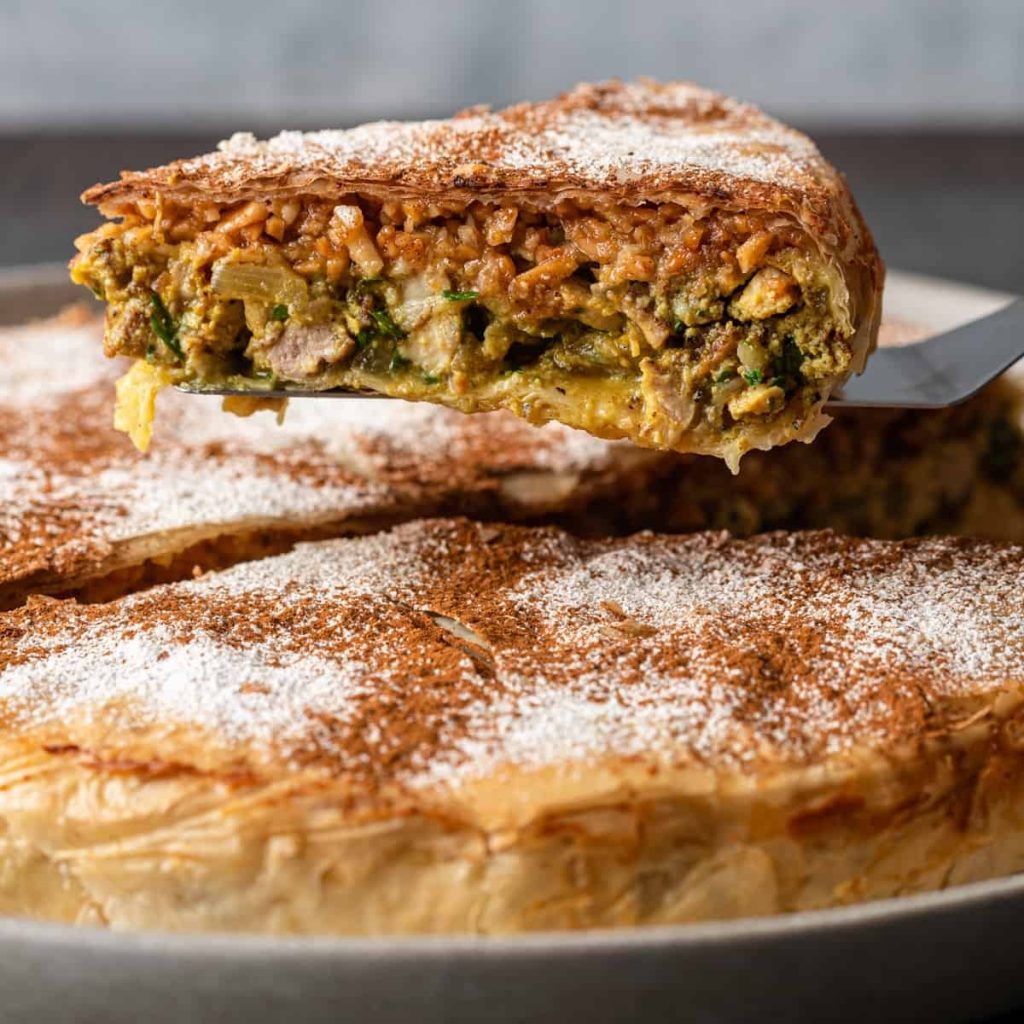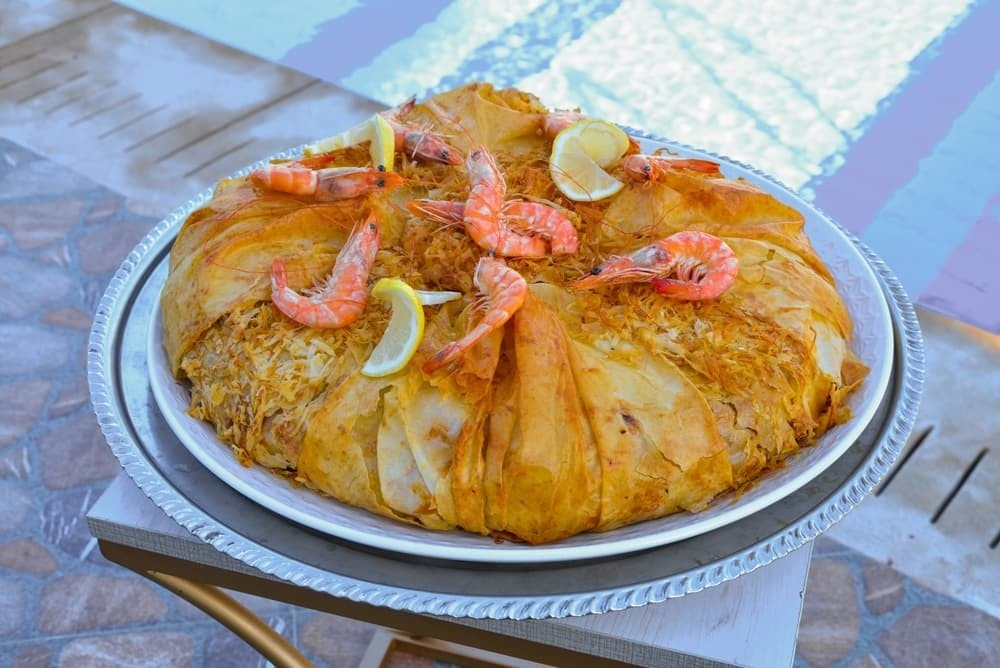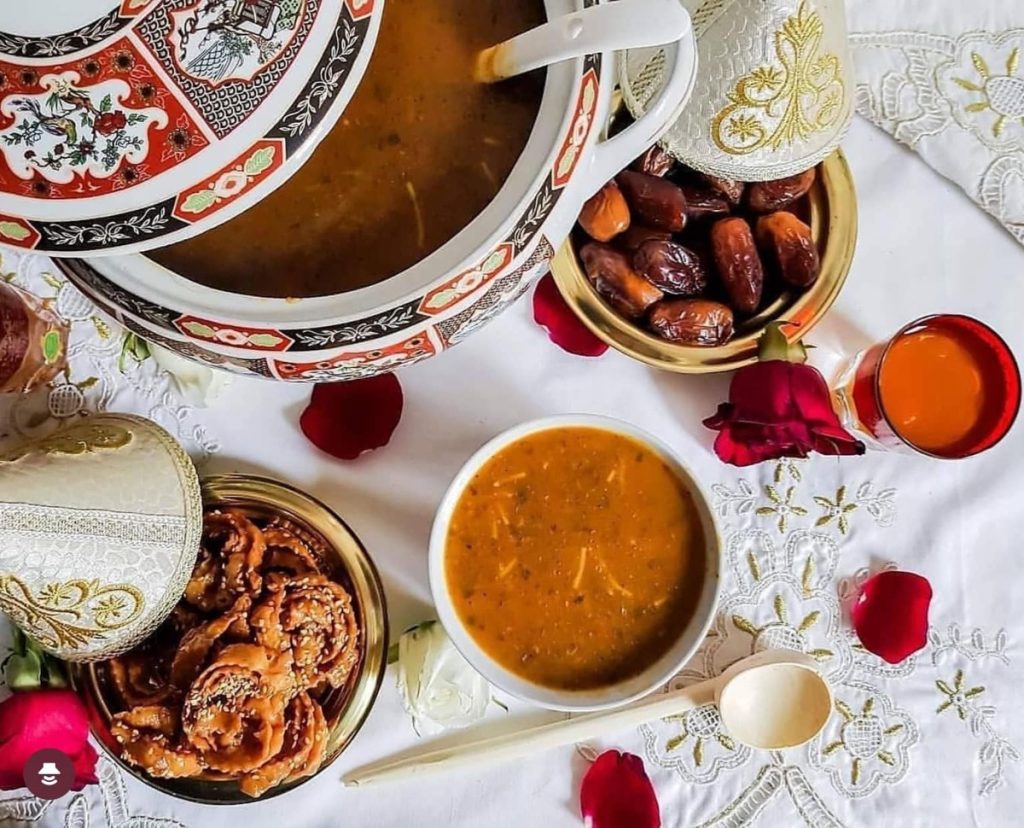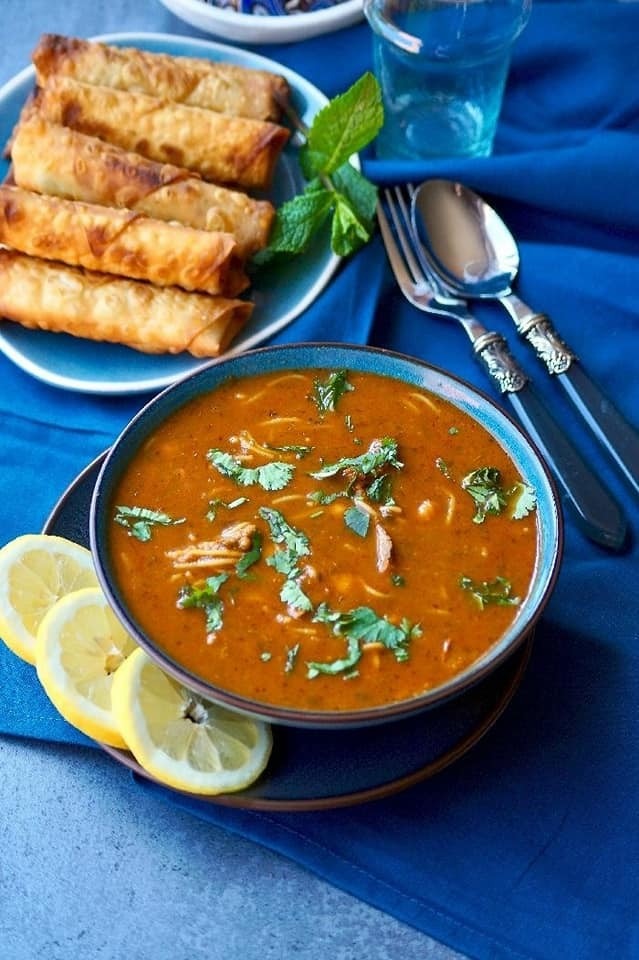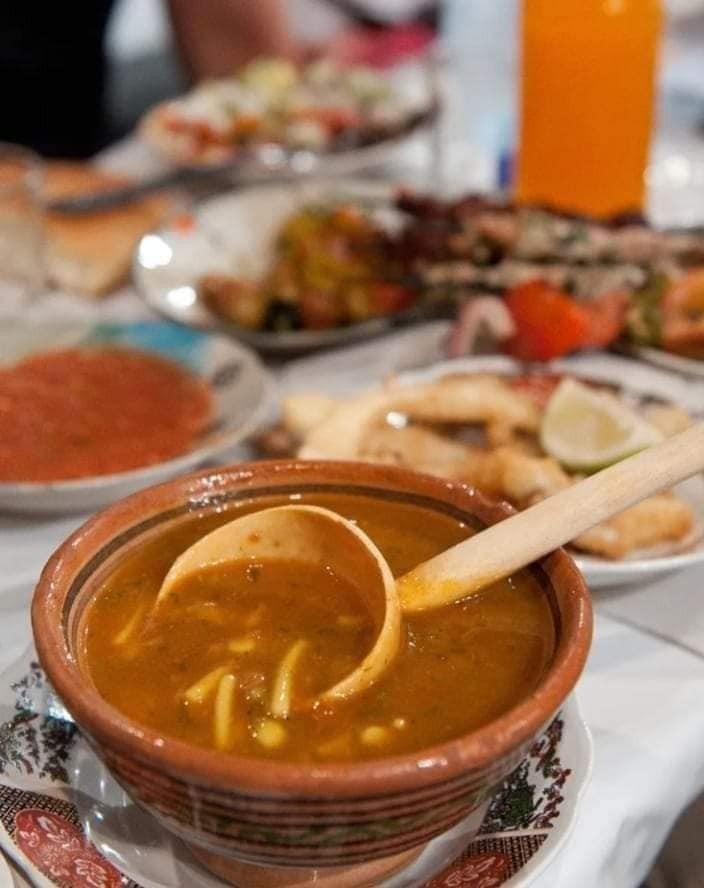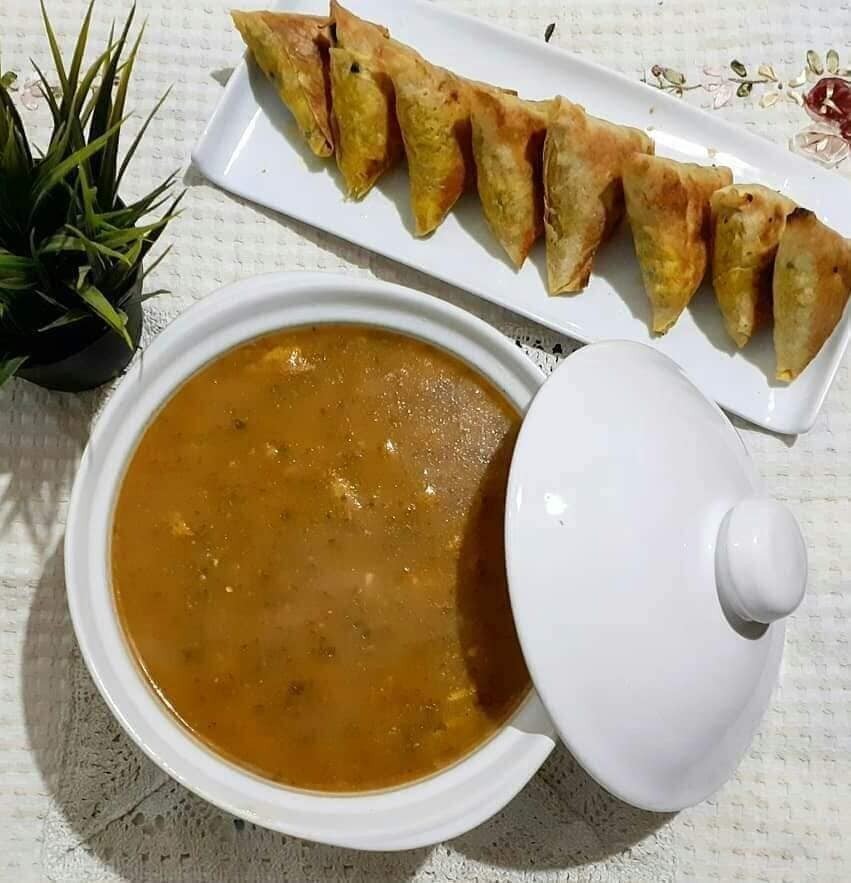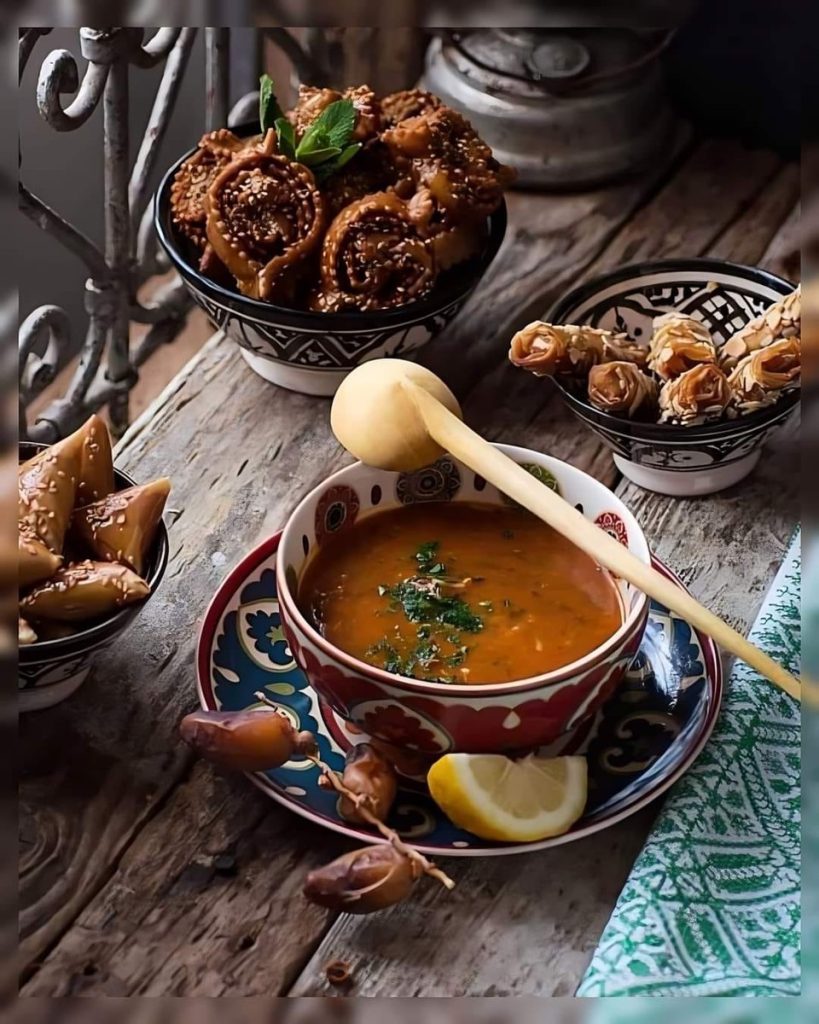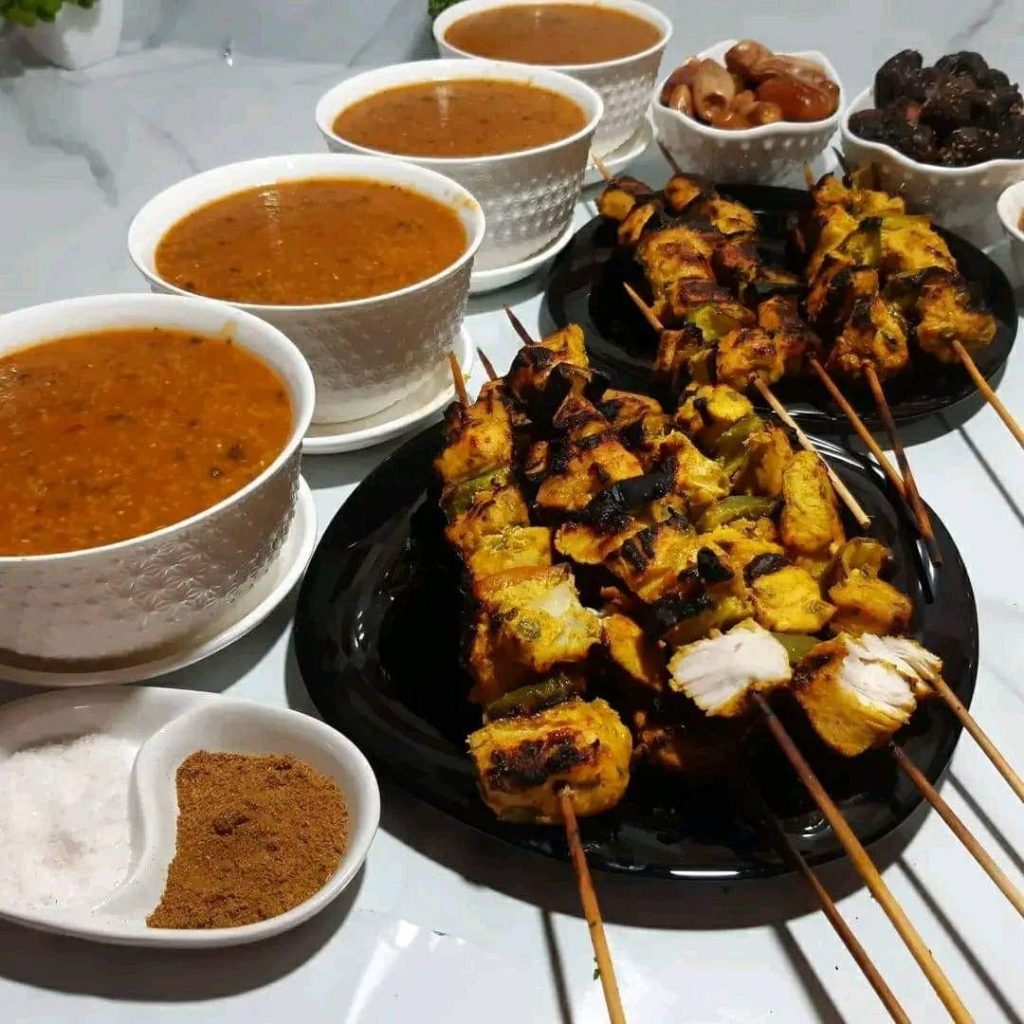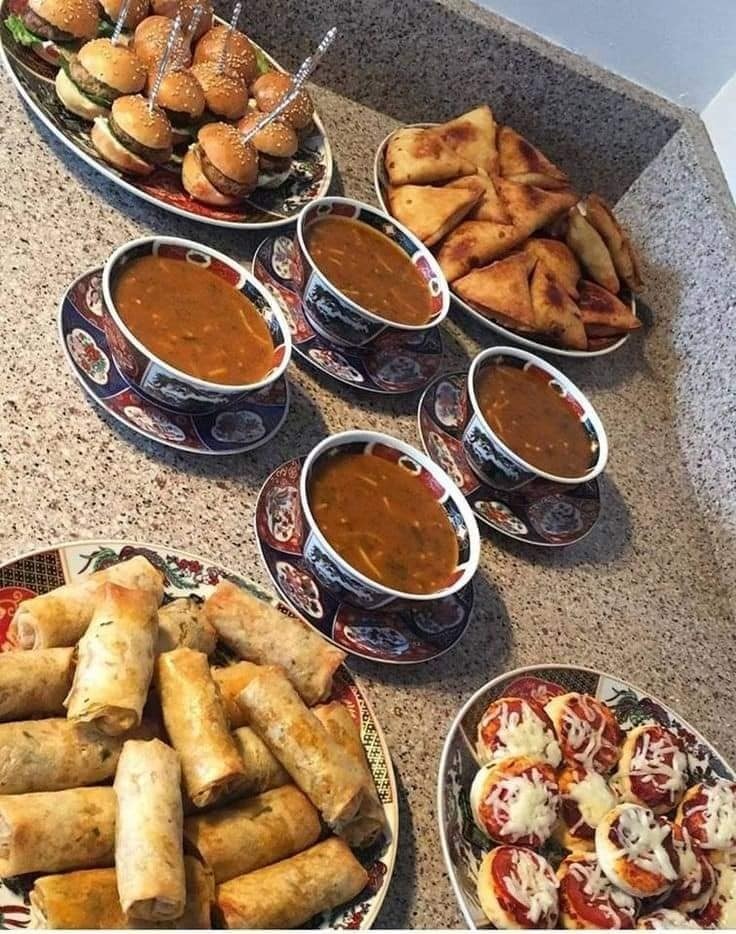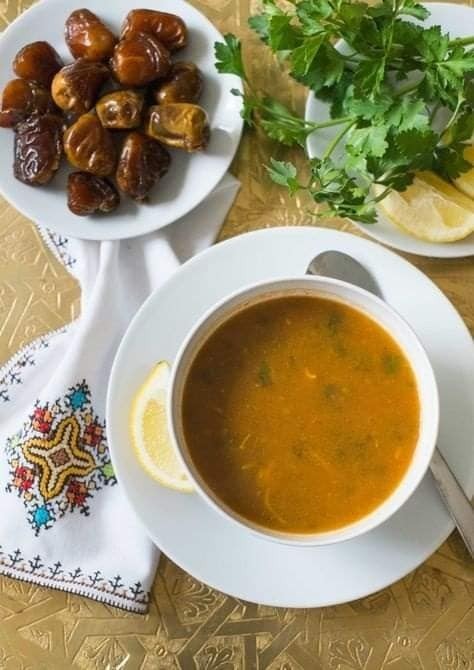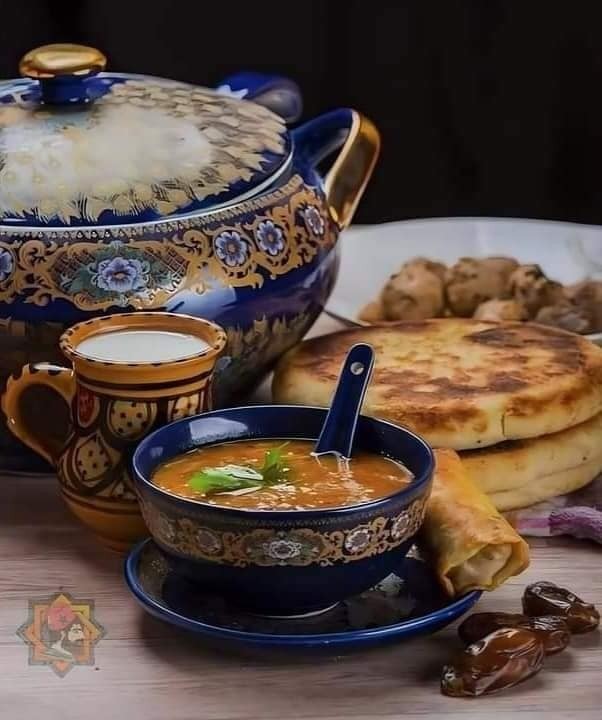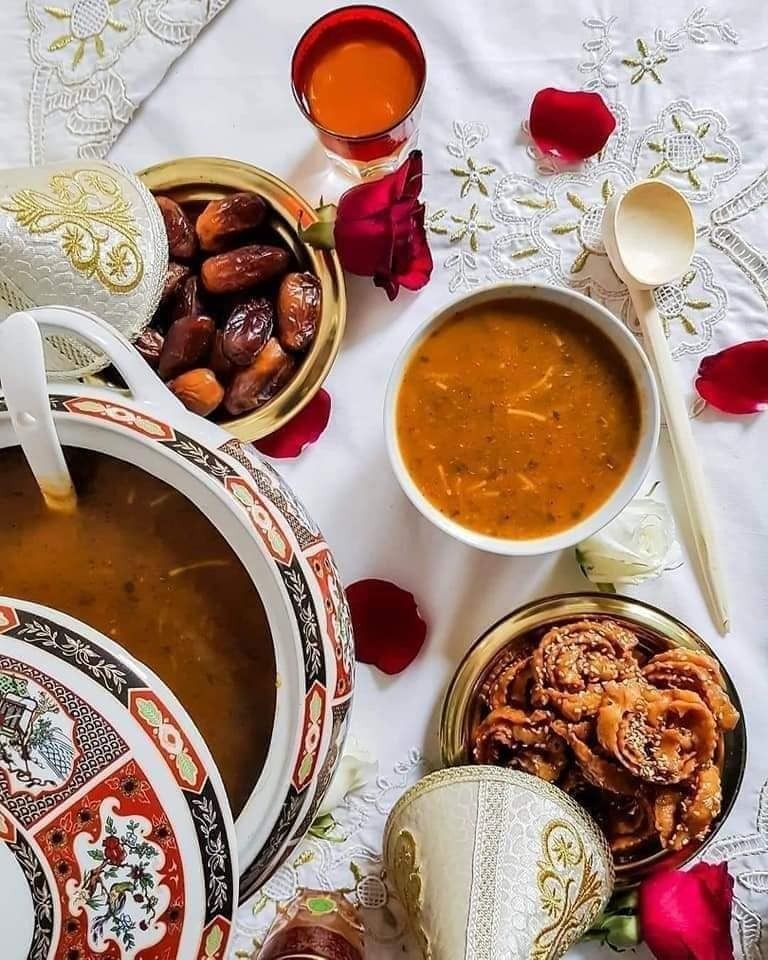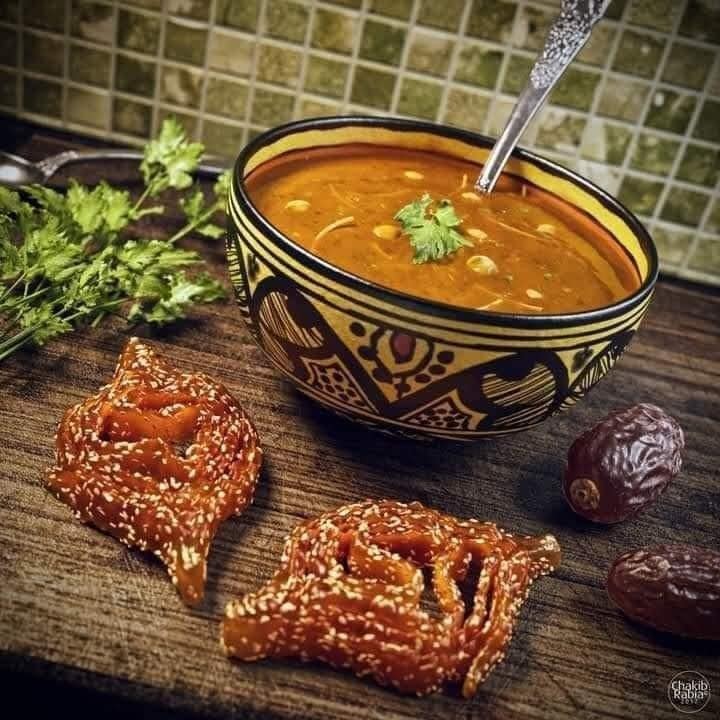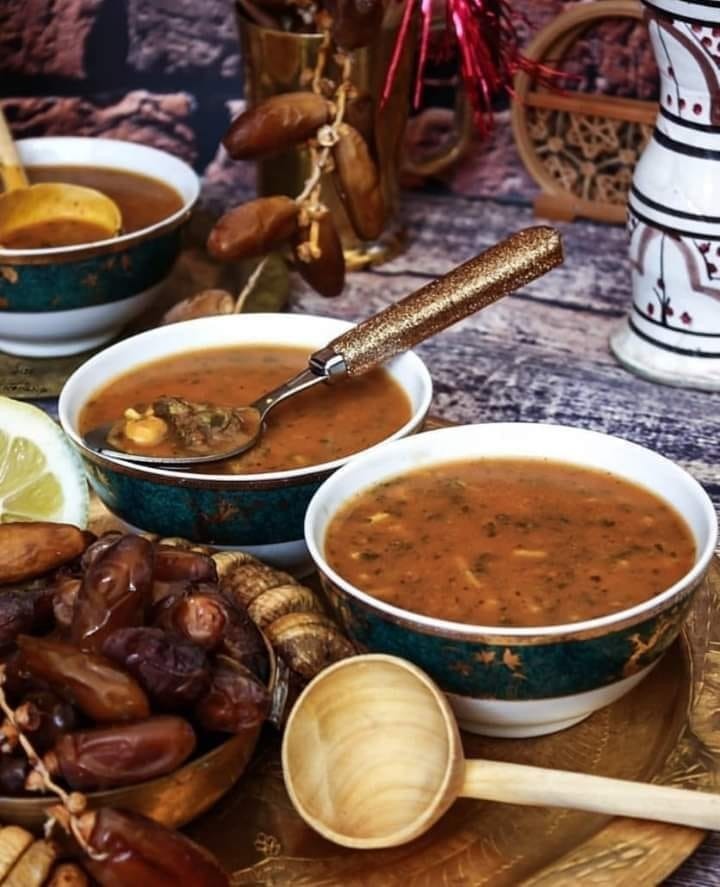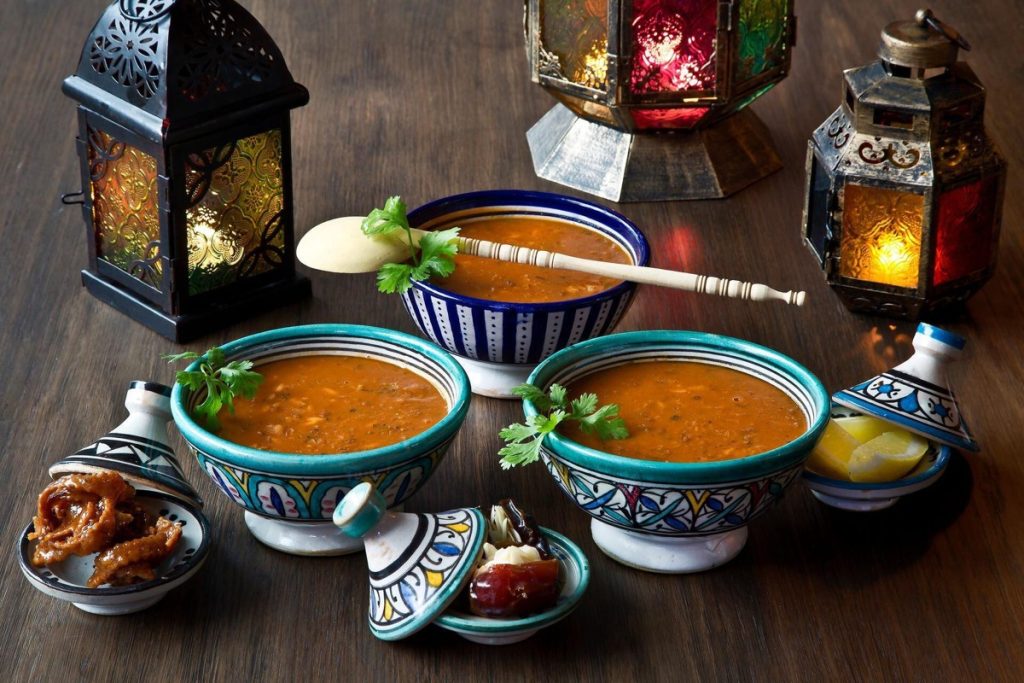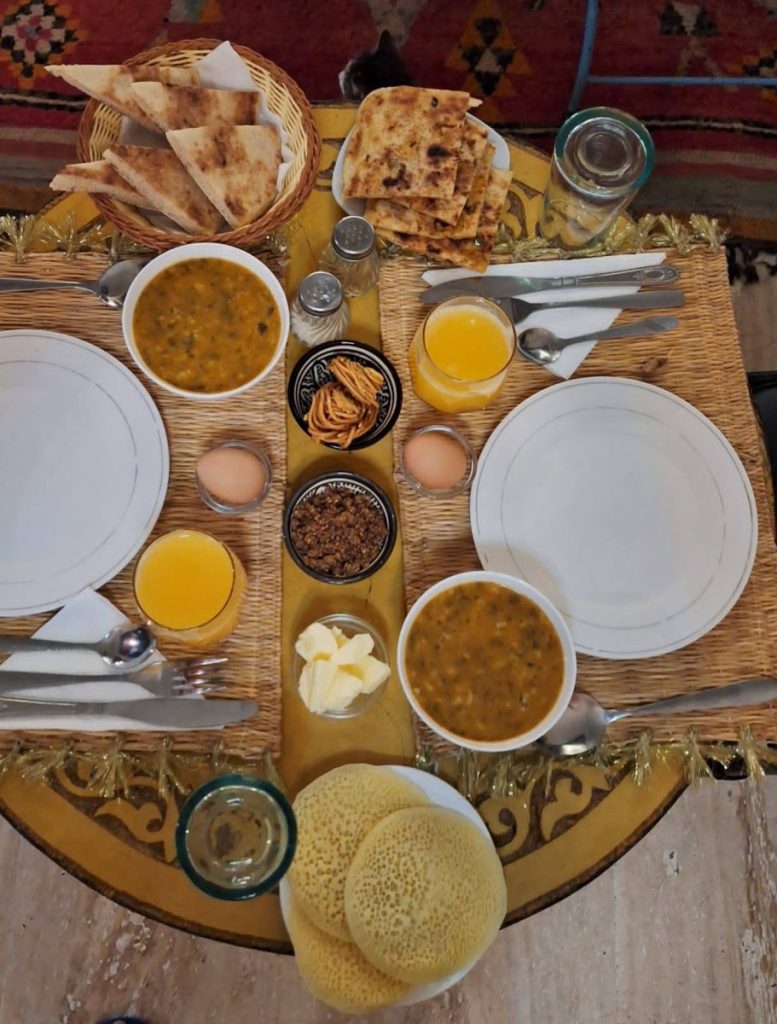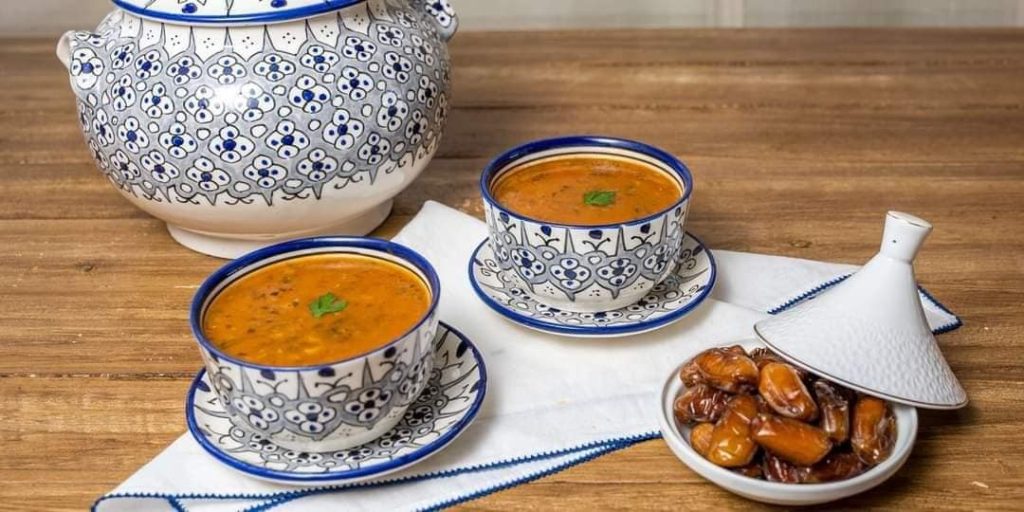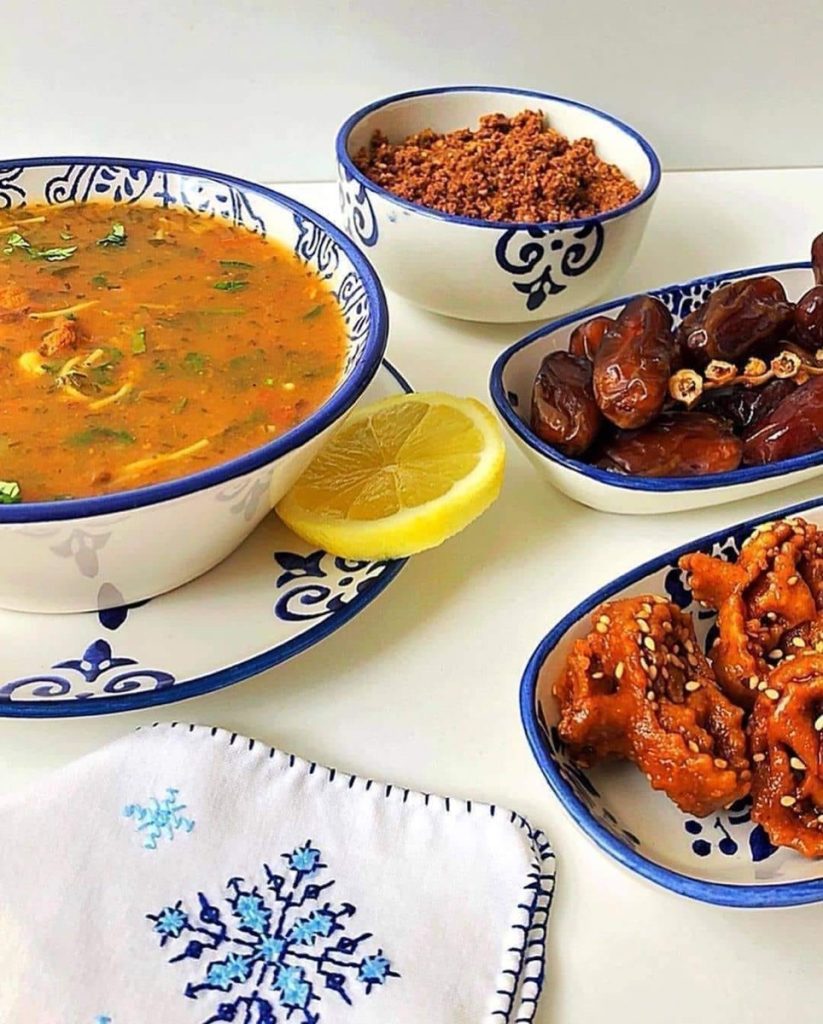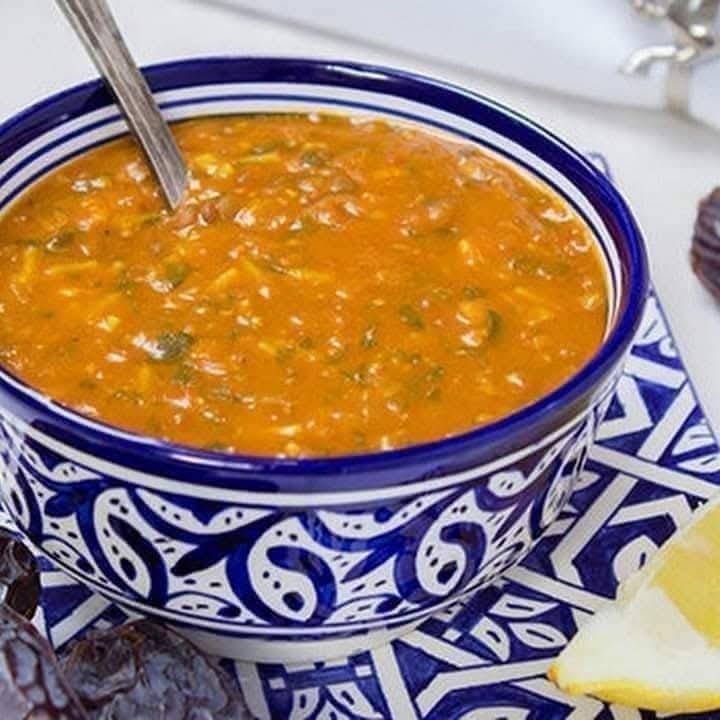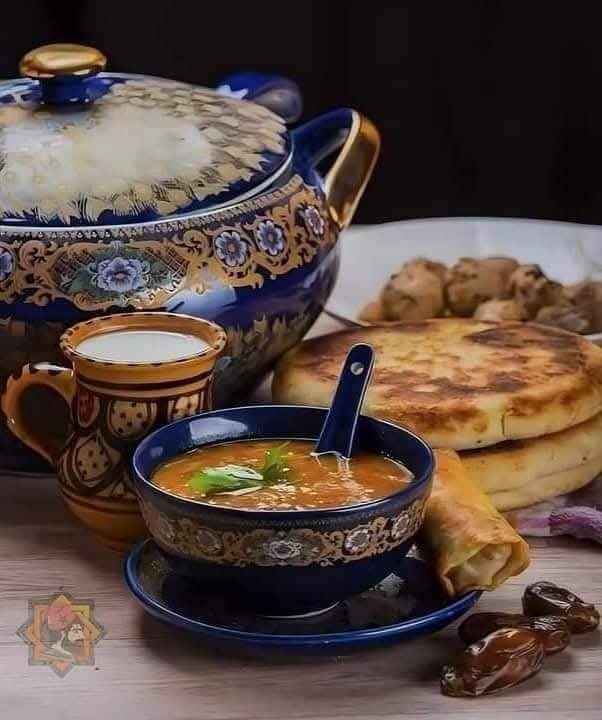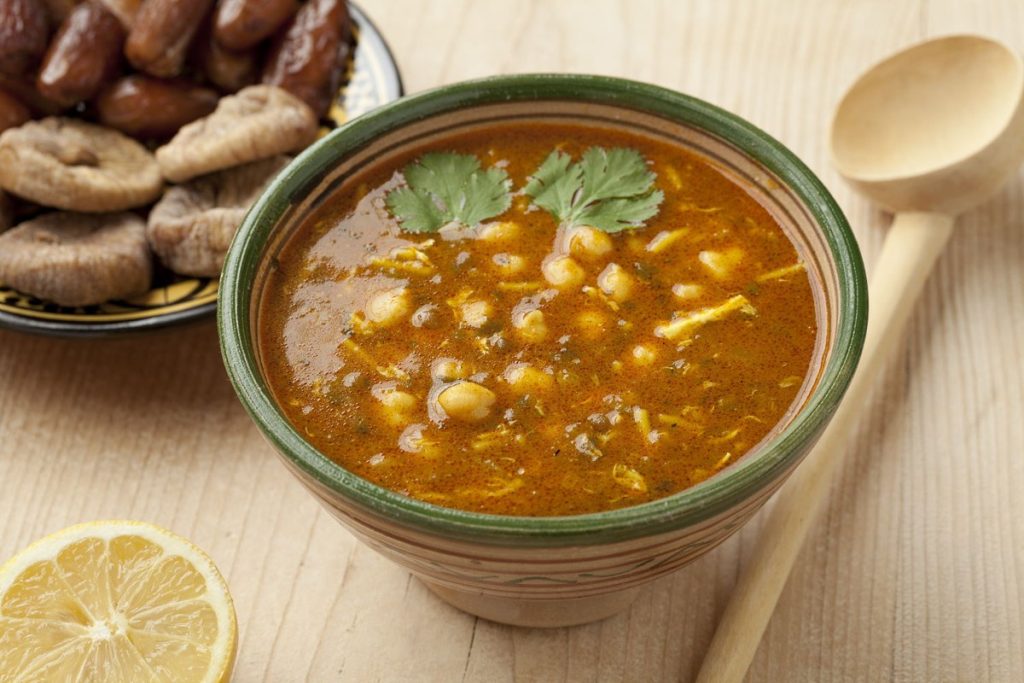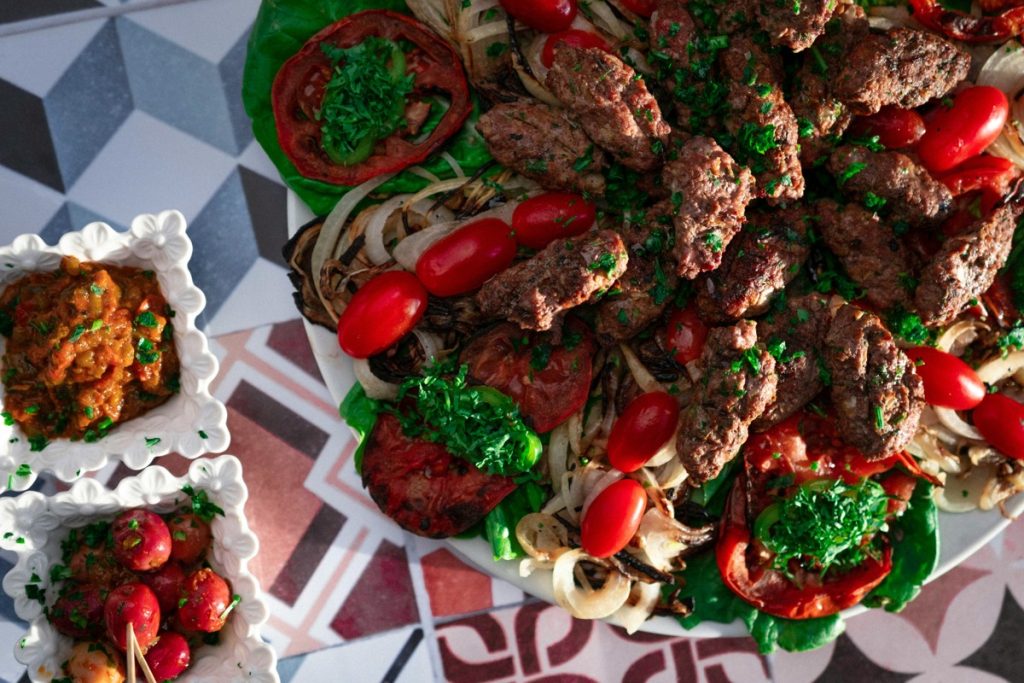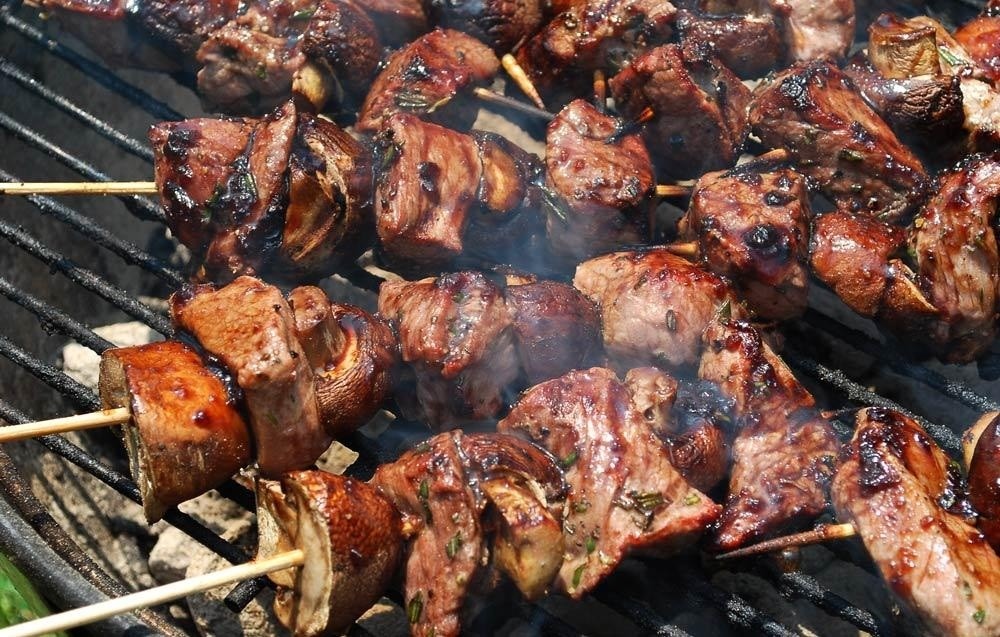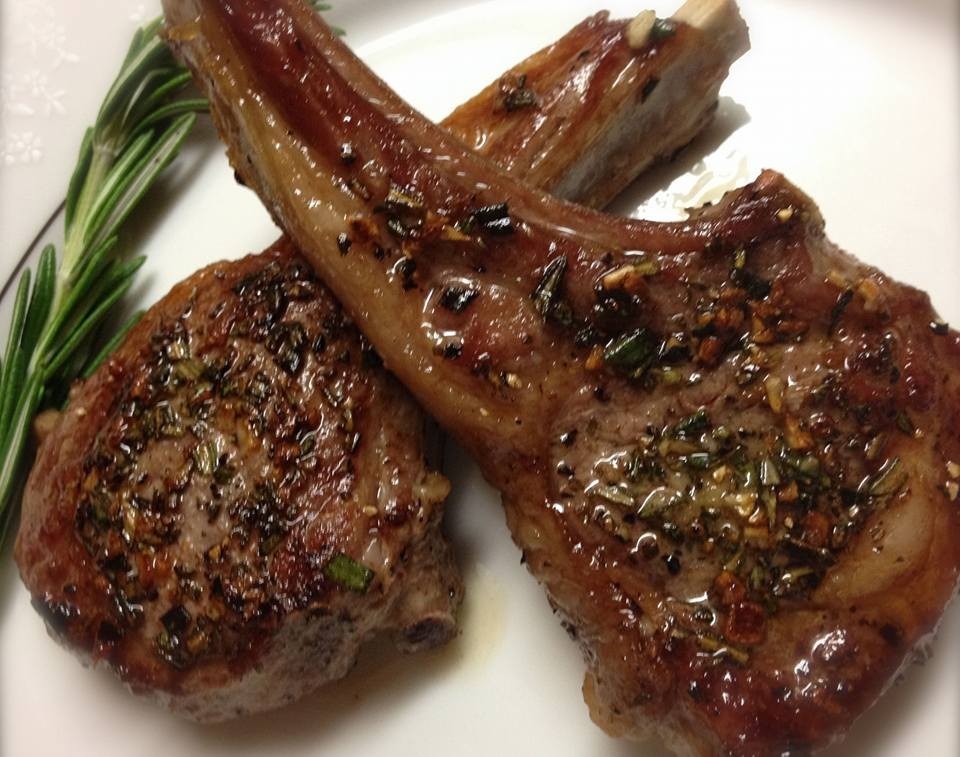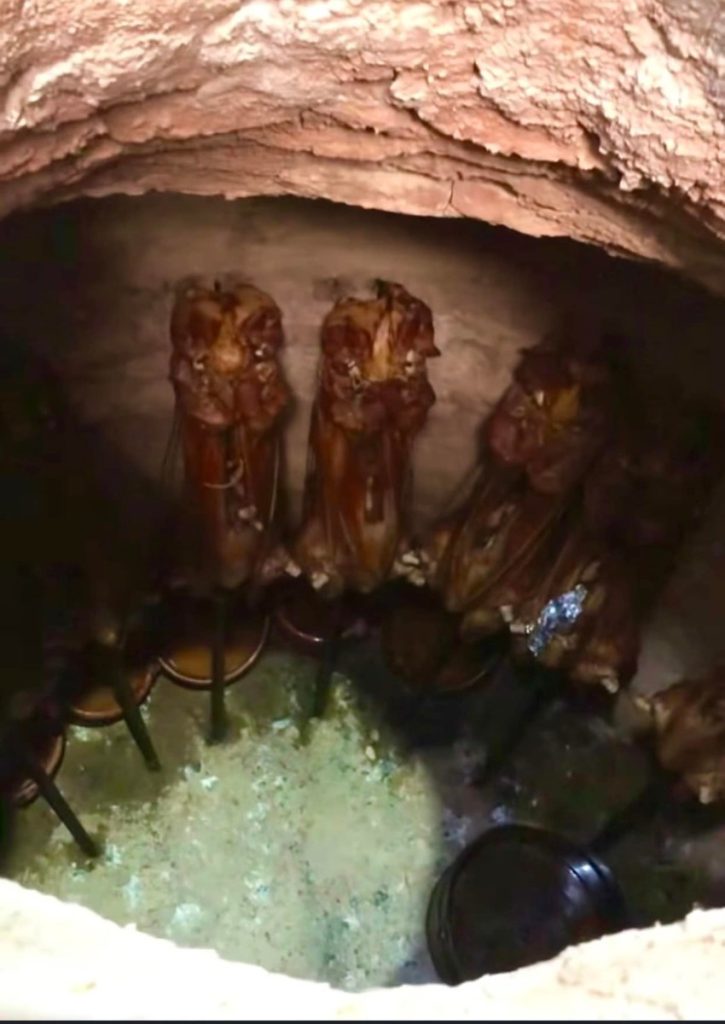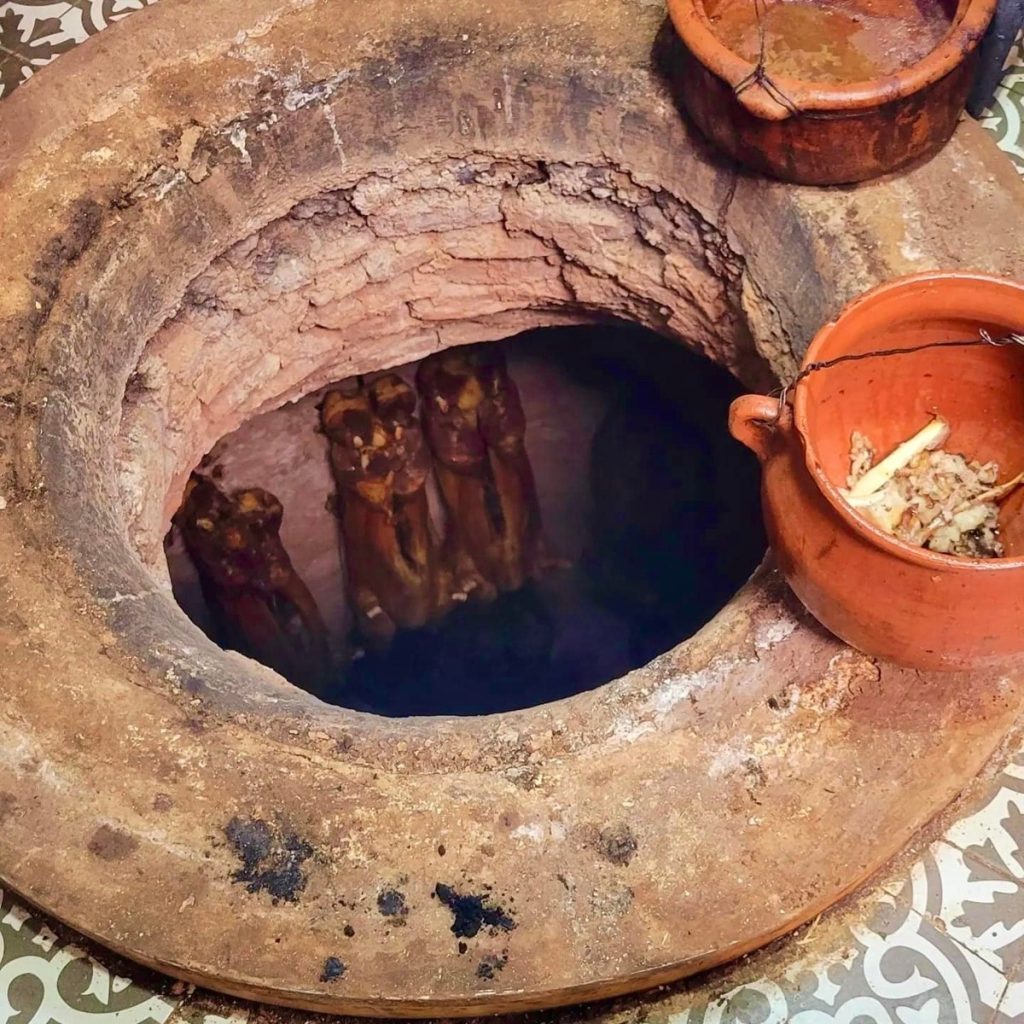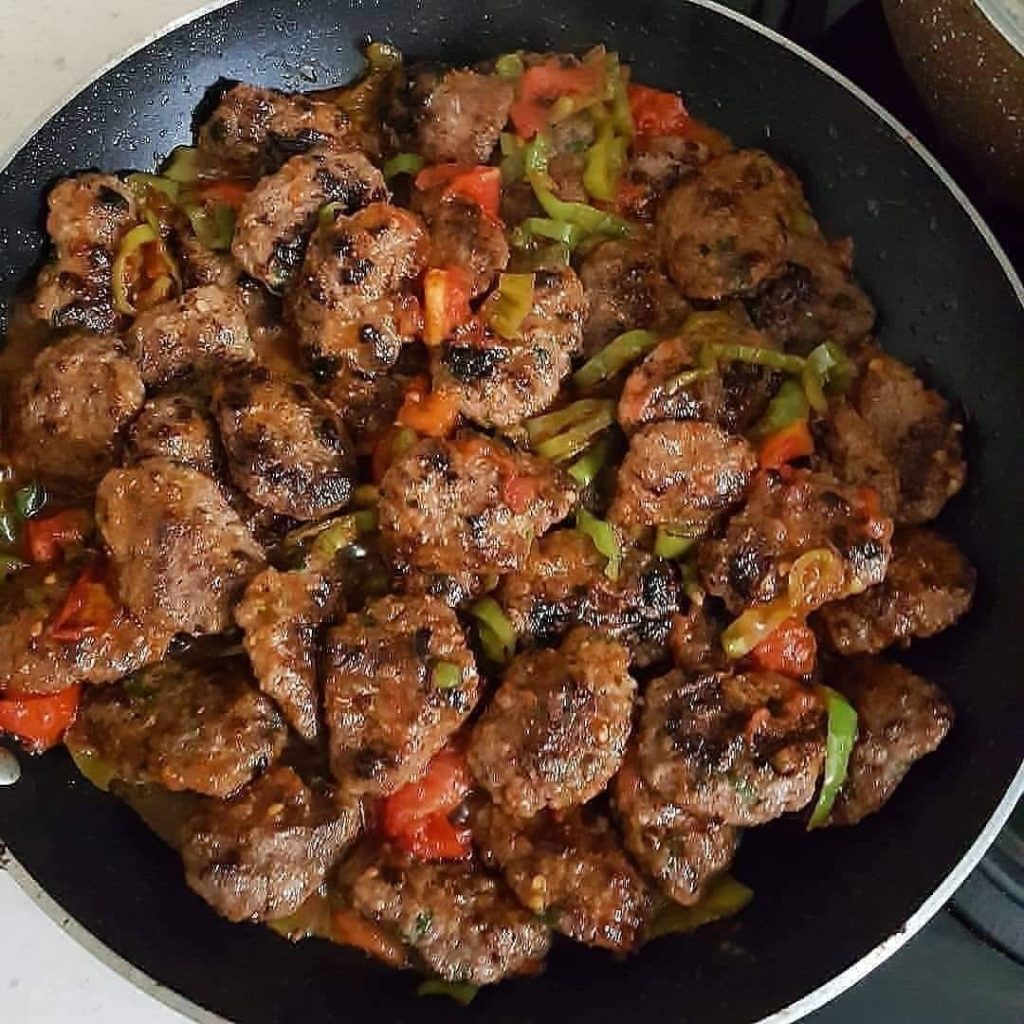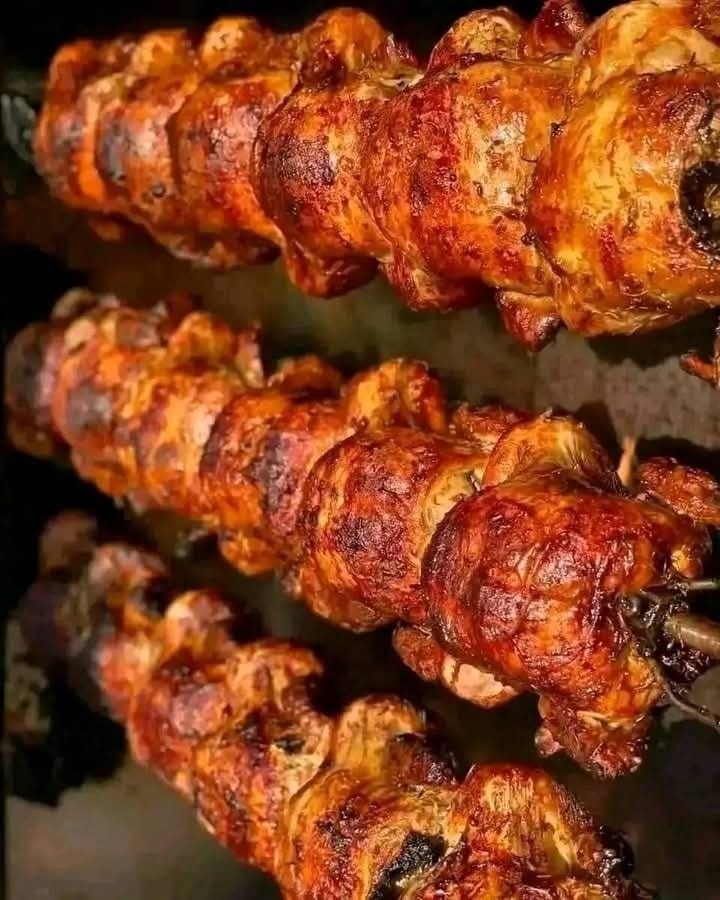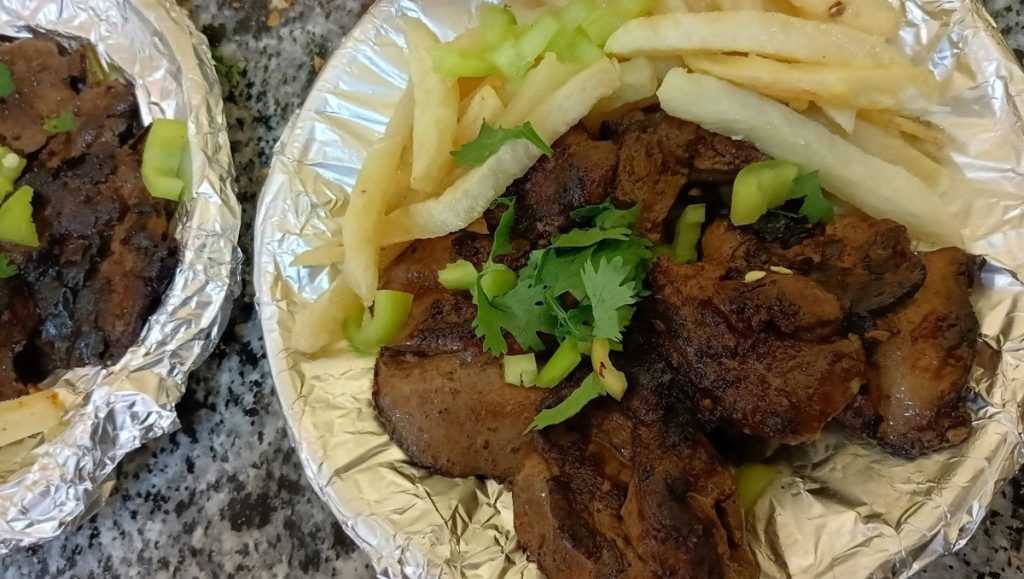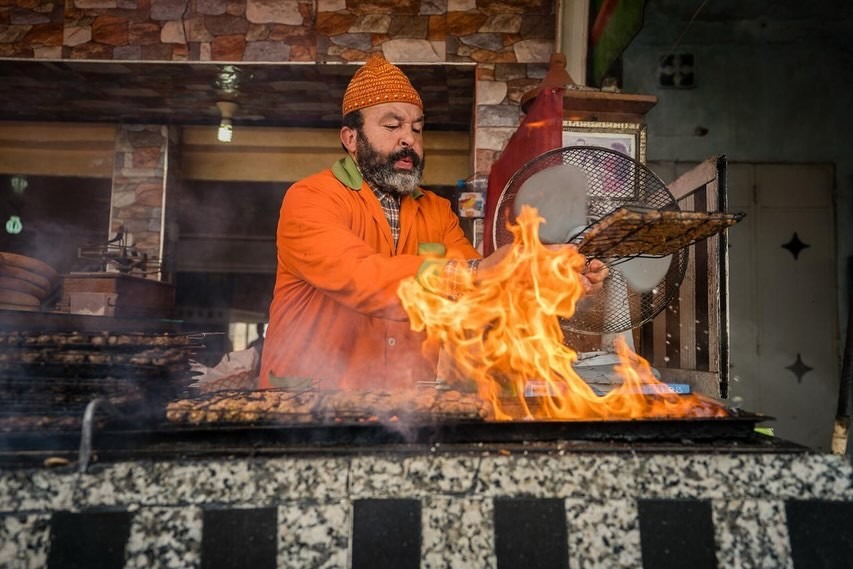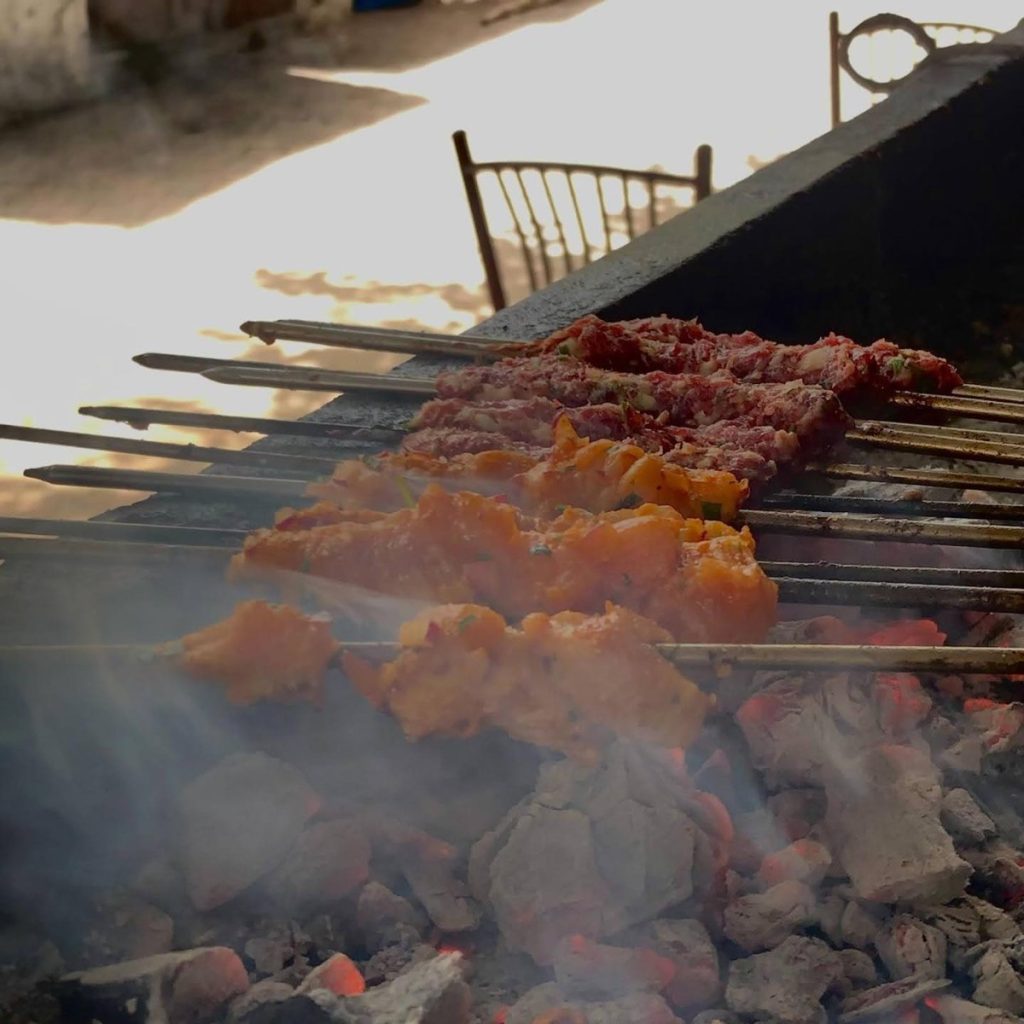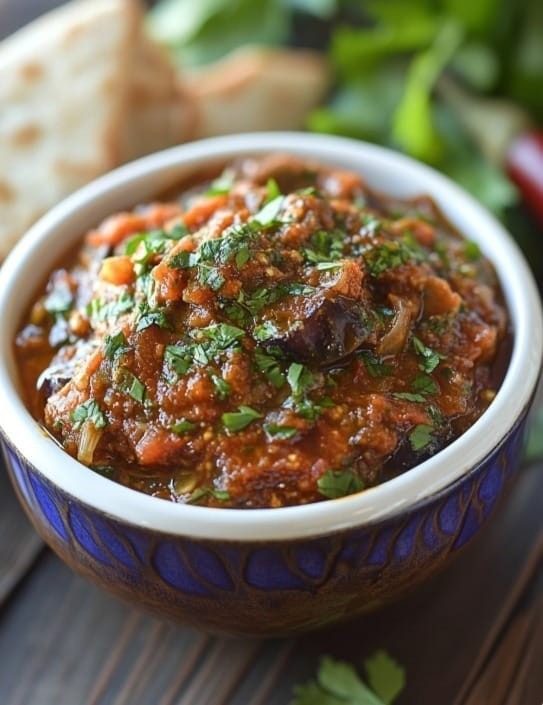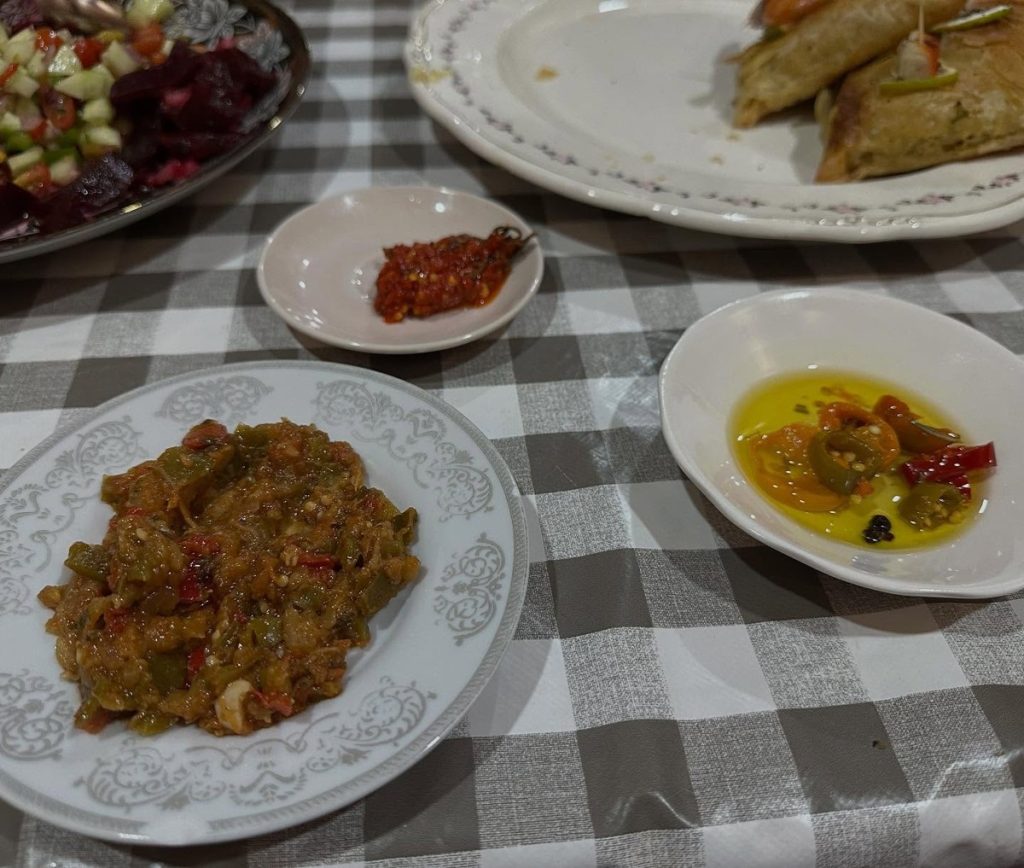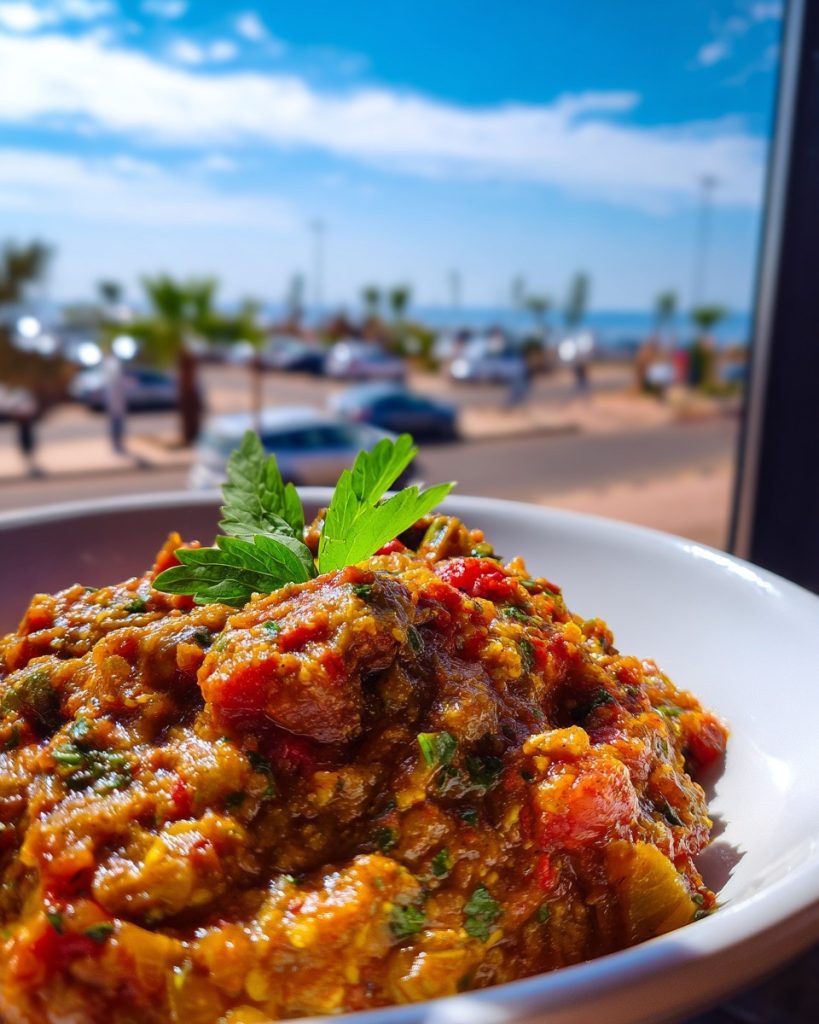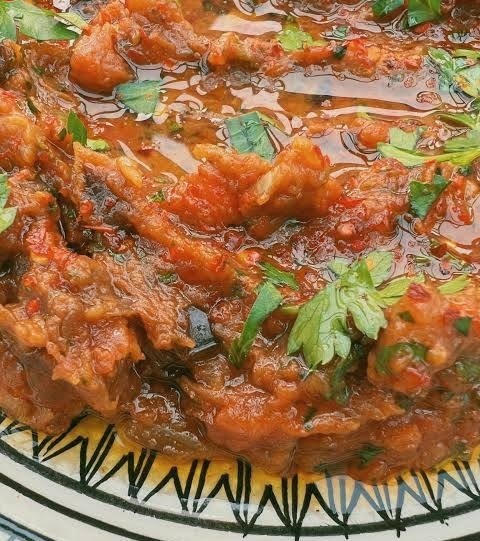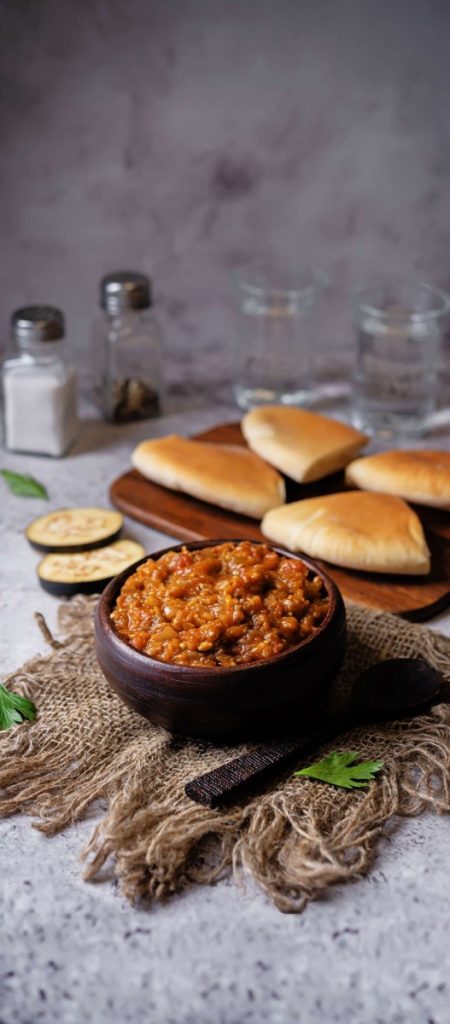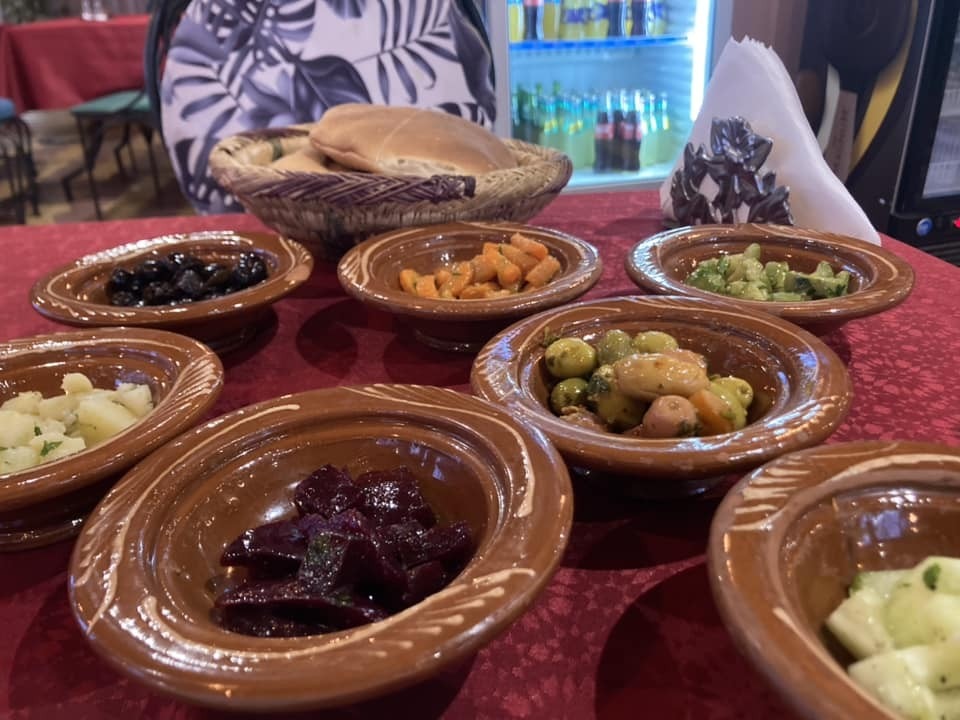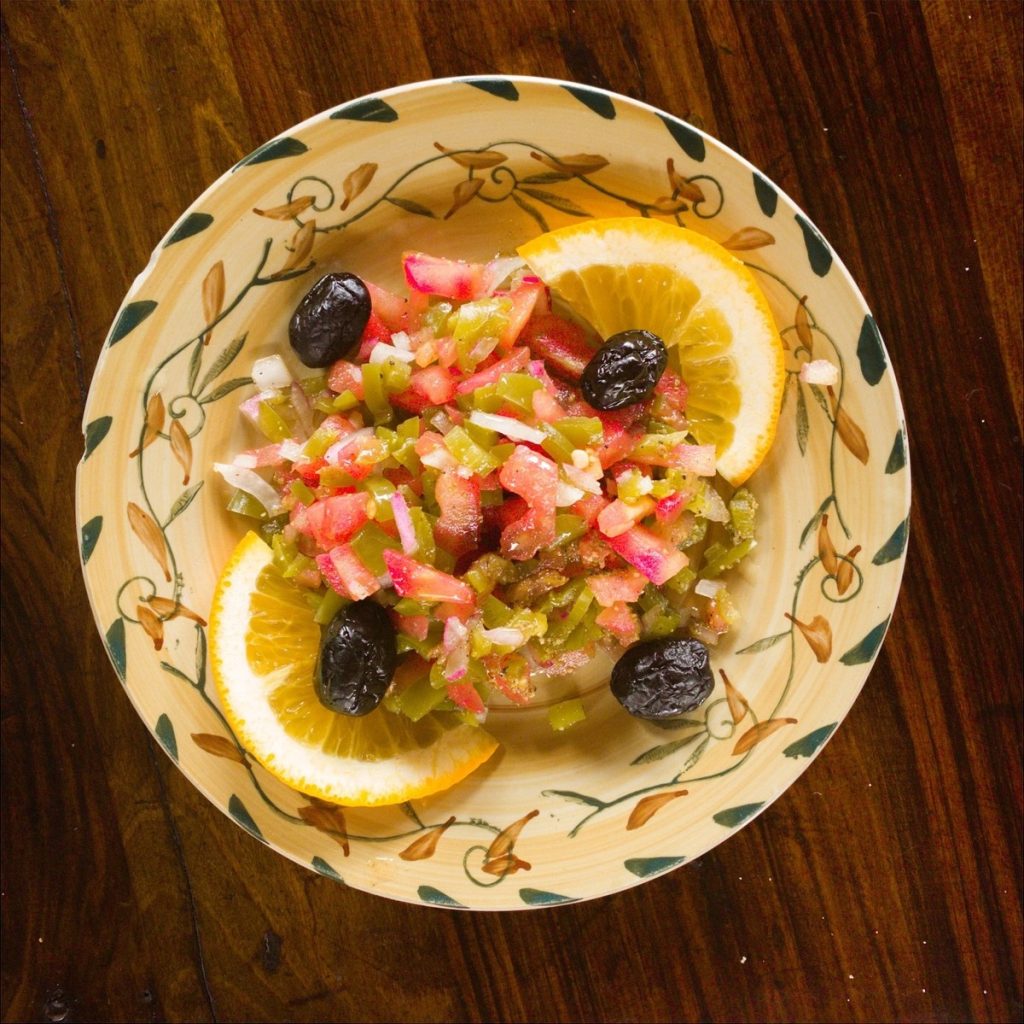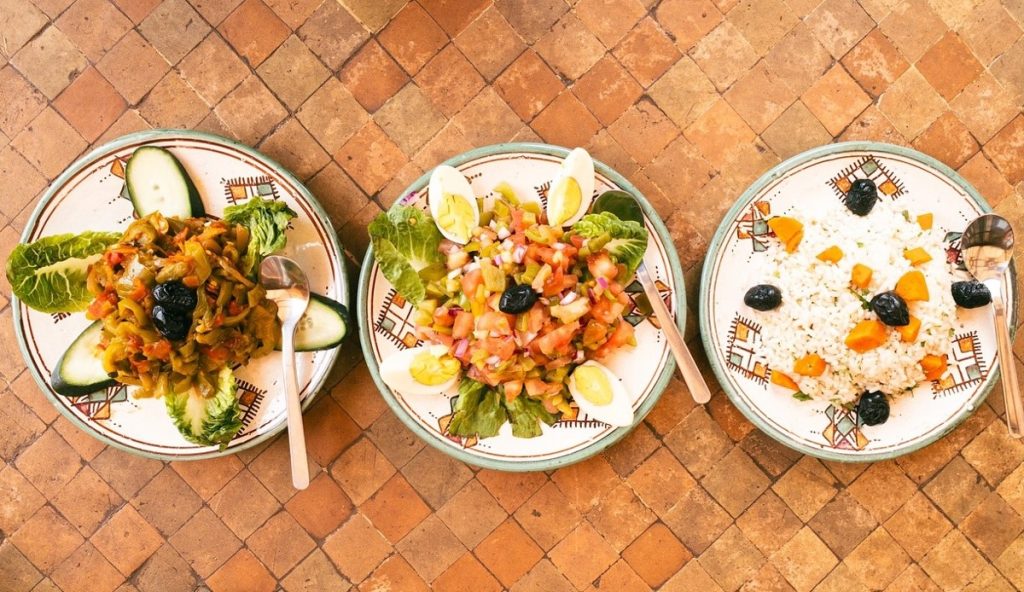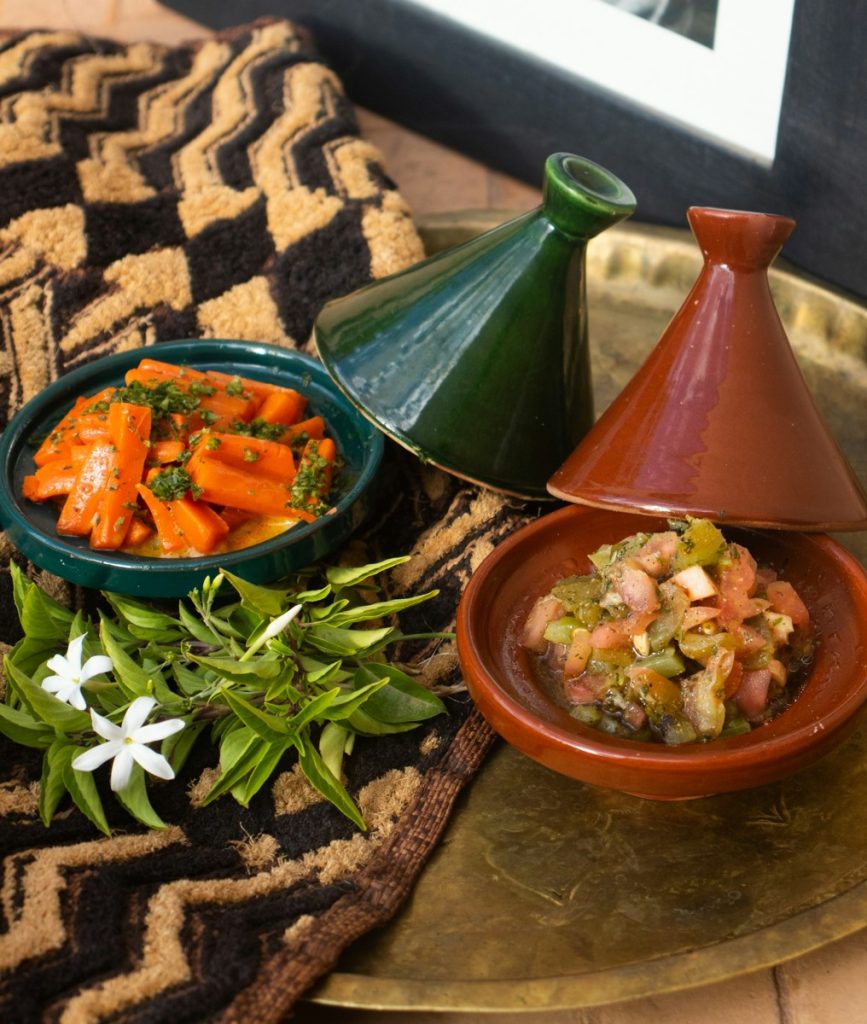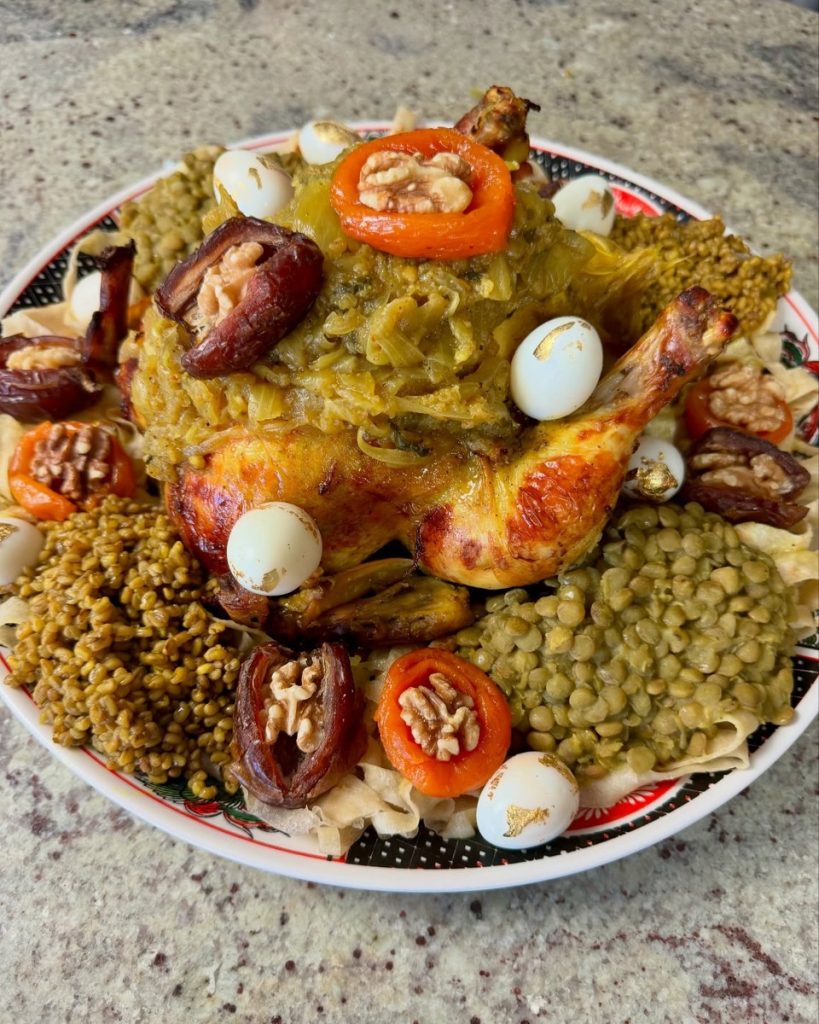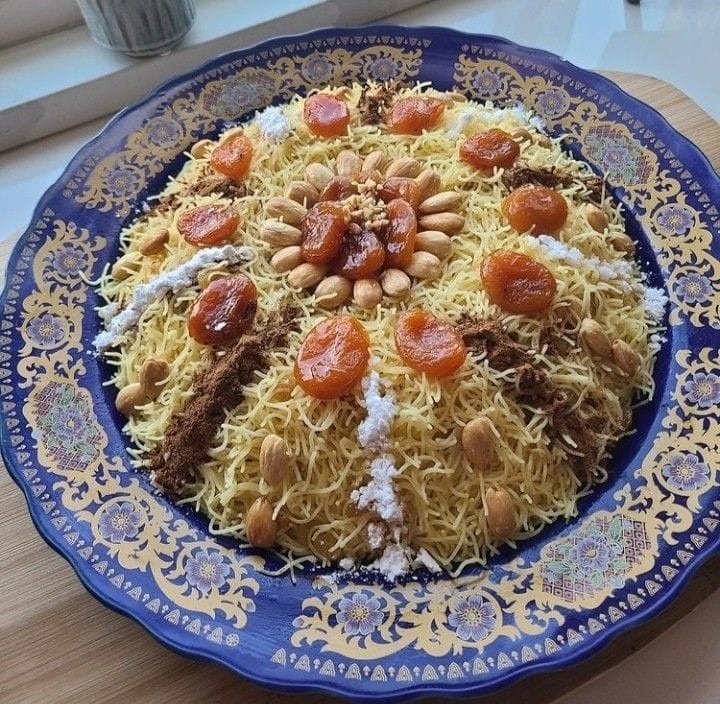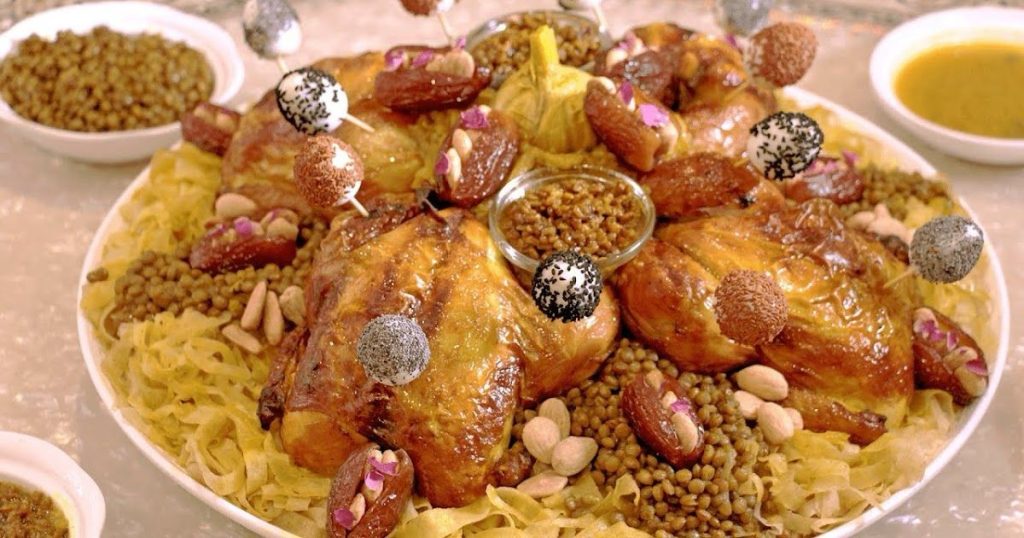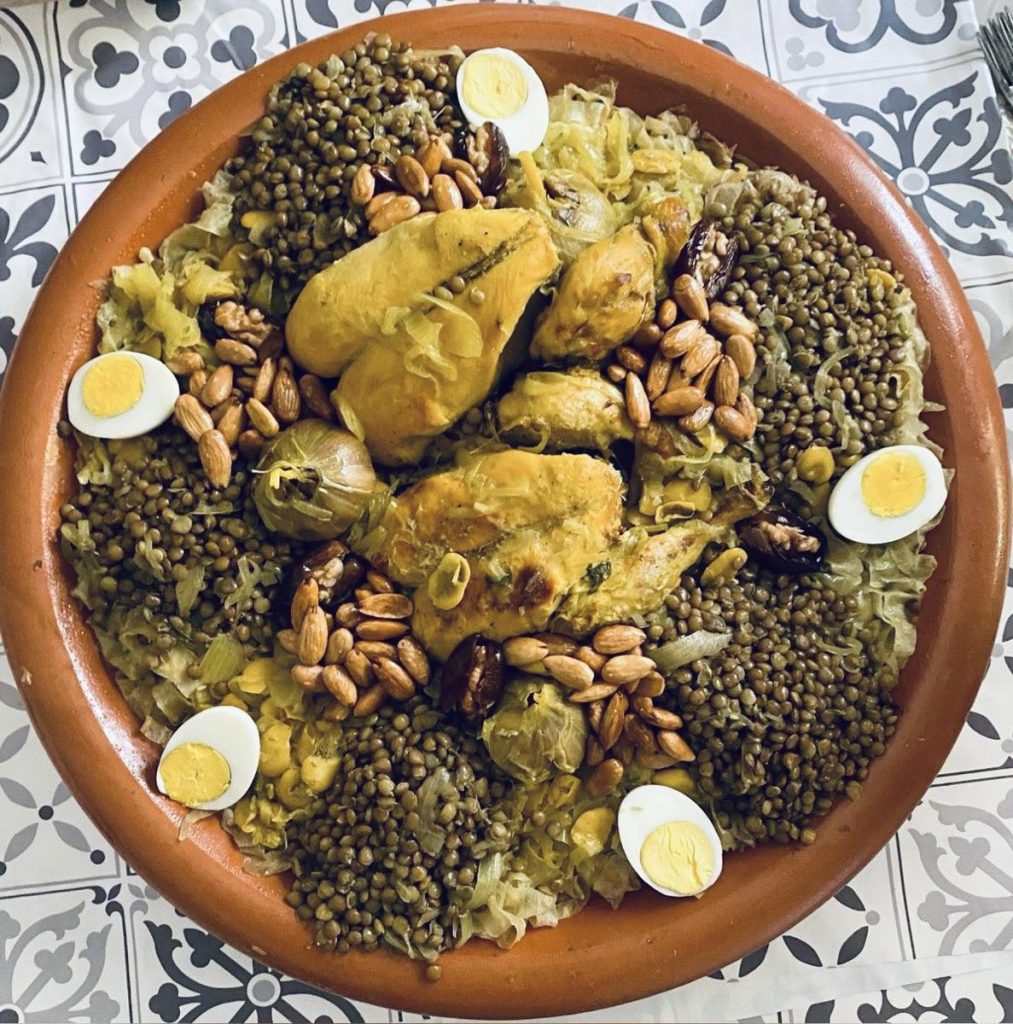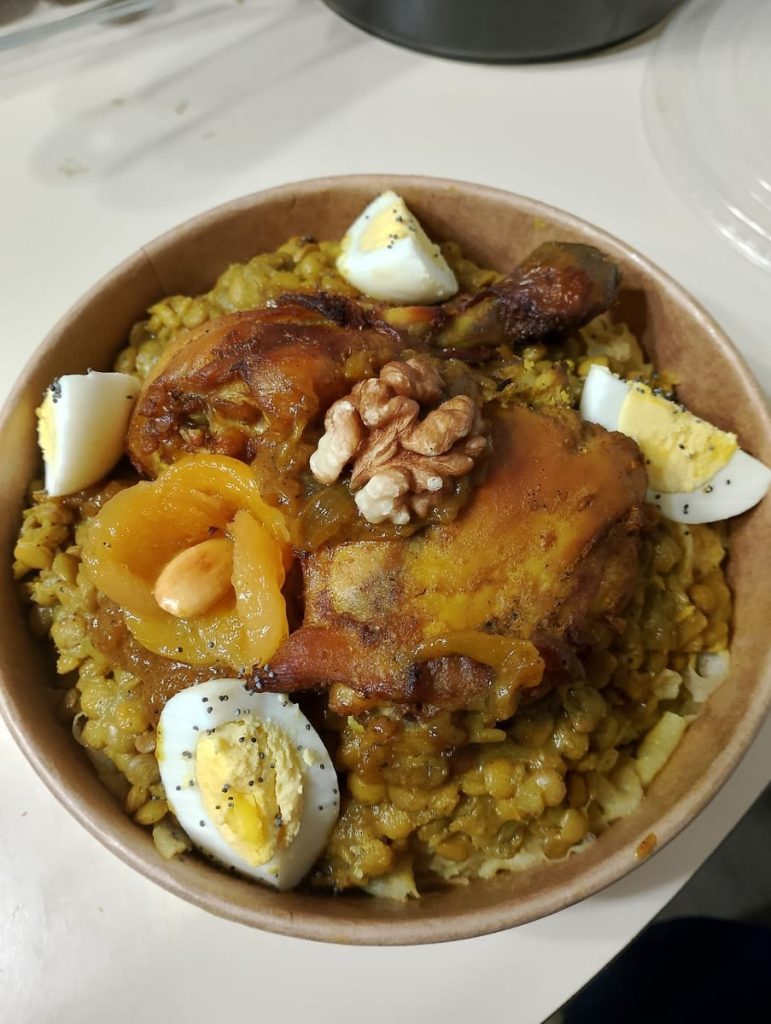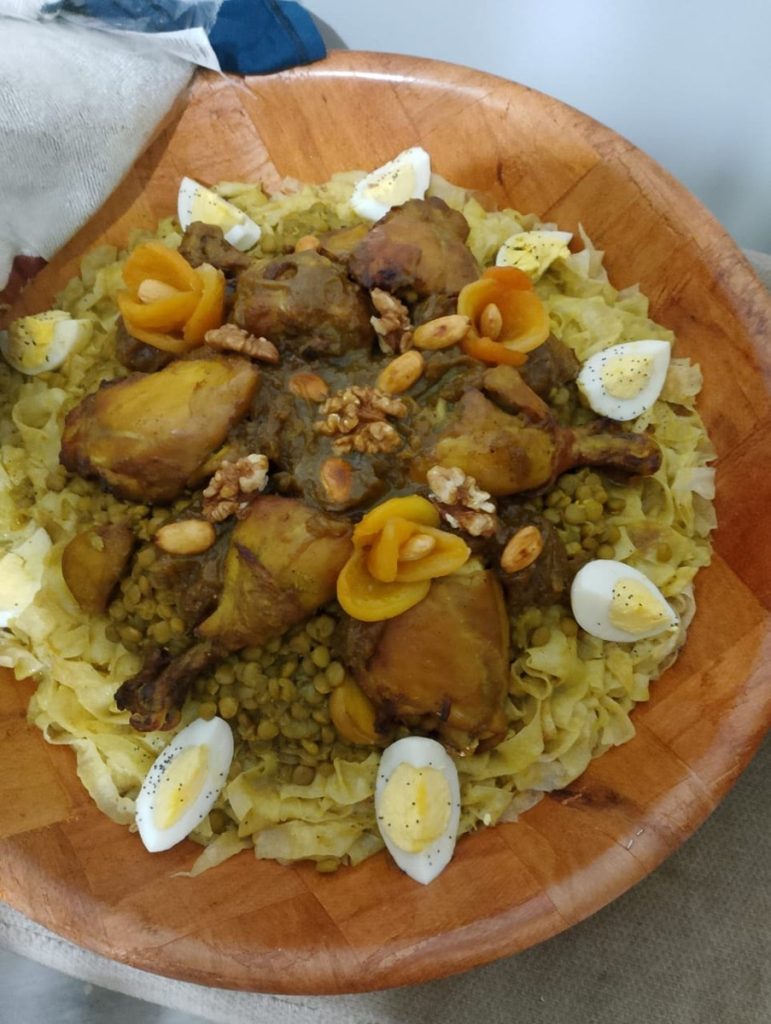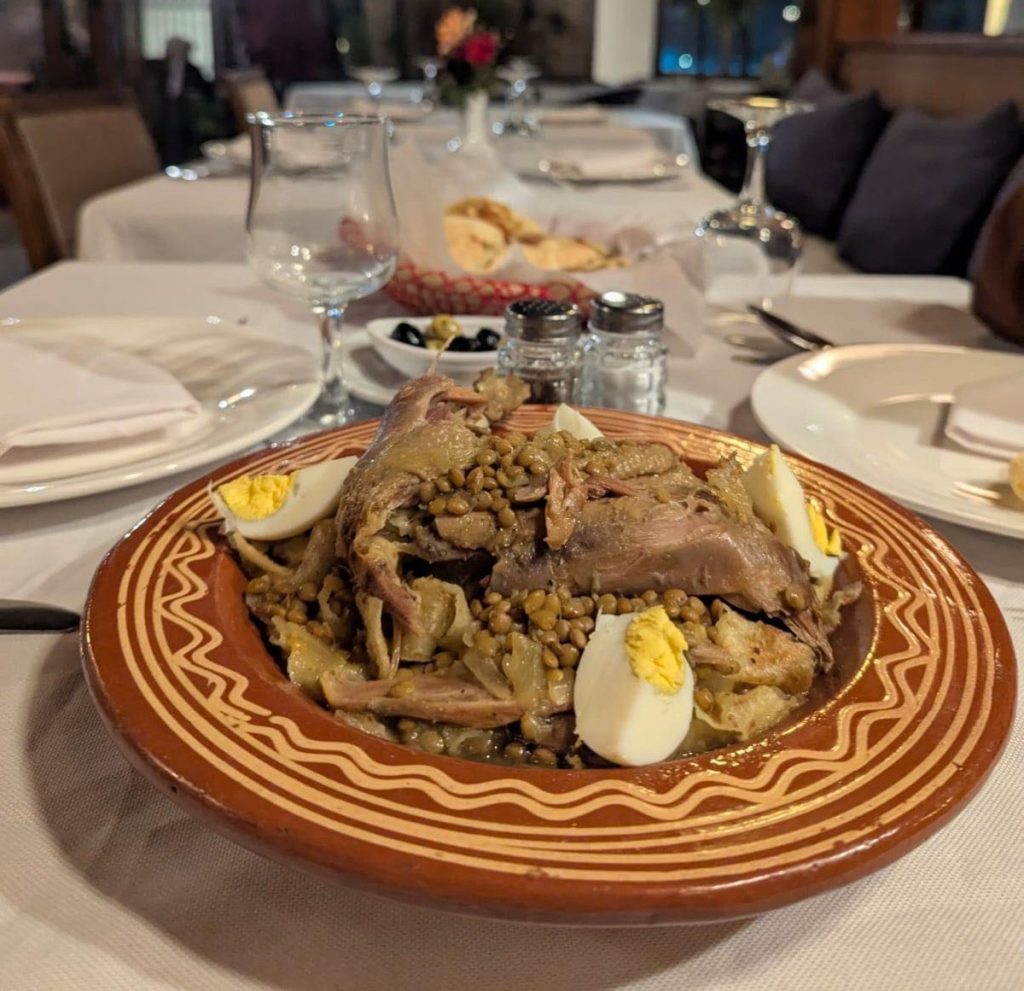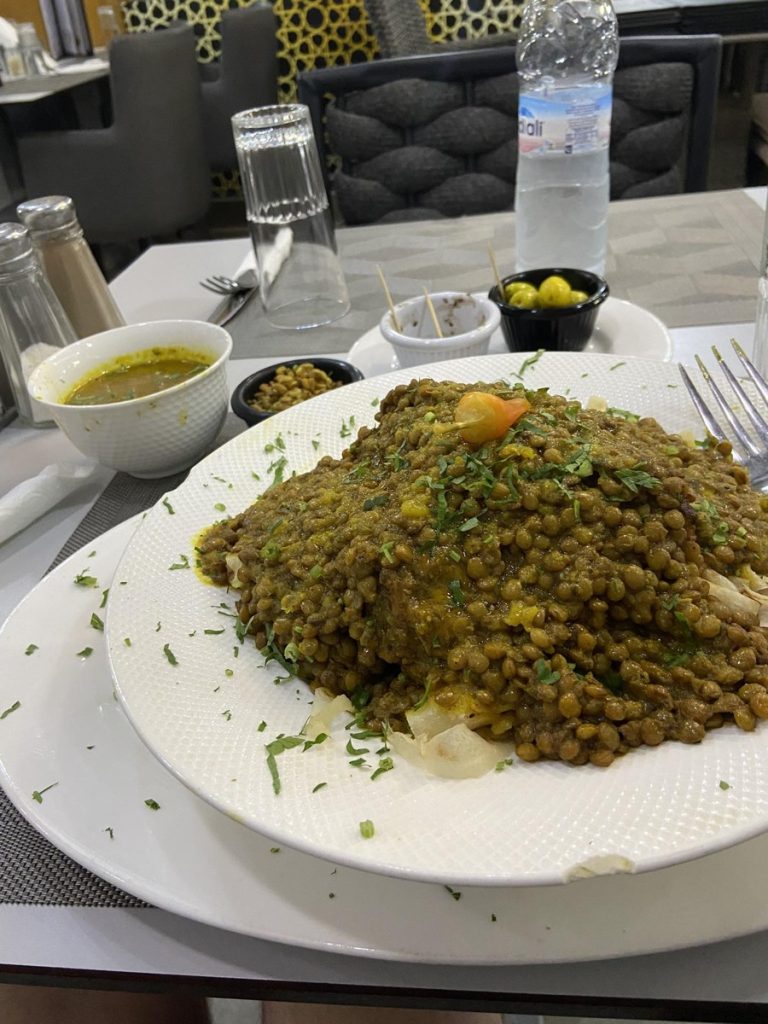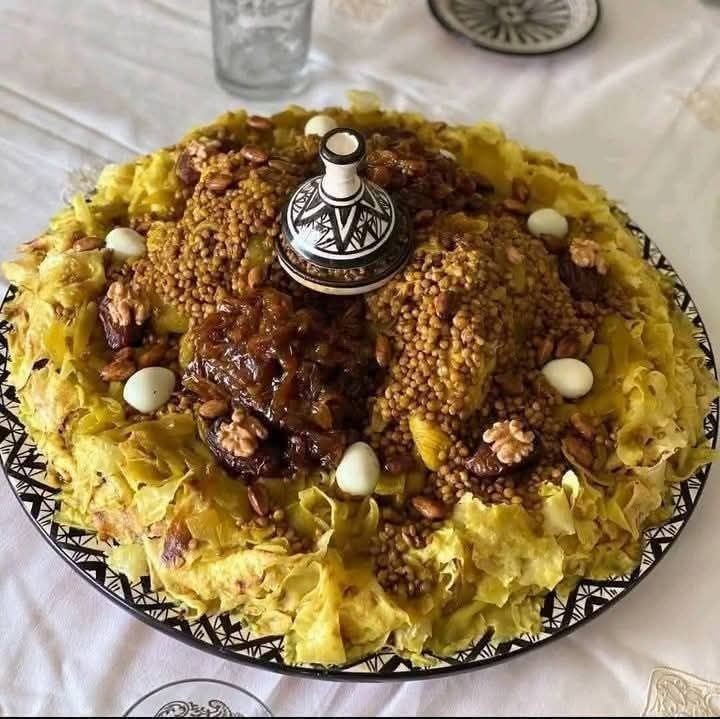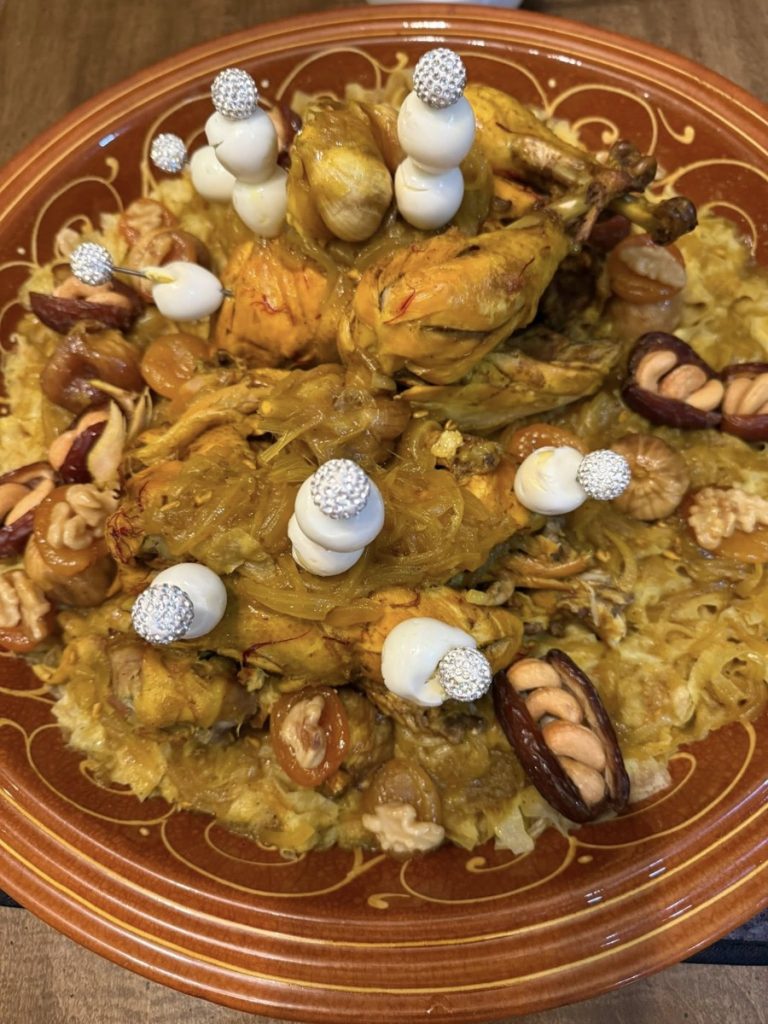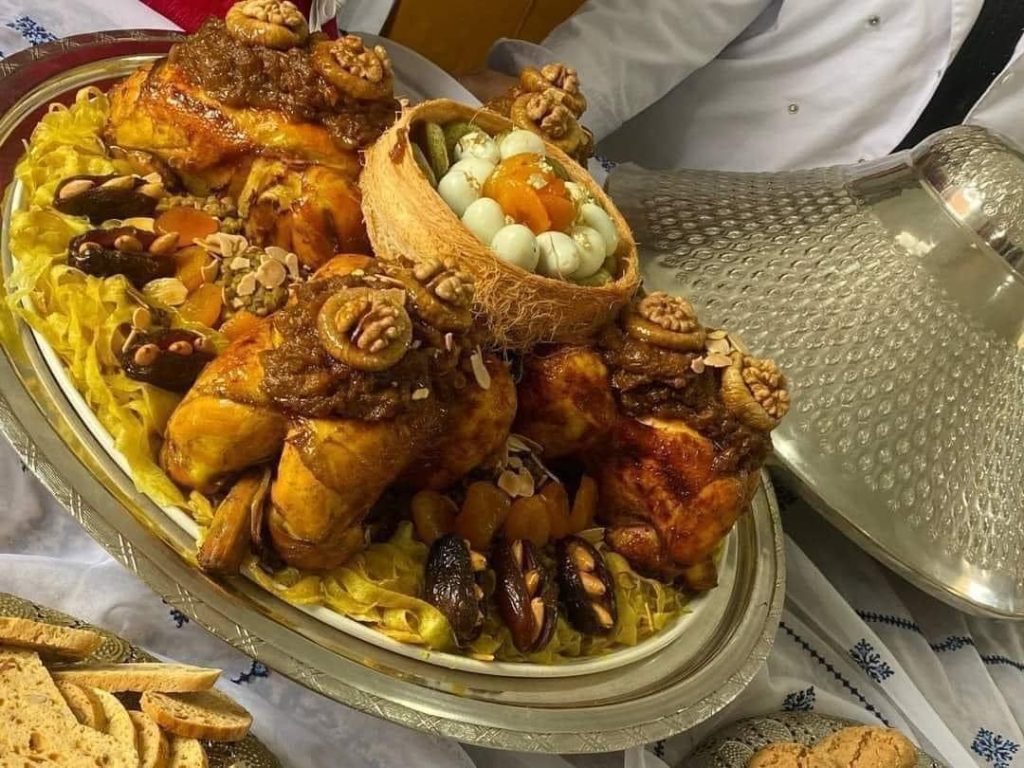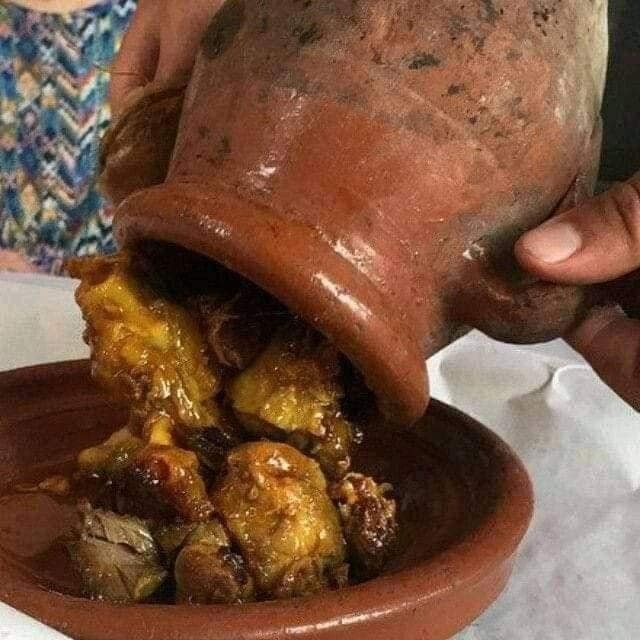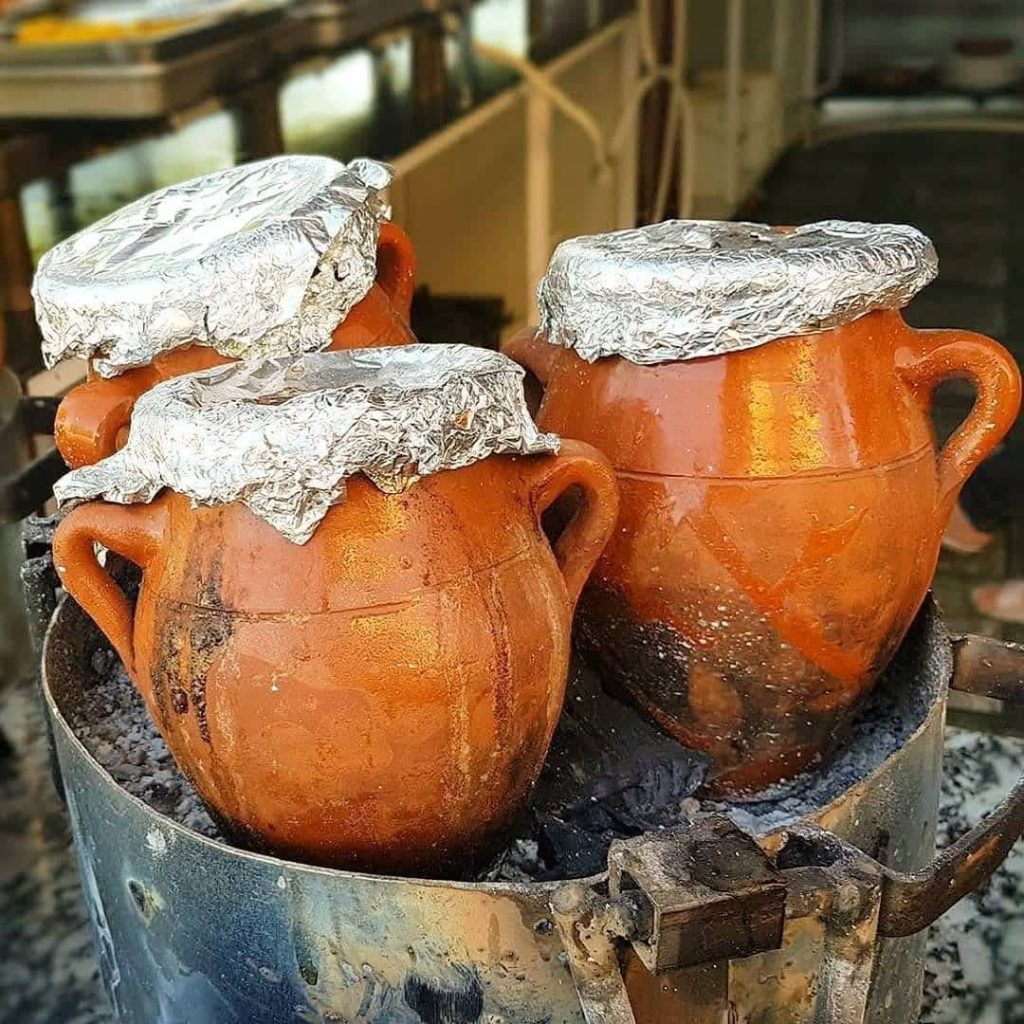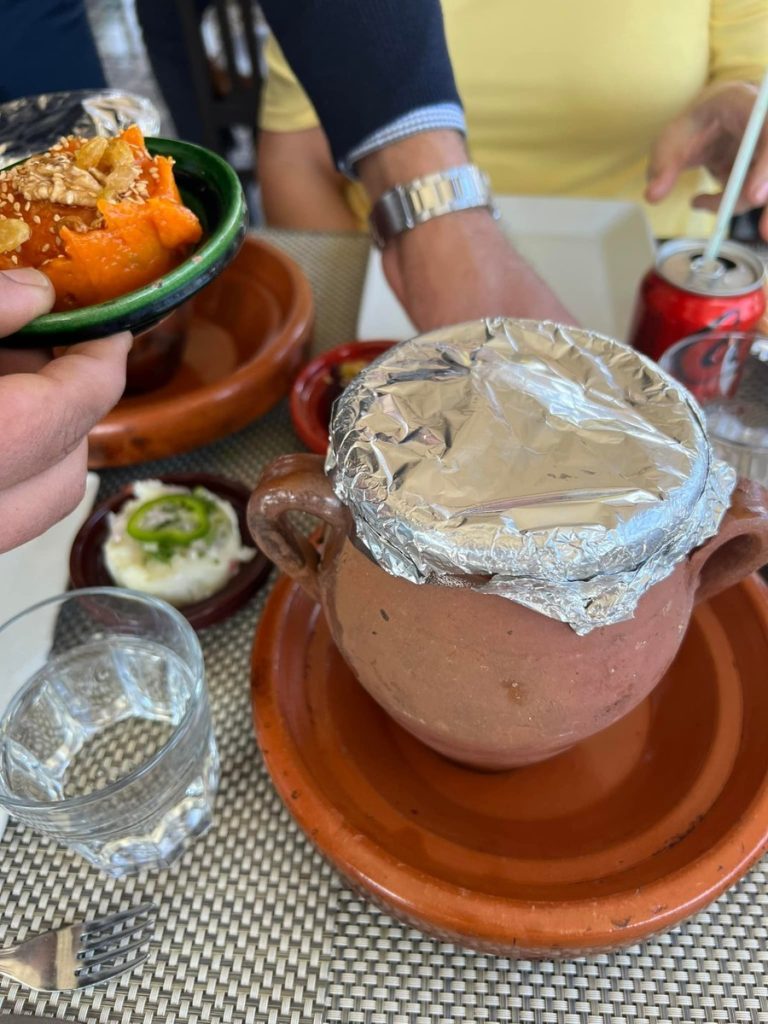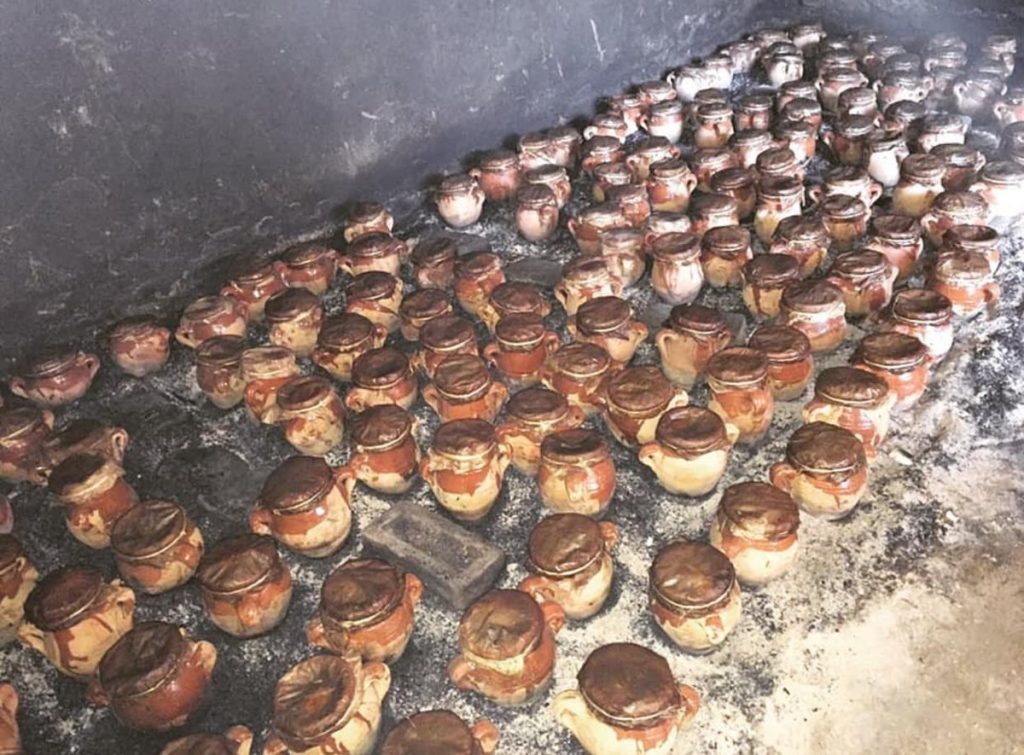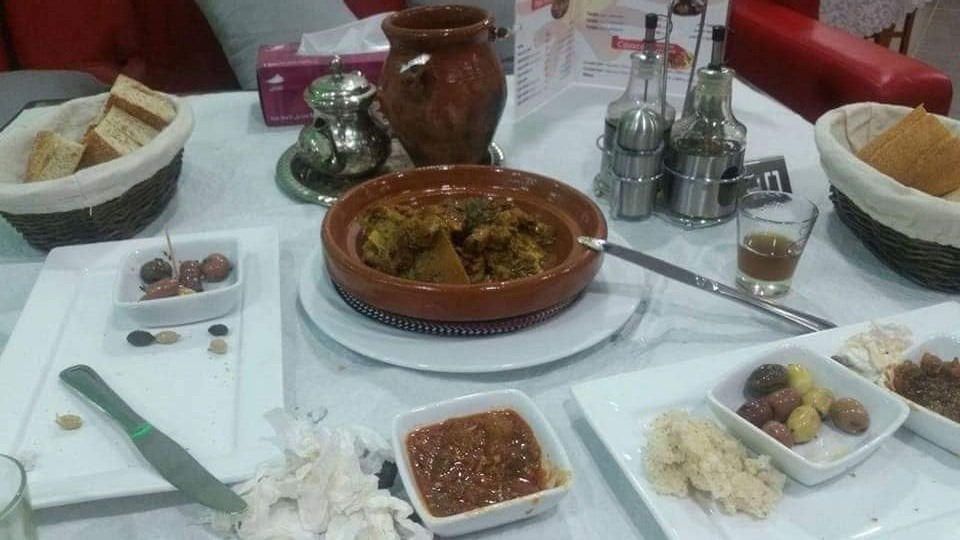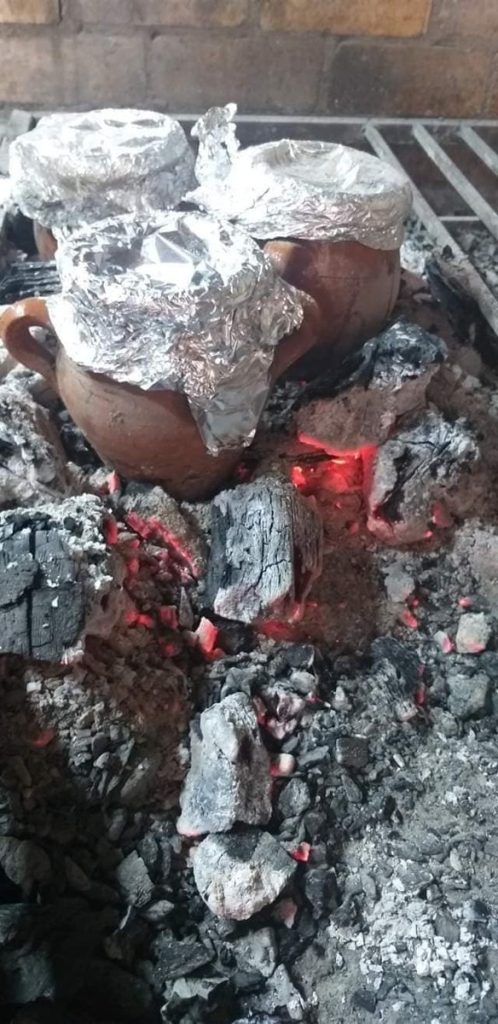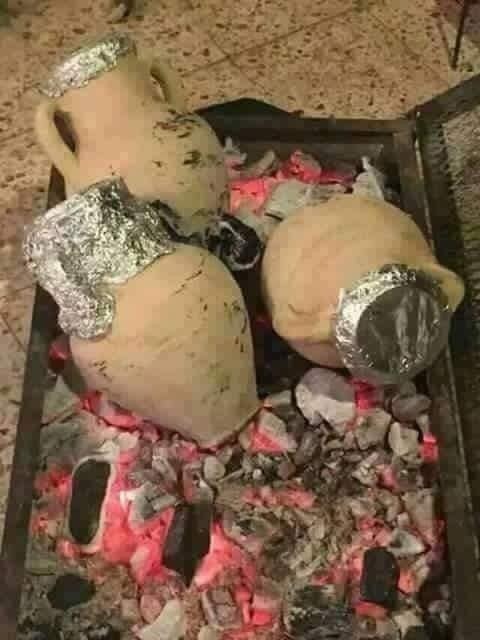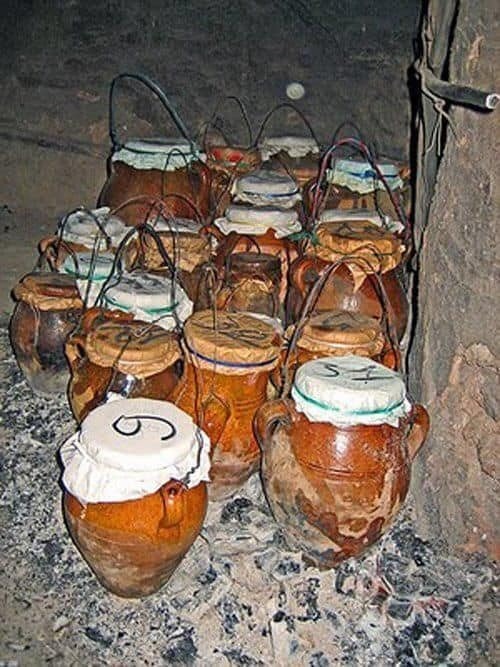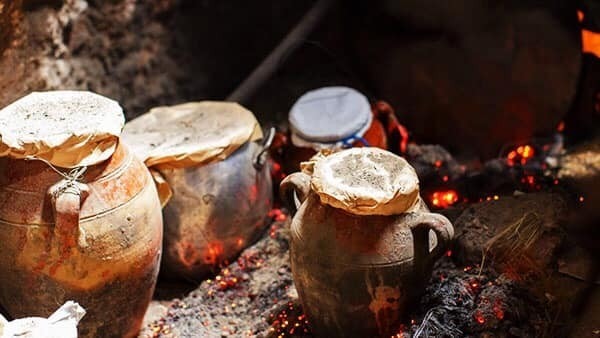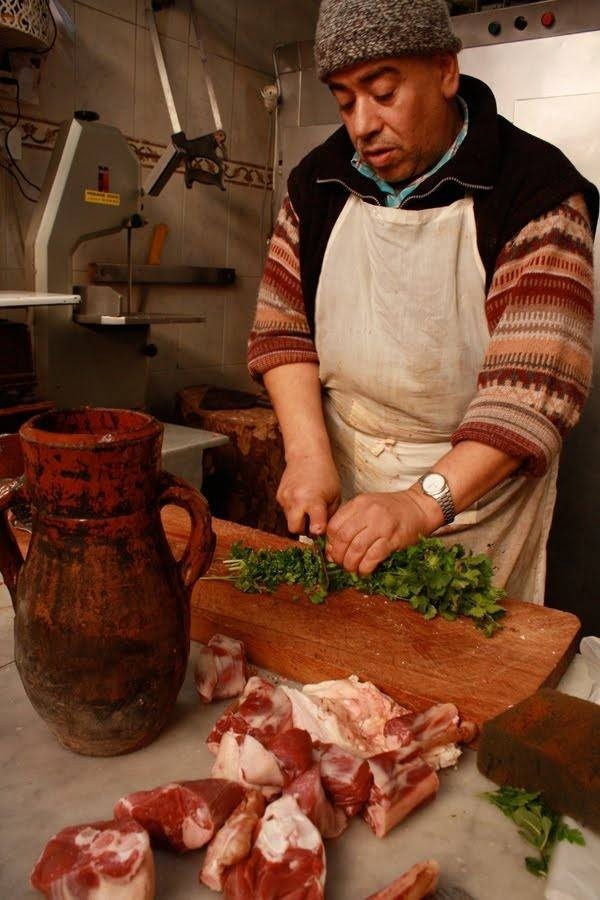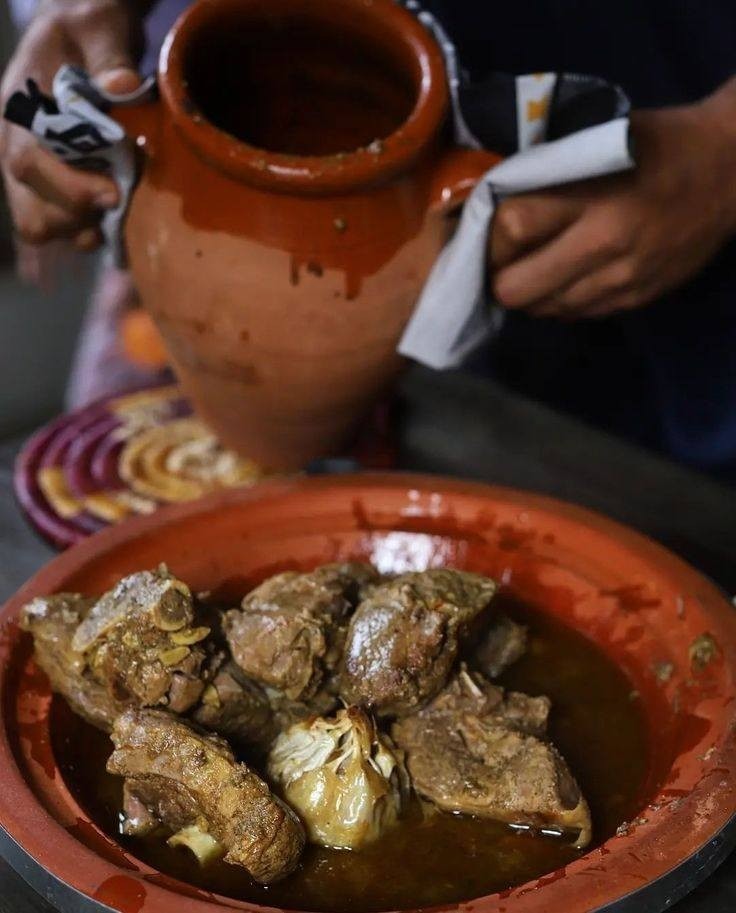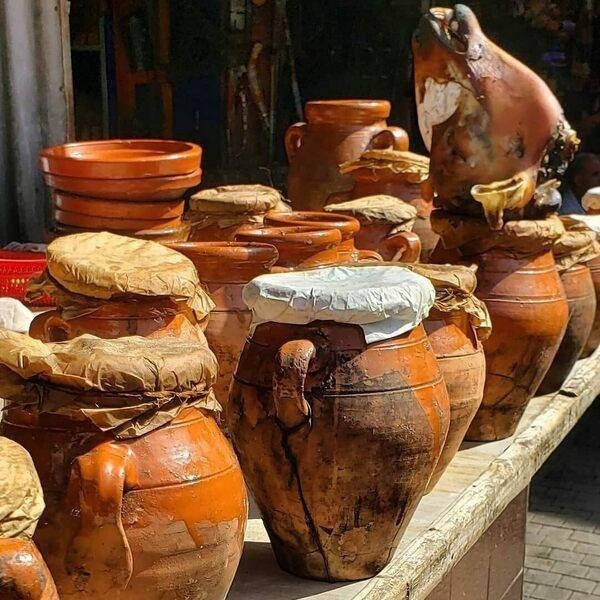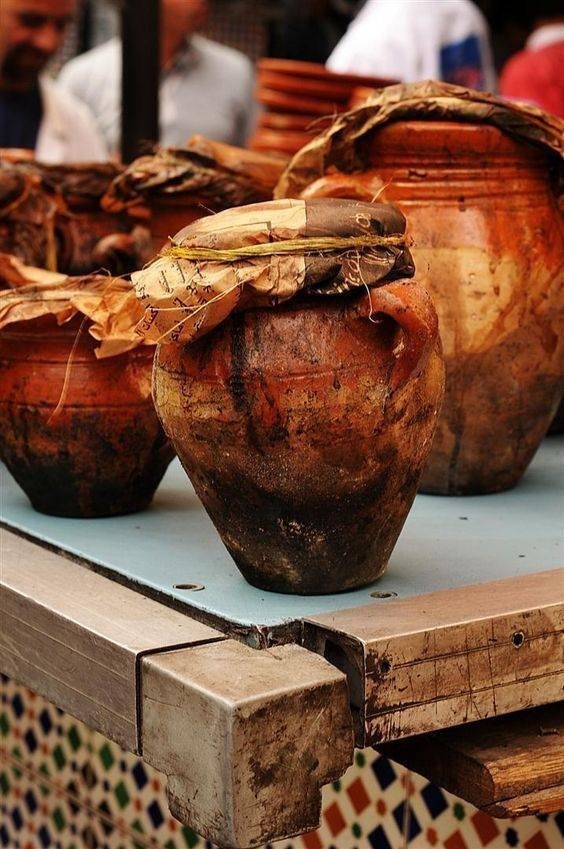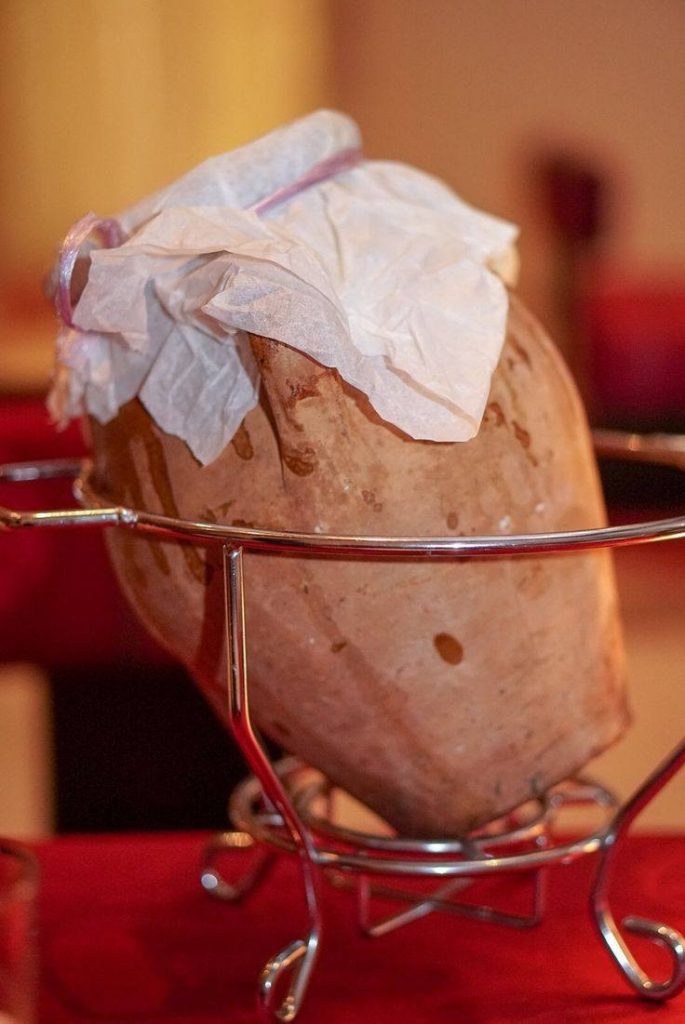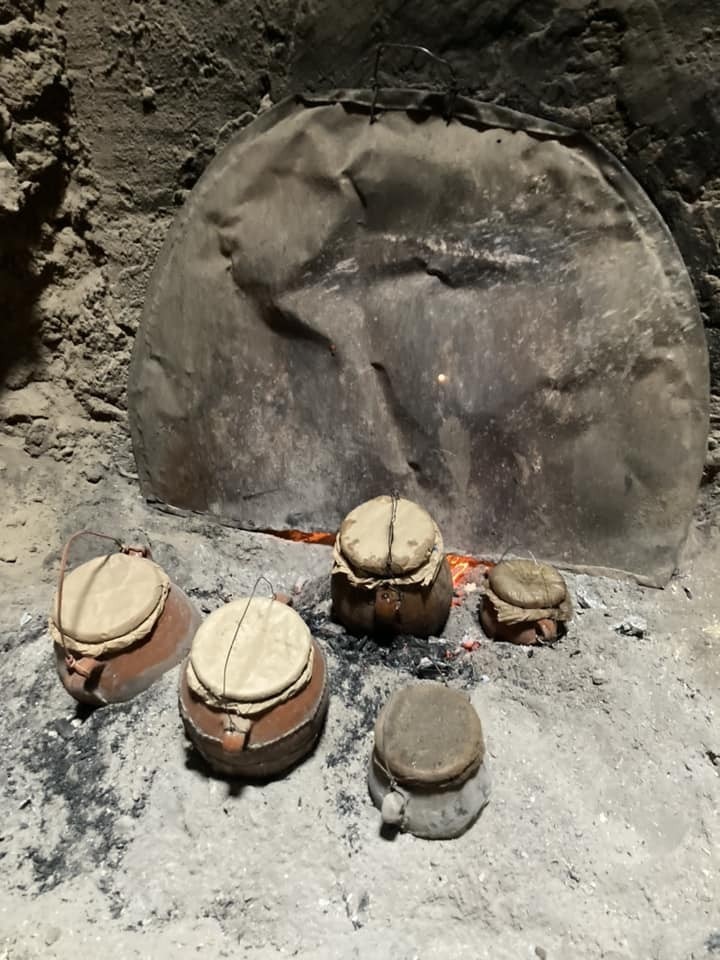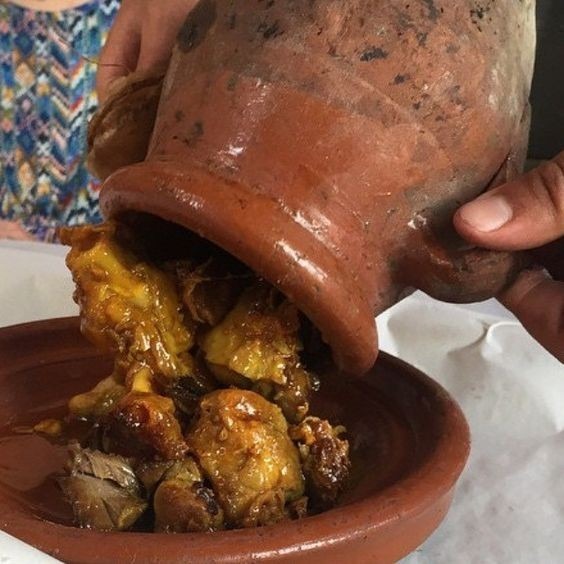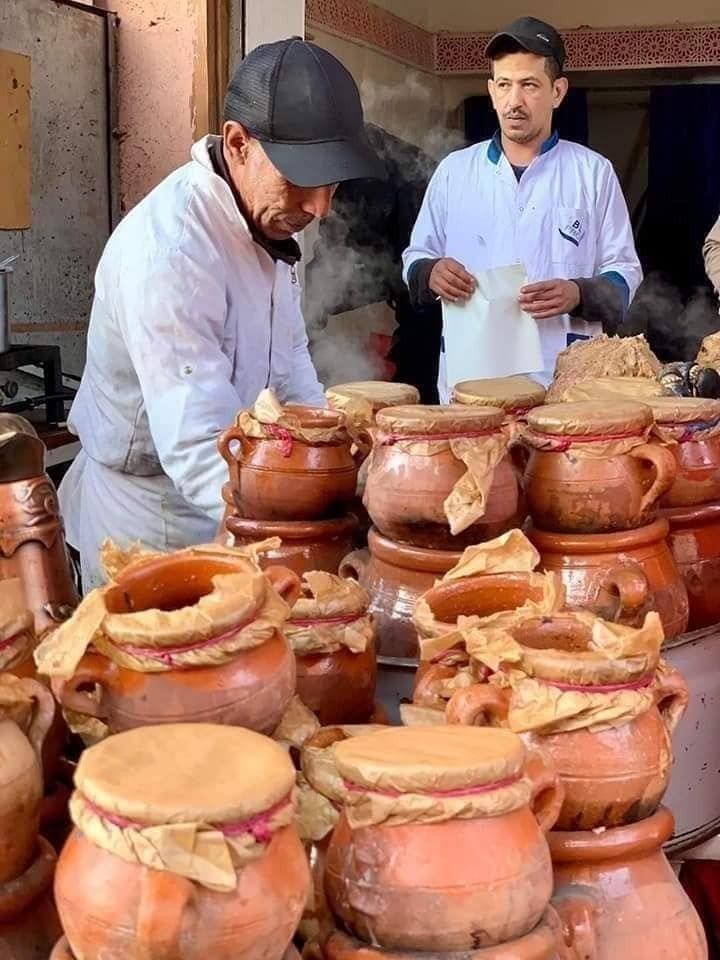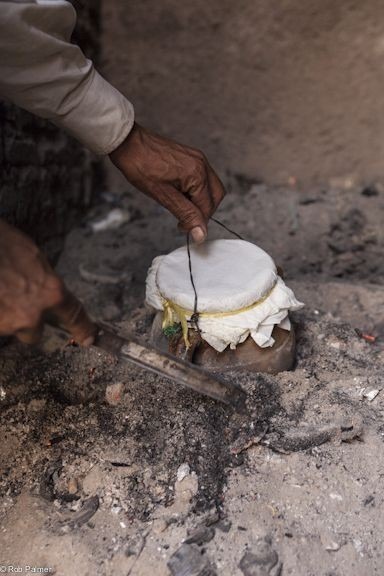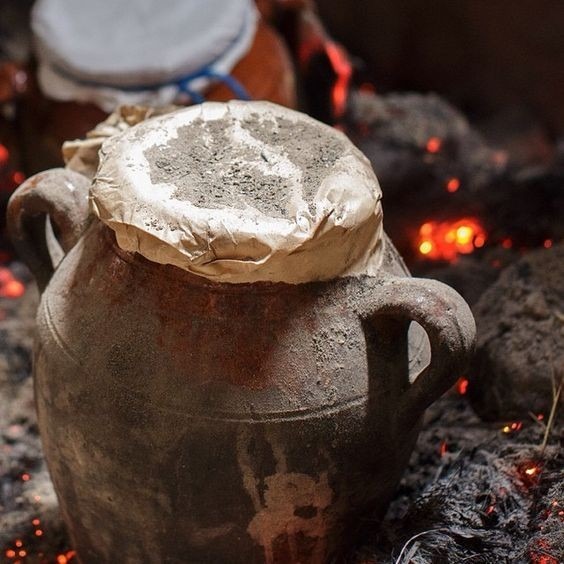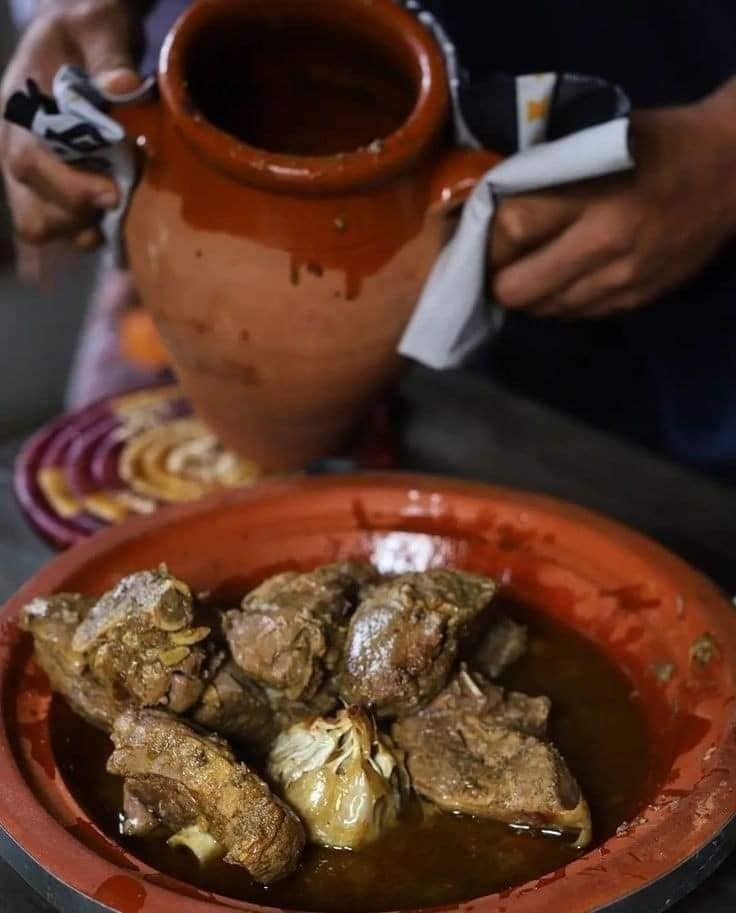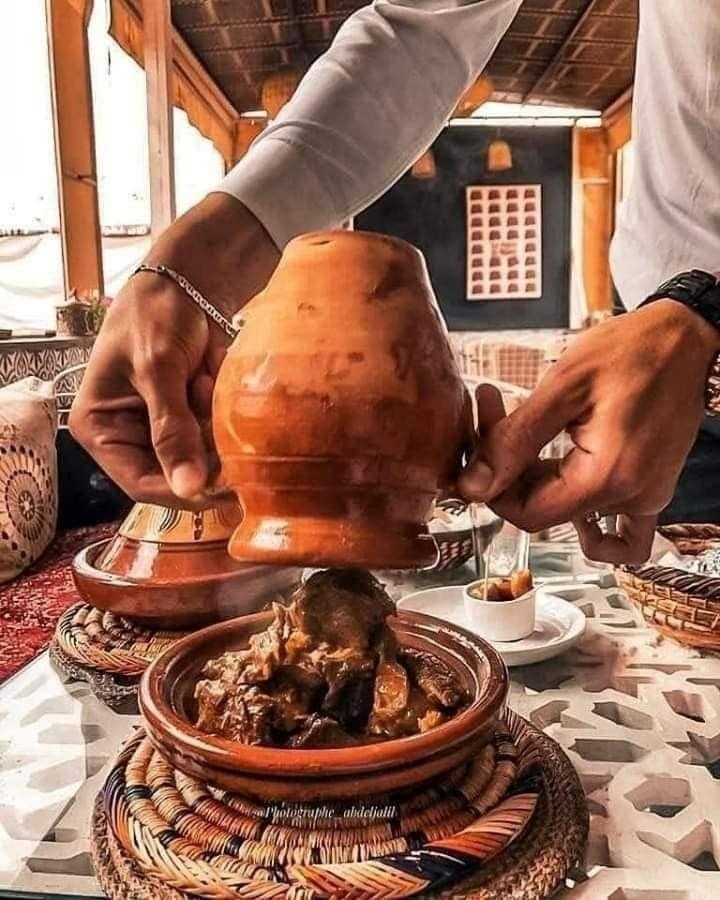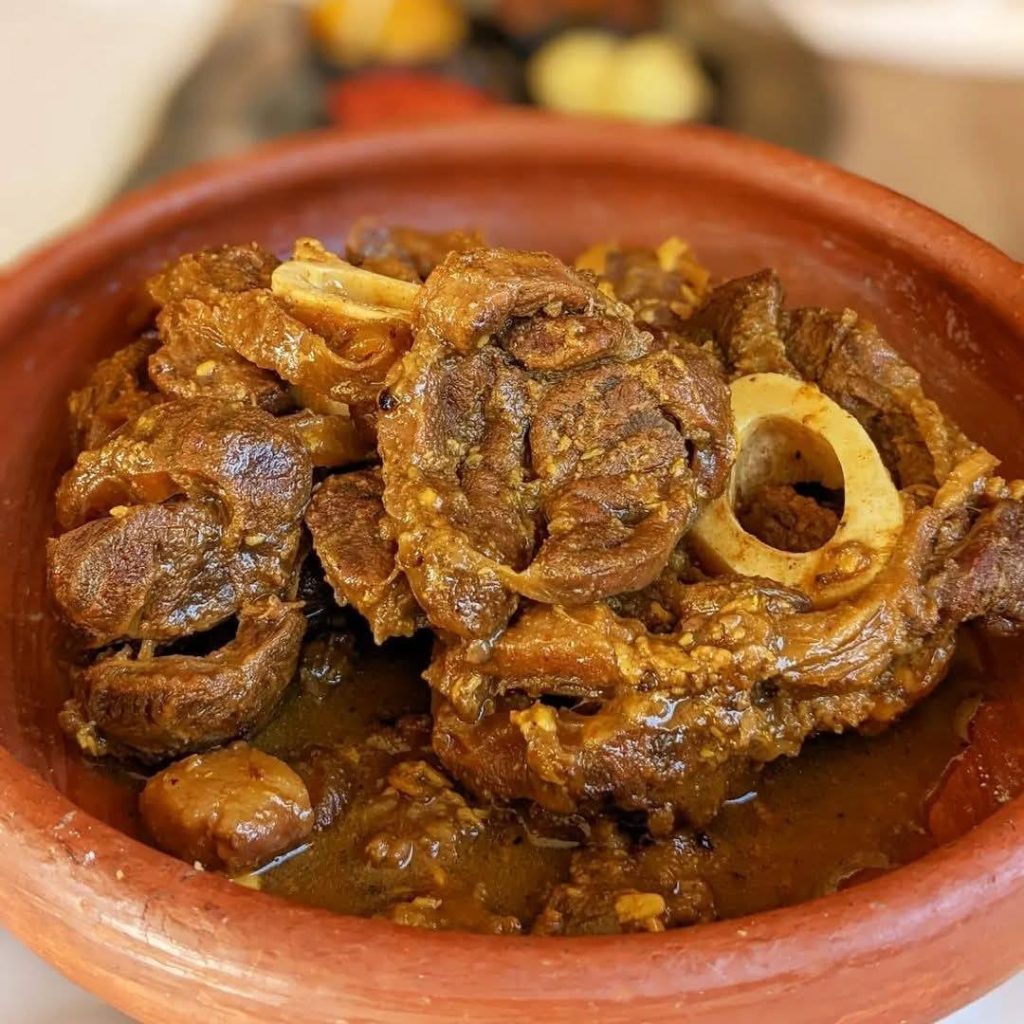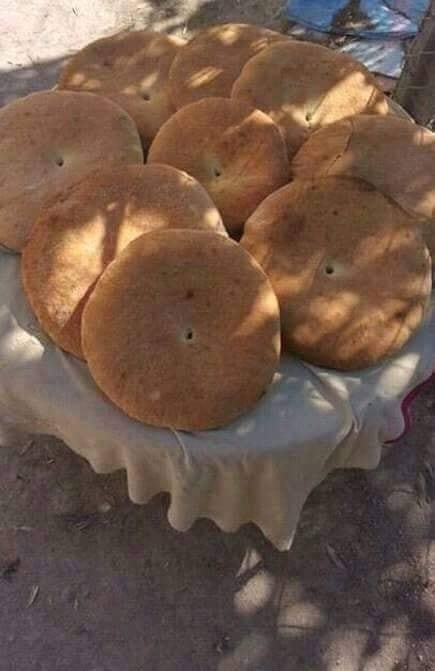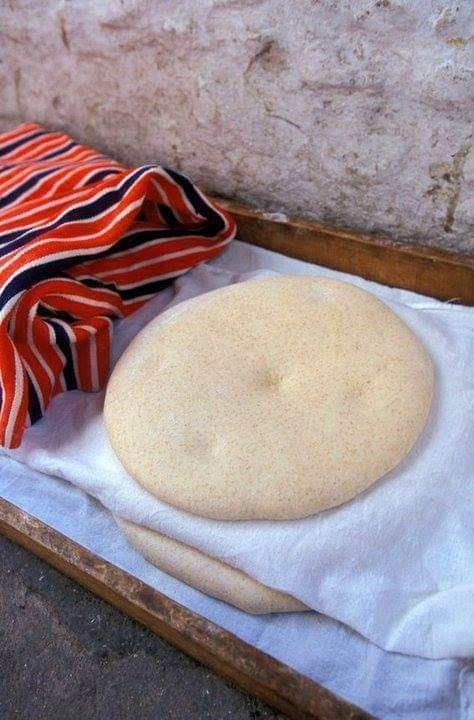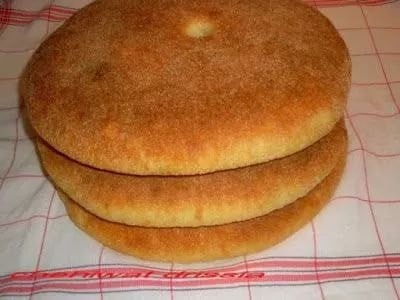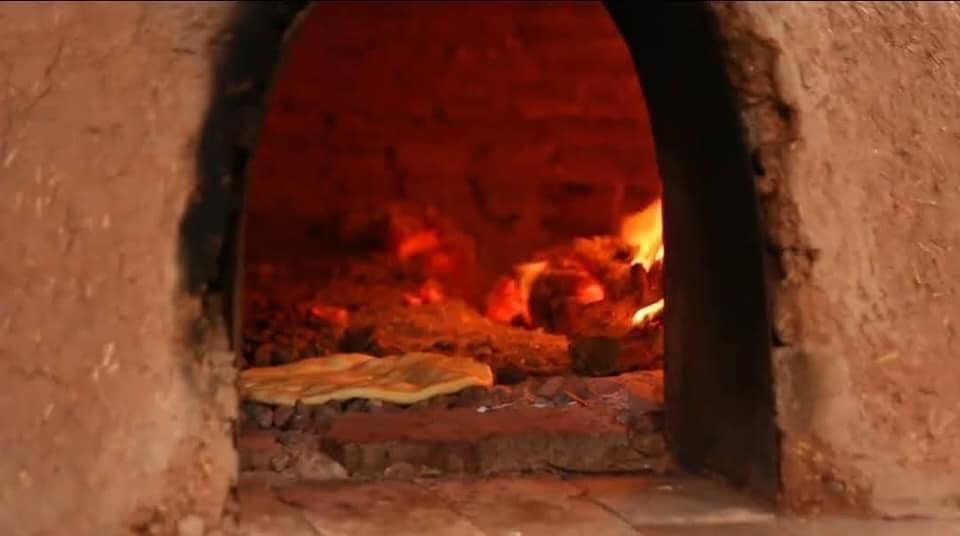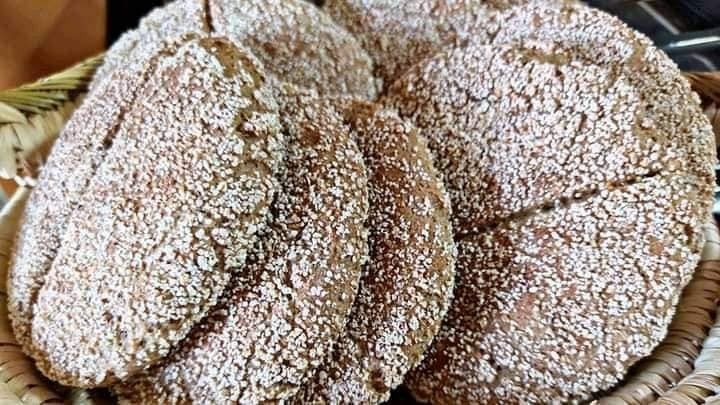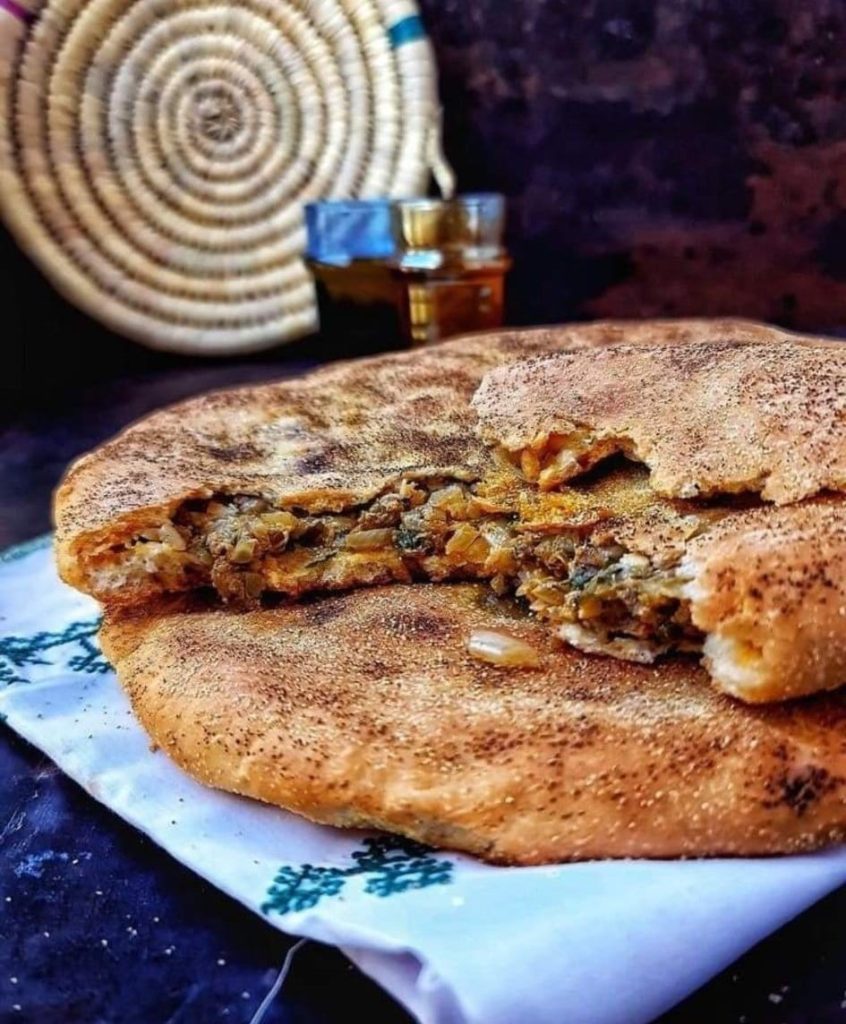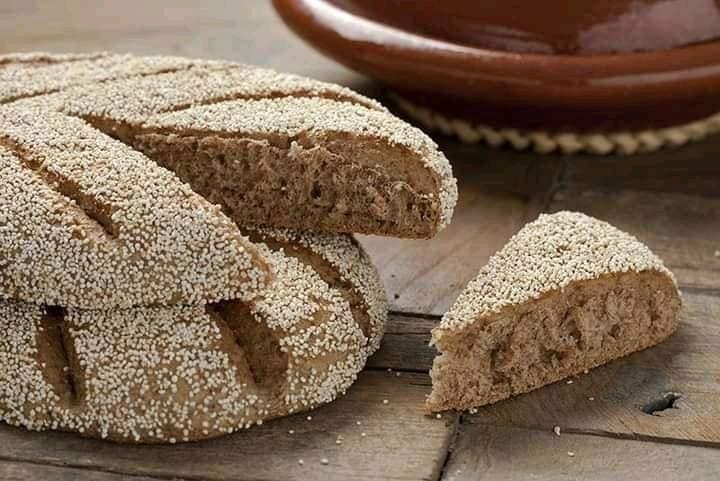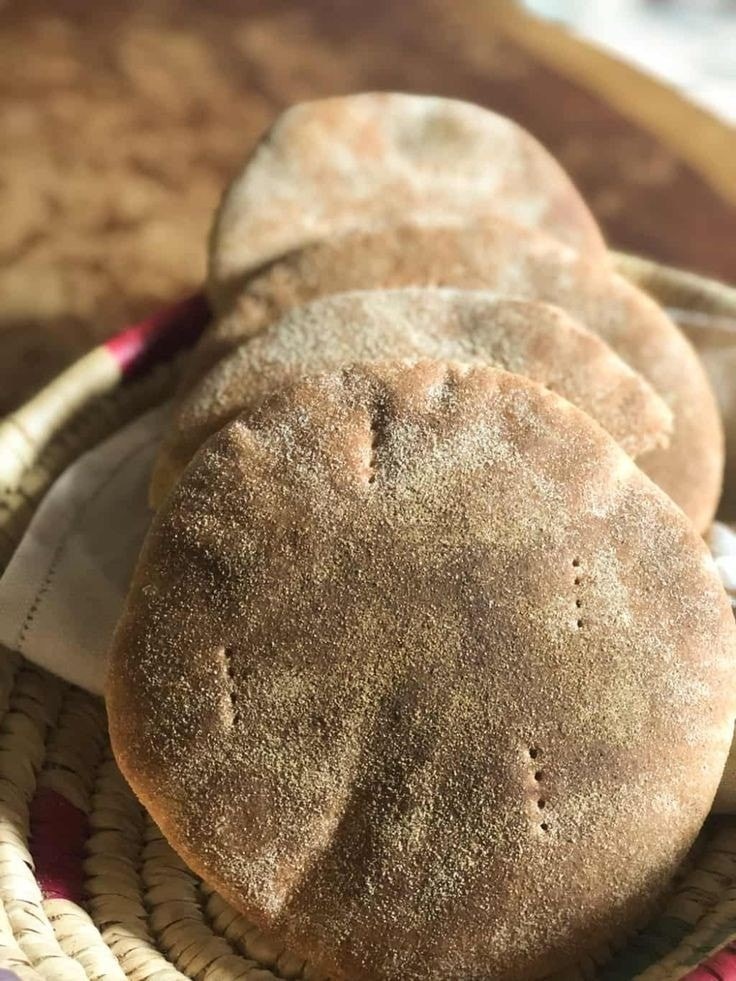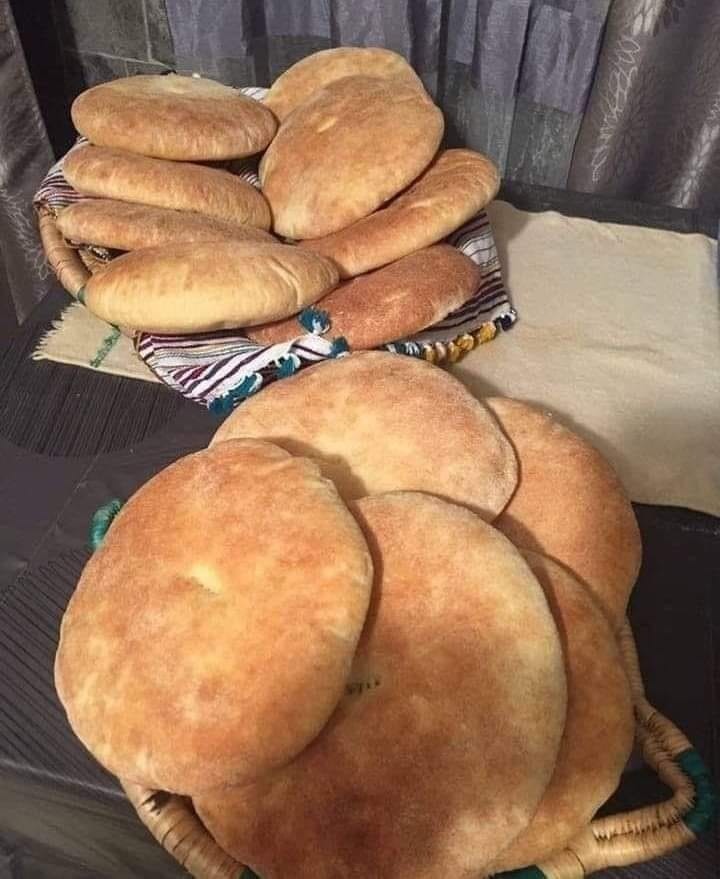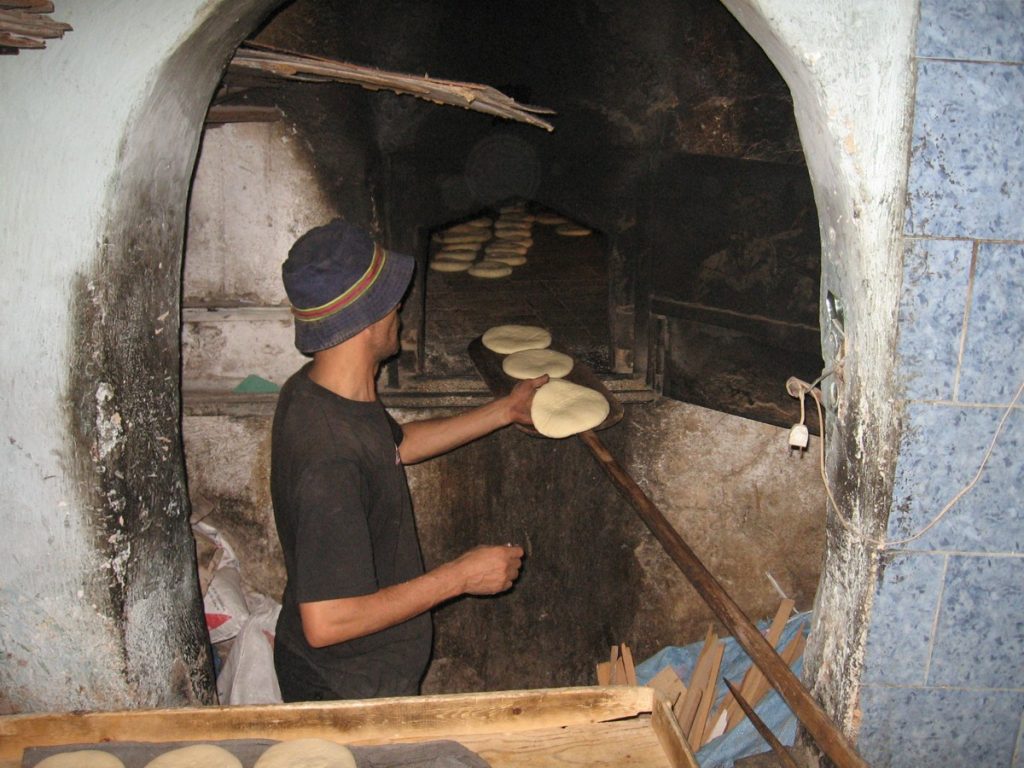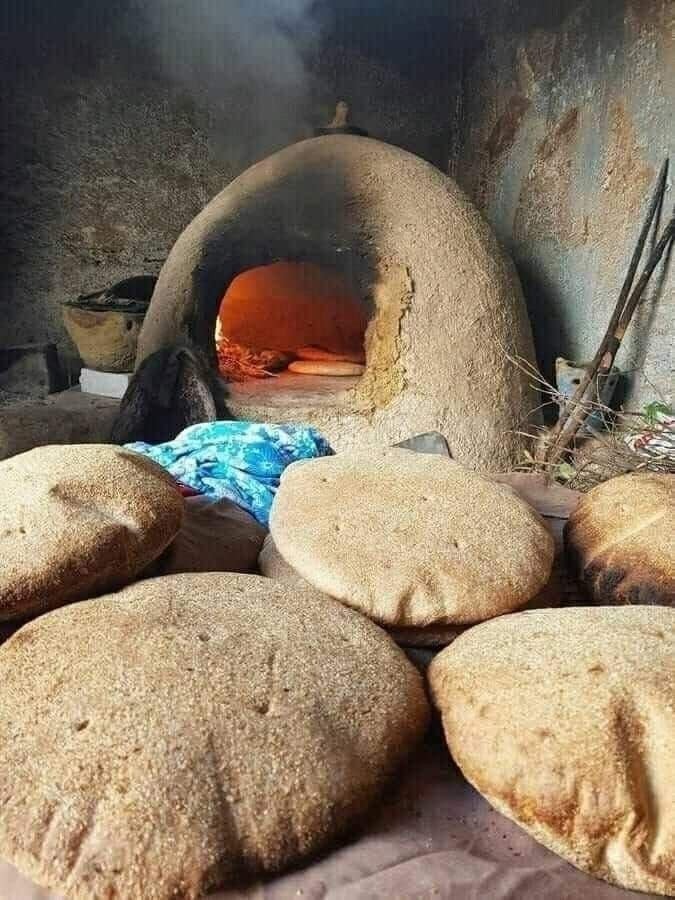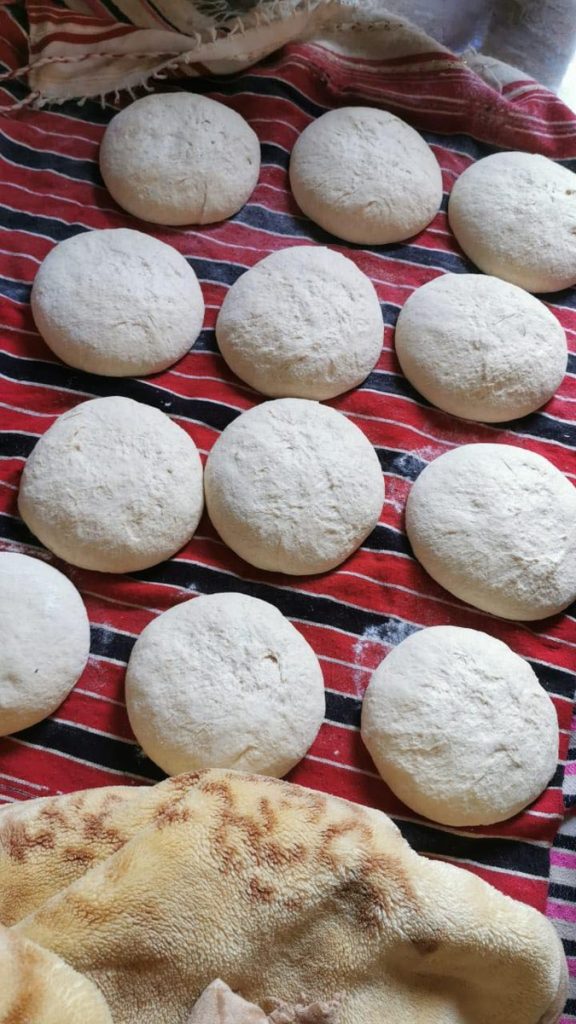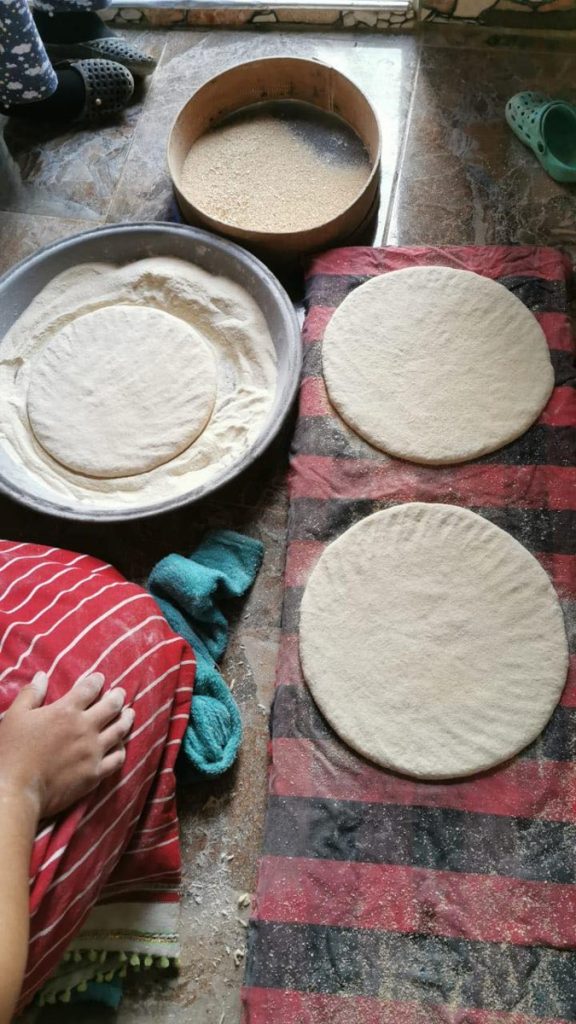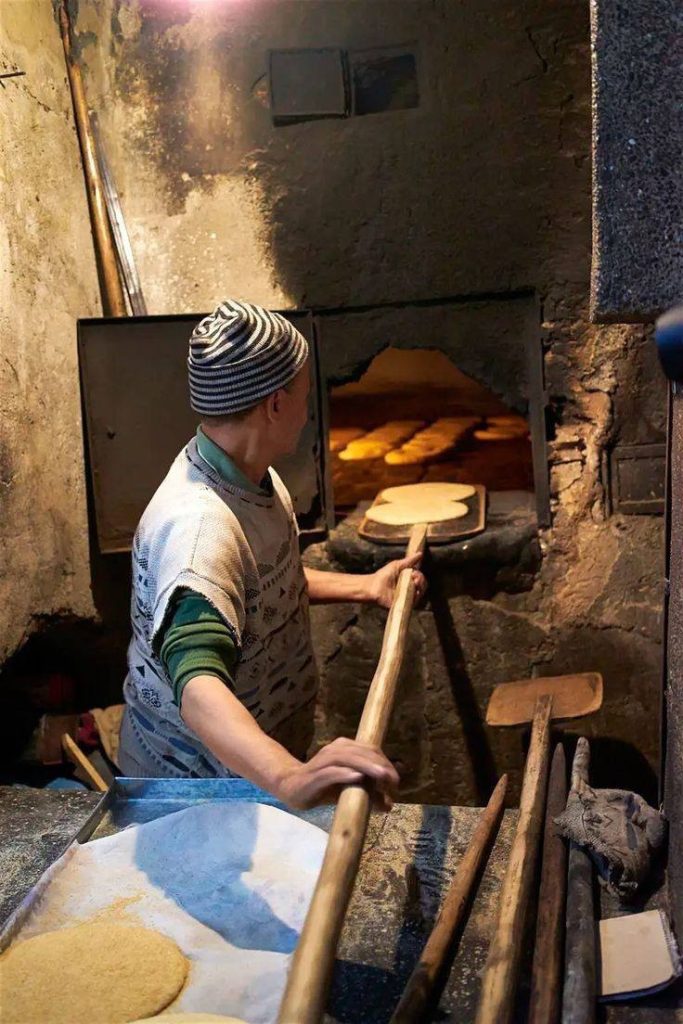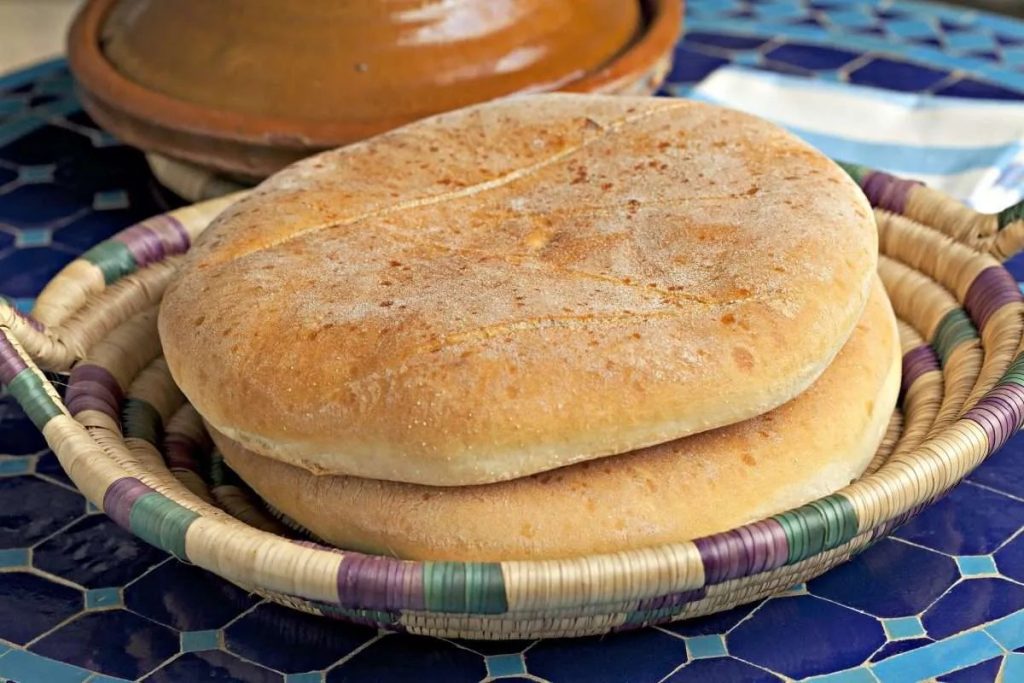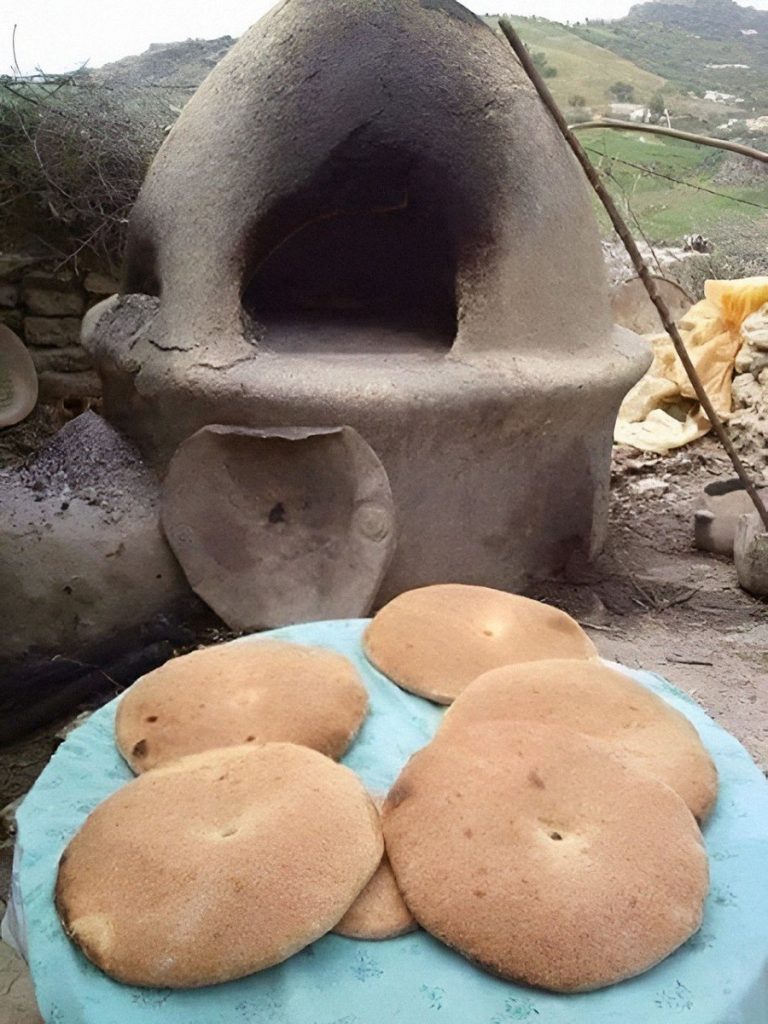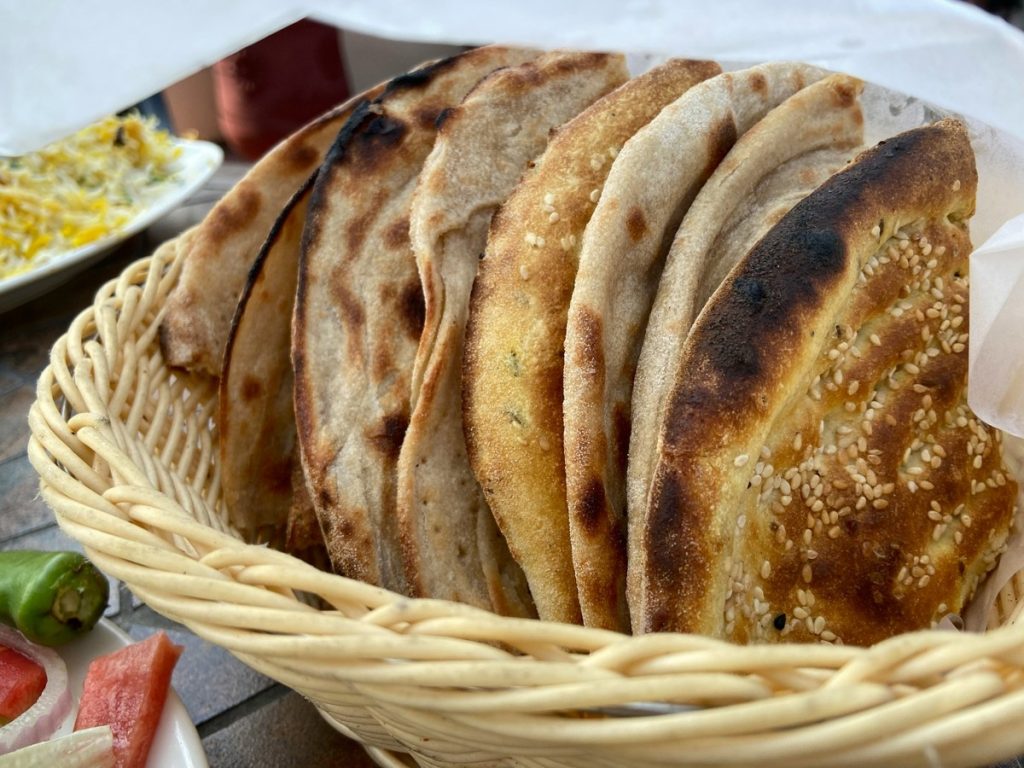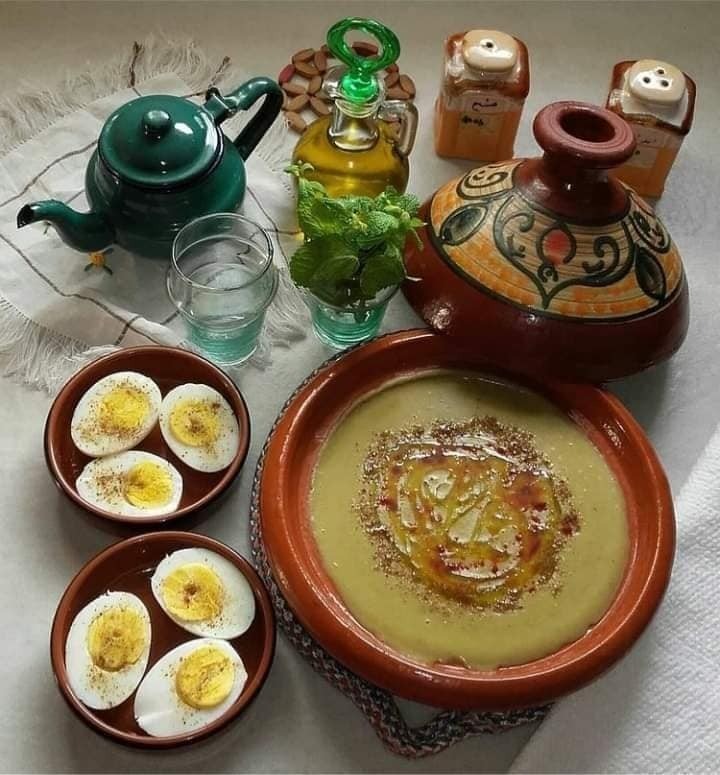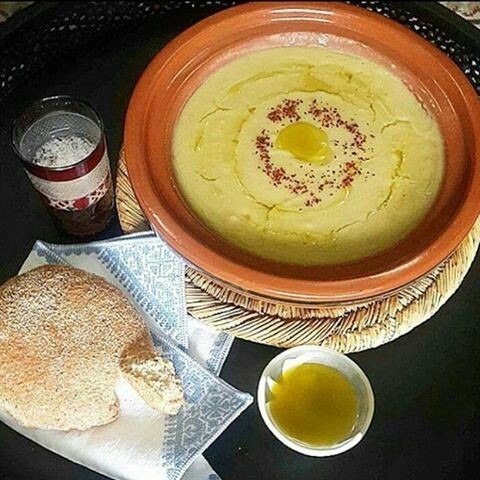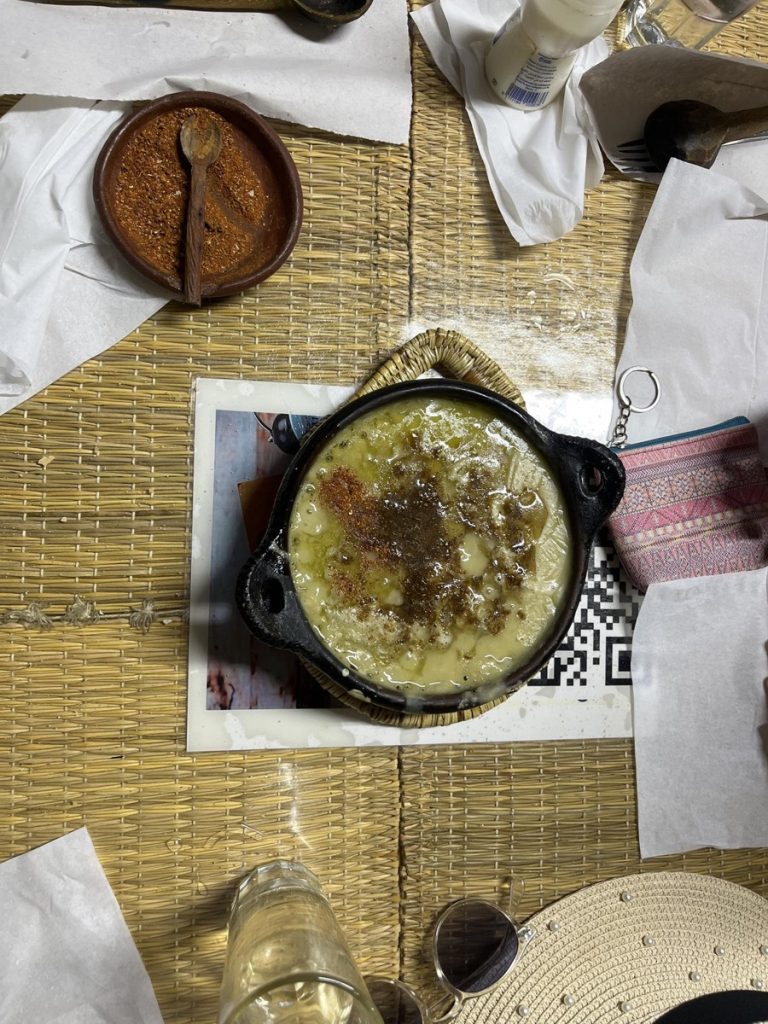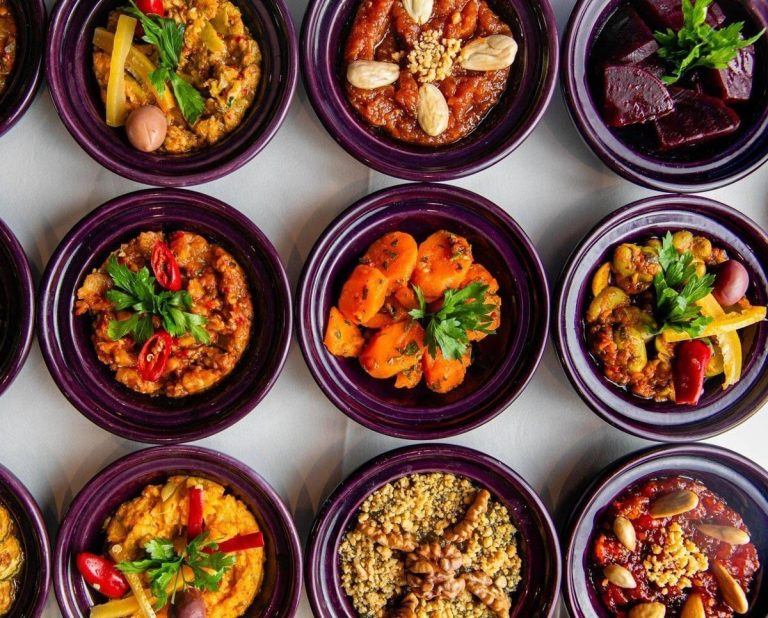Top 10 Traditional Moroccan Dishes to Try
Top 10 Traditional Moroccan Dishes to Try—it’s truly challenging to know where to start. Standing in the medina of Marrakech last Thursday morning, watching steam rise from a dozen tagines while the call to prayer echoed off ancient walls, I realized something. Morocco doesn’t just feed you. It transforms you, one incredible dish at a time.
I’ve spent nearly three decades exploring every corner of this country (yes, even that tiny village in the Middle Atlas that’s not on most maps), and I still get butterflies when I smell fresh Khobz baking in a communal oven. That’s the thing about Moroccan food—it never gets old. It never settles into a routine. There’s always another layer of flavor, another family recipe, another secret spice blend that makes you rethink everything you thought you knew.
My daughter asked me recently why I’m so obsessed with Moroccan cuisine. I told her it’s because every dish tells a story. The Berber shepherds created tanjia by slow-cooking meat in clay pots buried in hammam coals. The Andalusian refugees brought sophisticated pastry techniques to the region. Sub-Saharan caravans traded gold for spices. It’s all there, simmering in the pot.
Understanding Moroccan Culinary Heritage
Morocco sits at this incredible crossroads—Africa, Europe, the Mediterranean, and the Arab world—and you taste all of it. Expelled from Spain in 1492, the Moors brought with them more than just recipes. They brought centuries of culinary sophistication. Then you’ve got Berber traditions going back thousands of years, Arab influences, French colonial touches (though we’ve made them distinctly ours), and even Portuguese elements along the coast.
What makes Moroccan cuisine genuinely unique? Indeed, it’s the unique combinations of spices. But it’s more than that. It’s the patience. The process of making a proper tagine requires hours, not minutes. The ritual of preparing couscous on Fridays involves rolling those tiny grains by hand, despite the availability of premade versions. My mother used to say that rushing Moroccan food is like rushing prayer—technically possible, but you miss the entire point.
Traditional Moroccan cooking relies on preserved ingredients that were essential before refrigeration. Essential ingredients in traditional Moroccan cooking include preserved lemons, khliaa (that incredible dried meat), and smen (fermented butter that smells absolutely wild but tastes like heaven). These weren’t just preservation methods—they were flavor innovations that still define our cuisine today.
The tagine itself (the conical clay pot, not just the dish) is engineering genius. That cone shape traps steam, condenses it, and rains it back down on the ingredients. Self-basting. When I demonstrate this dish to tourists, they’re always amazed. “You mean it doesn’t need any added liquid?” Well… not much, anyway.
1. The Magnificent Tagine—Morocco’s Signature Dish
Tagine is such a fascinating dish that I could write entire books about it, and indeed, many people have. But let me tell you what the guidebooks won’t. The best tagine I ever tasted wasn’t in a fancy restaurant. It was in a dirt-floor kitchen in the Anti-Atlas, made by a grandmother who’d probably never left her village. She used lamb from her sheep, vegetables from her garden, and a spice blend her grandmother taught her.
The classic lamb tagine with prunes represents everything beautiful about Moroccan cooking. You’ve got the savory depth of slowly braised meat, the sweetness of dried fruit, the warmth of cinnamon and ginger, sesame seeds adding nuttiness, and that golden glow from saffron. It’s sweet and savory dancing together—something that confuses Western palates initially but then becomes addictive.
In Fez, they make tagine with preserved lemon and olives that’ll make you question everything. The ras el hanout (that complex spice blend whose name literally means “head of the shop” because it contains the best of everything) combines with the preserved lemon’s intense, almost fermented citrus flavor. It’s bright, it’s funky, and it’s unlike anything else.
Kefta tagine deserves a special mention. Ground meat (usually beef or lamb) formed into balls, simmered in tomato sauce until it’s nearly caramelized on the bottom—that crusty, almost burned layer that’s actually the best part—and then you crack eggs right on top at the end. The eggs poach in that bubbling sauce. I mean… come on.
For chicken tagine, every region does it differently. In Marrakech, they love it with preserved lemon and potatoes. Along the coast, they might add olives and tomatoes. Up north, they use different spices altogether. The difference isn’t inconsistency—it’s regional pride, and I respect it completely.
Where to find exceptional tagines? Restaurant Dar Roumana in Fez serves them in the traditional setting of a restored riad. In Marrakech, Nomad does a modern take that purists might hate, but I secretly love. But if you want complete authenticity, make friends with a local family. Seriously, Moroccans are generous with invitations.
2. Couscous—The Friday Feast
Couscous is sacred. I don’t use that word lightly. Every Friday (our holy day), Moroccan families gather for couscous. It’s tradition, it’s ritual, and it’s non-negotiable. My husband knows better than to schedule anything Friday afternoon.
The grains themselves—properly made traditional couscous involves hand-rolling semolina with water and flour until you have these tiny, perfect granules. Then you steam them. Then you break them up. Then you steam them again. This process can occur up to three times. This is why instant couscous makes me weep a little.
Seven-vegetable couscous is the classic. It is supposedly meant to represent the seven days of the week, although the actual number of vegetables can vary. You’ve got turnips, carrots, zucchini, cabbage, chickpeas, tomatoes, onions—whatever’s seasonal, really. The stew simmers for hours, developing this incredibly rich broth that you’ll spoon over the couscous.
For meat options, lamb is traditional. Chicken works beautifully. In coastal areas, they serve couscous with fish (which surprised me initially, but it’s delicious). The meat gets braised until it’s falling apart, and that broth—enriched with bone marrow, mellowed with vegetables, and perfumed with spices—is what transforms simple grain into something transcendent.
The tfaya topping (caramelized onions with raisins and cinnamon) adds this sweet complexity. Some regions include smen (that fermented butter I mentioned) for extra funk. Others finish with toasted almonds. There’s no single “correct” way, which drives some people crazy, but I find it liberating.
Eating technique matters. Use your right hand (the left hand is culturally considered unclean). Form a small ball of couscous in your palm, compact it slightly with your fingers, and pop it in your mouth. It takes practice. My kids grew up doing this naturally; tourists often struggle initially but get the hang of it.
3. Pastilla—Sweet and Savory Perfection
Pastilla (also spelled b’stilla) is Morocco’s showstopper, the dish that makes people stop mid-conversation. Imagine this: dozens of paper-thin warqa pastry layers (similar to phyllo but thinner, if you can believe it), filled with shredded pigeon or chicken, almonds, eggs, and an insane amount of cinnamon and sugar. Then you dust the whole thing with powdered sugar and cinnamon on top.
Visitors often exclaim, “Wait, is it savory but sweet?” Yes. Exactly. This is the Andalusian legacy showing off.
Traditional pastilla uses pigeon, and in Fez (the pastilla capital), they still insist on it. Pigeon has this rich, slightly gamey flavor that works perfectly with the sweetness. But chicken pastilla is more common now and honestly delicious. The meat gets braised with onions, saffron, ginger, and coriander until it’s so tender you can shred it with a fork.
The almond layer is crucial—almonds are ground and mixed with sugar and cinnamon, creating this paste that’s both creamy and crunchy. When you bite through the crispy pastry into the savory meat and then hit that almond layer, followed by the sweetness of the powdered sugar on top… it’s a flavor journey.
Making pastilla is not for the faint-hearted. Those warqa sheets tear if you breathe on them wrong. You need patience, a gentle hand, and preferably a Moroccan grandmother supervising. I’ve made it successfully maybe three times in my life. The other attempts were… learning experiences.
Where to try it? Restaurant Ruined Garden in Fez serves an outstanding version. In Marrakech, Le Trou au Mur does a traditional pigeon pastilla that’s worth the splurge. For a modern twist, Nomad (yes, them again) occasionally features deconstructed pastilla on their menu.
4. Harira—The Soul-Warming Soup
Harira is comfortable in a bowl. This thick, tomato-based soup with lentils, chickpeas, lamb (sometimes), and vermicelli noodles is traditionally served to break the silence during Ramadan. But honestly, we eat it year-round because it’s just that delicious.
The traditional harira recipe varies wildly by region and family. Some make it thick enough to stand a spoon in. Others prefer it brothier. My mother’s version includes celery and lots of fresh coriander and parsley. My cousin in Tangier adds a spoonful of tomato paste at the end for extra richness. My friend in Agadir doesn’t include meat at all and swears it’s better that way (she’s wrong, but I respect her conviction).
What makes harira special is the tedouira—this flour and water mixture you add at the end to thicken it. Getting the consistency right is an art form. Too much and it becomes sticky. Too little and it’s just soup. You want this silky, luxurious texture that coats your spoon.
During Ramadan, you’ll see steaming pots of harira everywhere as sunset approaches. The aroma fills entire neighborhoods. People sell it from carts, street corners, and shop fronts. There’s something deeply communal about everyone breaking their fast with the same dish at the same moment.
Traditionally, you eat harira with dates (their sweetness contrasts beautifully with the soup’s slight tanginess) and chebakia (those sesame and honey pretzel-shaped cookies). If you visit during Ramadan, this combination is essential to experience.
Best places for harira? Honestly, the best is homemade. But Chez Lamine in Casablanca serves a version that comes close. In Marrakech, the food stalls in Jemaa el-Fna make decent harira, though quality varies booth by booth.
5. Mechoui—Slow-Roasted Lamb Excellence
Mechoui is what happens when you take an entire lamb, rub it with butter and cumin, and roast it for hours until the meat literally falls off the bone and the skin becomes crispy-crunchy perfection. It’s celebration food, feast food, special occasion food.
Traditional mechoui is cooked in an underground clay oven heated with wood. The lamb slow-roasts in its fat, becoming increasingly tender while the skin crisps up. When it’s ready—and timing is pure instinct developed over decades—the meat is so tender you can pull it apart with your fingers.
I watched them prepare mechoui in the Atlas Mountains last year. A baby lamb, maybe ten kilos, rubbed with nothing but butter, salt, and cumin. Into the stone oven it went, sealed with rocks and mud. An hour and a half later, they unsealed it, and the aroma that emerged… I’m getting hungry just remembering.
The best mechoui I’ve ever tasted was at a family celebration in Marrakech. The lamb had been rubbed with smen (that fermented butter) instead of regular butter, adding this incredible funky depth. They served it with just cumin and salt for seasoning, letting the meat’s natural flavor shine.
Mechoui represents generosity and hospitality. It’s expensive, time-consuming, and feeds a crowd—exactly the kind of dish you serve when you want to honor your guests. When someone serves you mechoui, they’re saying, “You matter to us.”
Finding great mechoui requires knowing where to look. Mechoui Alley in Marrakech (yes, there’s an entire alley dedicated to it) offers dozens of options. Outside the medinas, many restaurants specialize in it. Order ahead, though—good mechoui isn’t something they keep warming.
6. Zaalouk and Moroccan Salads
Moroccan salads aren’t what you’re thinking. Forget lettuce. We’re talking cooked vegetable salads, intense in flavor, served at room temperature, and absolutely essential to any Moroccan meal.
Zaalouk tops my list. Eggplant and tomatoes cooked down until they’re almost jam-like, flavored with garlic, cumin, paprika, and preserved lemon. Some versions include peppers. The texture should be creamy but still have some structure. Eating zaalouk with fresh khobz is one of life’s simple, perfect pleasures.
Taktouka (roasted pepper and tomato salad) comes close behind. The vegetables are charred first, giving them this smoky sweetness. Then they’re peeled, chopped, and cooked down with garlic and spices. It’s bright, it’s smoky, it’s everything.
Then you’ve got carrot salads (usually with cumin and a touch of sweetness), beet salads, cucumber salads with preserved lemon, white bean salads, chickpea salads… A proper Moroccan meal might include five to eight different salads, each one distinct, each one delicious.
The salad platter tradition reflects Moroccan generosity. Guests choose what appeals to them, and there’s always variety to accommodate different preferences. It’s also practical—these salads keep well and can be prepared ahead, which matters when you’re cooking for a crowd.
Making the perfect zaalouk requires patience. The eggplant needs to cook until it’s completely soft and slightly caramelized. If you rush it, the texture suffers. I usually make it in the morning to serve at lunch, giving the flavors time to meld.
Is a family home the best place to experience the full salad spread? Honestly, family homes are the best places to experience the full salad spread. But Restaurant Pepe Nero in Marrakech does have an impressive selection. In Fez, Café Clock serves excellent zaalouk as part of their mezze platter.
7. Rfissa—The Celebratory Dish
Rfissa is what Moroccan women eat after giving birth. That should tell you something about how nourishing and special this dish is. Shredded msemen (those wonderful square flatbreads) or trid pastry, soaked in a rich, spiced chicken broth with lentils and fenugreek, topped with shredded chicken.
The fenugreek is key—it’s believed to help new mothers with milk production and recovery. But beyond the medicinal properties, fenugreek adds this distinctive, slightly bitter, earthy flavor that balances the richness of the dish.
Traditional rfissa preparation is labor-intensive. The semen is torn into pieces. The chicken is simmered with onions, ras el hanout, ginger, and saffron until it becomes tender and falls apart. The lentils cook until they’re creamy. Then everything is layered and doused with that incredibly flavorful broth until the bread is completely soaked.
Texture-wise, rfissa is unique. The bread should be soft but not mushy, having absorbed the broth but maintaining some structure. The chicken adds protein and flavor. The lentils add earthiness and thickness. It’s comfort food at its finest.
I’ve eaten rfissa at several birth celebrations, and there’s something beautiful about this tradition. The community of women gather, share this nourishing dish, and support the new mother. It’s ancient wisdom wrapped in delicious food.
While rfissa is traditionally for postpartum celebration, some restaurants serve it. Dar Baraka in Casablanca includes it on their menu. La Maison Arabe in Marrakech occasionally features it. But honestly, this is one dish where home cooking absolutely cannot be beaten.
8. Tangia—Marrakech’s Bachelor Dish
Tangia is Marrakech’s signature dish, and it has this fascinating bachelor history. Men (traditionally single guys working in the souks) would prep meat with spices in a clay urn, seal it, and take it to the hammam, where it would slow-cook in the dying coals of the furnace. Hours later, they’d pick up their perfectly cooked dinner.
The beauty of tangia is its simplicity. The dish consists of lamb or beef, preserved lemon, garlic, cumin, saffron, and not much else. The meat cooks in its juices, becoming increasingly tender and flavorful. There are no added vegetables or extras, just pure, concentrated meatiness.
The clay pot itself (also called a tangia) is shaped like an urn with a narrow opening. This shape matters—it concentrates the steam and the flavors. When you unseal a properly cooked tangia, the aroma that escapes is intoxicating.
Modern tangia preparation has adapted. While some traditionalists still use the hammam method, most restaurants now cook them in ovens or over coals. The result is similar, though—meat so tender it dissolves on your tongue, infused with garlic and spices, finished with preserved lemon’s brightness.
I love that tangia represents working-class ingenuity. These weren’t wealthy people with elaborate kitchens. They figured out how to make incredible food using communal resources and minimal ingredients. That’s beautiful to me.
Best tangia in Marrakech? Dar Es Salam serves an authentic version. The stall located in Rahba Kedima Square, near the spice sellers, prepares it using traditional methods. Some riads will prepare it if you request it in advance.
9. Khobz—The Essential Bread
Khobz—Moroccan bread—deserves its own discussion because it’s fundamentally essential to Moroccan eating. We use bread instead of utensils for most dishes. It’s not a side; it’s the implement.
Traditional khobz is round and slightly flattened, with a dense crumb that’s perfect for scooping. The crust should be lightly crispy, the inside soft but sturdy. Made properly with just flour, water, yeast, and salt, it’s absolutely delicious.
The communal oven (farran) tradition continues in many neighborhoods. Women prepare their bread at home, shape it, let it rise, then carry it to the communal oven where the baker (for a small fee) bakes everyone’s bread. The process creates this wonderful morning routine where the neighborhood gathers, sharing gossip while waiting for bread.
Different regions have variations. In the north, they make khobz larger and thinner. In the south, sometimes they add semolina. Msemen (square flatbread) and rghaif (similar but layered) are used for breakfast or with tea. Harcha (semolina bread) is fantastic with honey and butter.
The technique of eating with khobz has rules. Use your right hand only. Tear off a piece, fold it to create a scoop, use it to grab food, and eat everything together—the bread and whatever you’ve picked up. Never waste bread. It’s considered disrespectful. If bread falls on the floor, pick it up and kiss it (touching it to your forehead) before setting it aside.
Fresh khobz from a wood-fired oven—still warm, slightly smoky, and flawless—offers the best bread experience in the world. Every bakery has lines in the morning because everyone wants bread hot from the oven.
10. Bissara—The Humble Soup
Bissara is proof that simple ingredients, prepared with care, can be absolutely extraordinary. This thick soup made from dried fava beans (or sometimes split peas), garlic, olive oil, and cumin is breakfast food, comfort food, and budget food all at once.
Traditional bissara is silky smooth, almost like a puree, with olive oil pooled on top and cumin sprinkled over. You consume it with—unsurprisingly—fresh khobz (bread), dipping the bread and absorbing that rich, garlicky flavor.
The garlic in bissara is not subtle. We’re talking multiple cloves, possibly an entire head, cooked with the beans until everything is soft and then blended smooth. If you’re not a garlic person, bissara will convince you to become one.
Bissara represents Moroccan resourcefulness. Dried beans are cheap and last forever. Add some oil and spices, and you have a nutritious, filling meal. People have consumed it during turbulent times and continue to enjoy its deliciousness today.
I love eating bissara in the morning at small stalls in the medinas. The stall holder ladles it into bowls, drizzles olive oil over the surface, sprinkles cumin, and presents it to you steaming hot. You stand there with your bread, scooping and eating, maybe chatting with other customers. It’s simple, it’s social, and it’s satisfying.
The best bissara I’ve found is at a tiny place in Casablanca’s old medina—no name, no sign, just somebody who’s been making it the same way for forty years. In Marrakech, Haj Mustapha Blaoui makes excellent bissara in his stall near Jemaa el-Fna.
Top 5 Restaurants to Try
After decades of eating across Morocco, these five restaurants represent excellence in traditional Moroccan food, each offering something special that you won’t forget.
Dar Roumana in Fez occupies a restored riad with a rooftop terrace overlooking the medina. Their lamb tagine with preserved lemon and olives is textbook perfect, and the setting—candlelit dining under the stars—makes it memorable. The intimate atmosphere feels like dining in someone’s elegant home. Must-try: the pastilla appetizer followed by any tagine.
La Maison Arabe in Marrakech has been serving authentic Moroccan cuisine since 1946. Their couscous royale (served Fridays only; reservations are essential) includes lamb, chicken, and merguez sausage with seven vegetables and the essential tfaya topping. The dining room has traditional Moroccan decor without feeling touristy. Must-try: the couscous royale on Friday or their mechoui any other day.
In a beautifully restored, literally ruined garden space, Restaurant Ruined Garden (also in Fez) serves modern interpretations of classic dishes. Their pigeon pastilla honors tradition while adding subtle contemporary touches. The casual, slightly bohemian atmosphere attracts both locals and travelers. Must-try: pastilla followed by their zaalouk with fresh khobz.
Rick’s Café in Casablanca (yes, inspired by the movie) serves excellent traditional Moroccan dishes in an elegant setting. Their harira is among the city’s best, and the seafood tagine showcases Atlantic catches beautifully. The 1930s-style décor and live piano music create atmosphere without overwhelming the food. Must-try: the harira starter and lamb tagine with prunes.
Dar Moha in Marrakech combines traditional recipes with haute cuisine presentation. Chef Moha Fedal makes traditional dishes like tangia and rfissa that are so good they could be served in a fancy restaurant. The garden in a restored riad is beautiful. You have to try the tasting menu, which has smaller portions of several traditional Moroccan dishes.
Final Thoughts on Moroccan Culinary Adventure
These Top 10 Traditional Moroccan Dishes to Try represent just the beginning of Morocco’s culinary landscape. I haven’t even touched on b’ssara fquiya (a variation of bissara), seffa (sweet couscous with cinnamon), mrouzia (lamb with raisins and honey), kefta mkaouara (another meatball tagine variation), or dozens of other regional specialties.
What makes Moroccan food extraordinary isn’t just the flavors—though they’re incredible. It’s the history embedded in every dish. The preparation process is a ritual and ceremony. The act of serving is a gesture of generosity. Food serves as a bridge that connects people from different generations and social classes.
When you taste authentic traditional Moroccan cooking, you’re not just eating. You’re experiencing centuries of cultural exchange, family traditions passed down through grandmothers, regional pride, and that distinctly Moroccan combination of sophistication and warmth.
My advice? Be adventurous. Try everything. Eat with your hands when appropriate (locals will help guide you). Accept invitations to people’s homes if offered. Ask questions. And please, please, don’t judge dishes by their appearance alone—some of Morocco’s most delicious foods look humble or even strange at first glance.
The best Moroccan dishes are often found in unexpected places. That tiny stall with no sign. The family restaurant locals recommend. The home-cooked meal. Yes, fine dining spots serve excellent food, but some of my most memorable meals have cost less than five euros.
Morocco feeds you in every sense. Body, soul, and that indefinable something that makes you want to return again and again. After nearly fifty years, I’m still discovering new flavors, new preparations, and new reasons to fall in love with Moroccan cuisine.
Come hungry. Come curious. Come ready to have your assumptions about food challenged and your taste buds awakened. Morocco is waiting, and trust me—the food alone is worth the journey.
Bisaha ou raha (to your health and happiness)—see you in Morocco!




